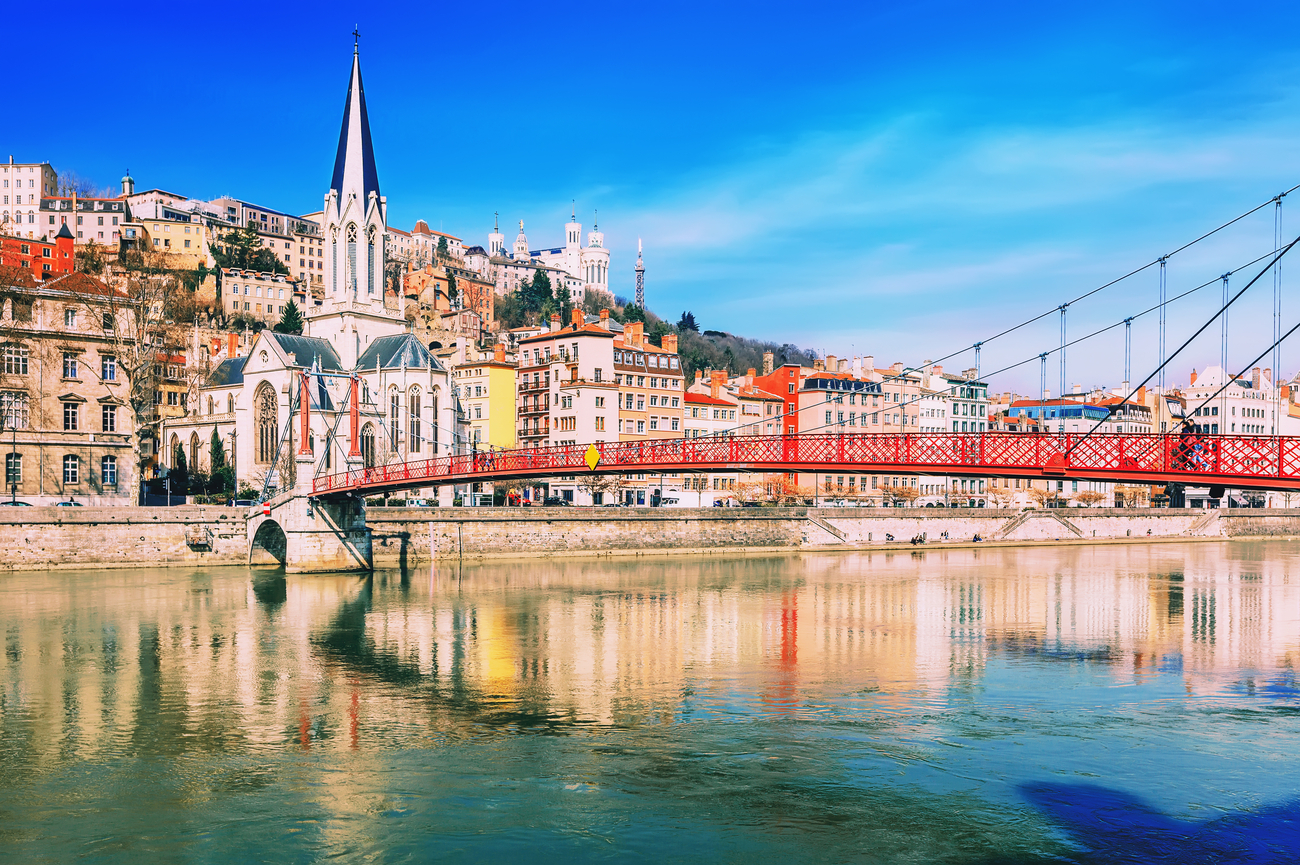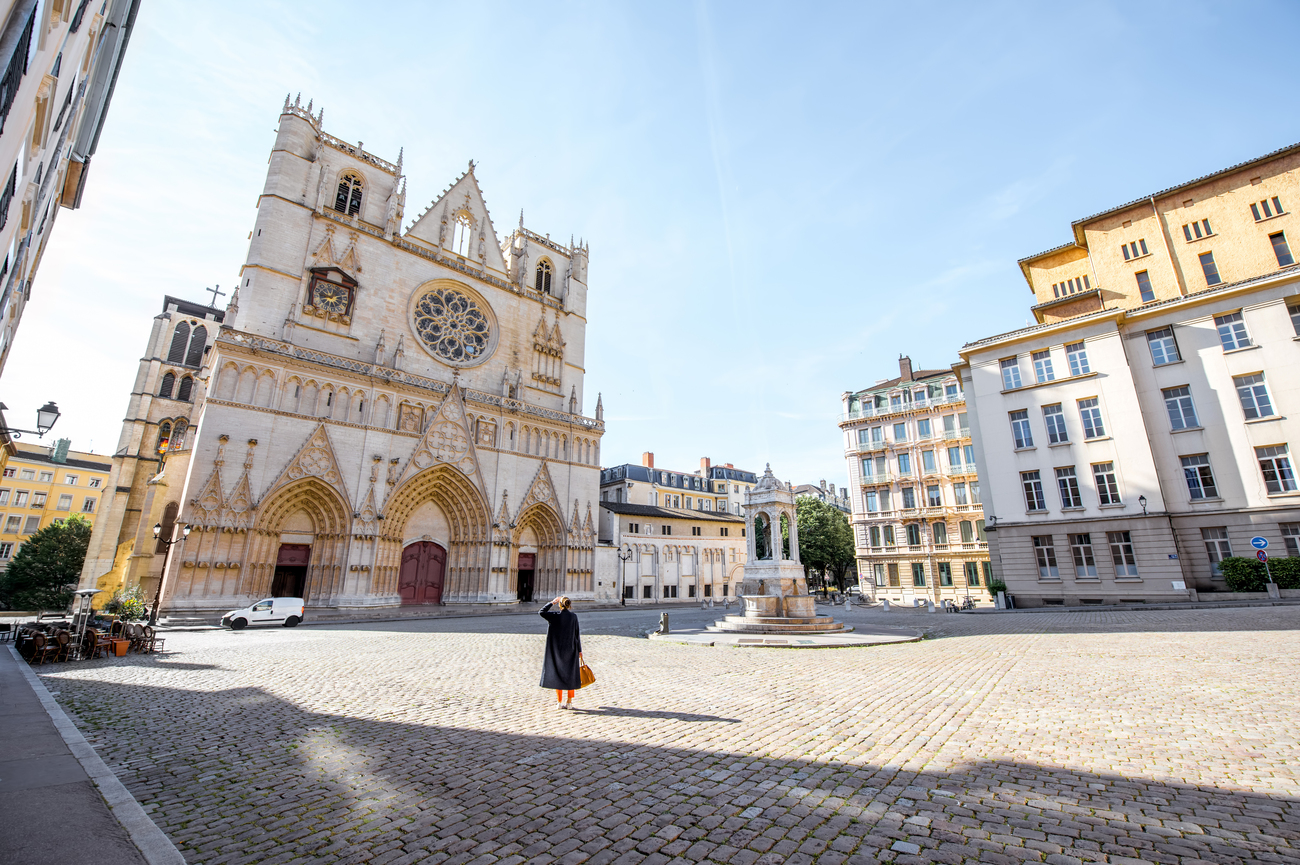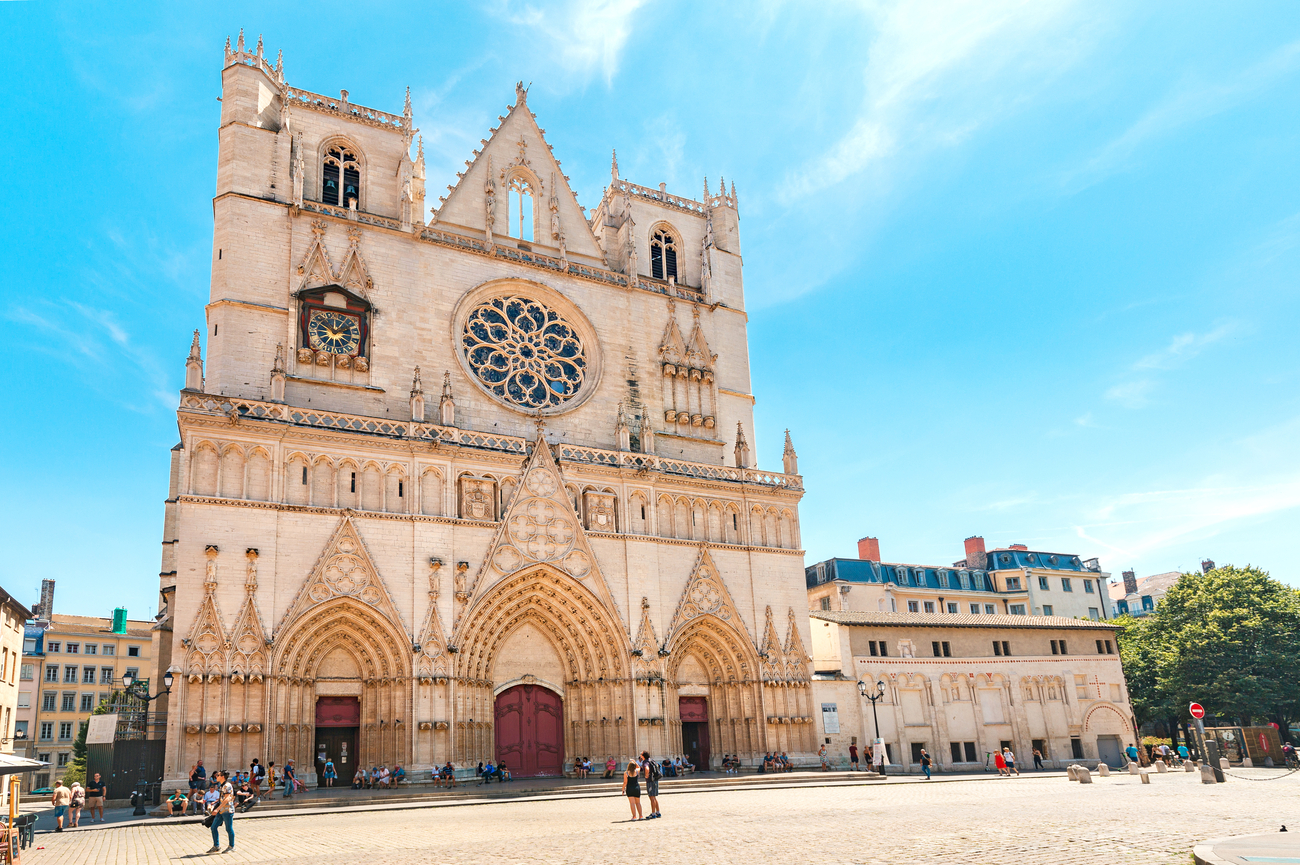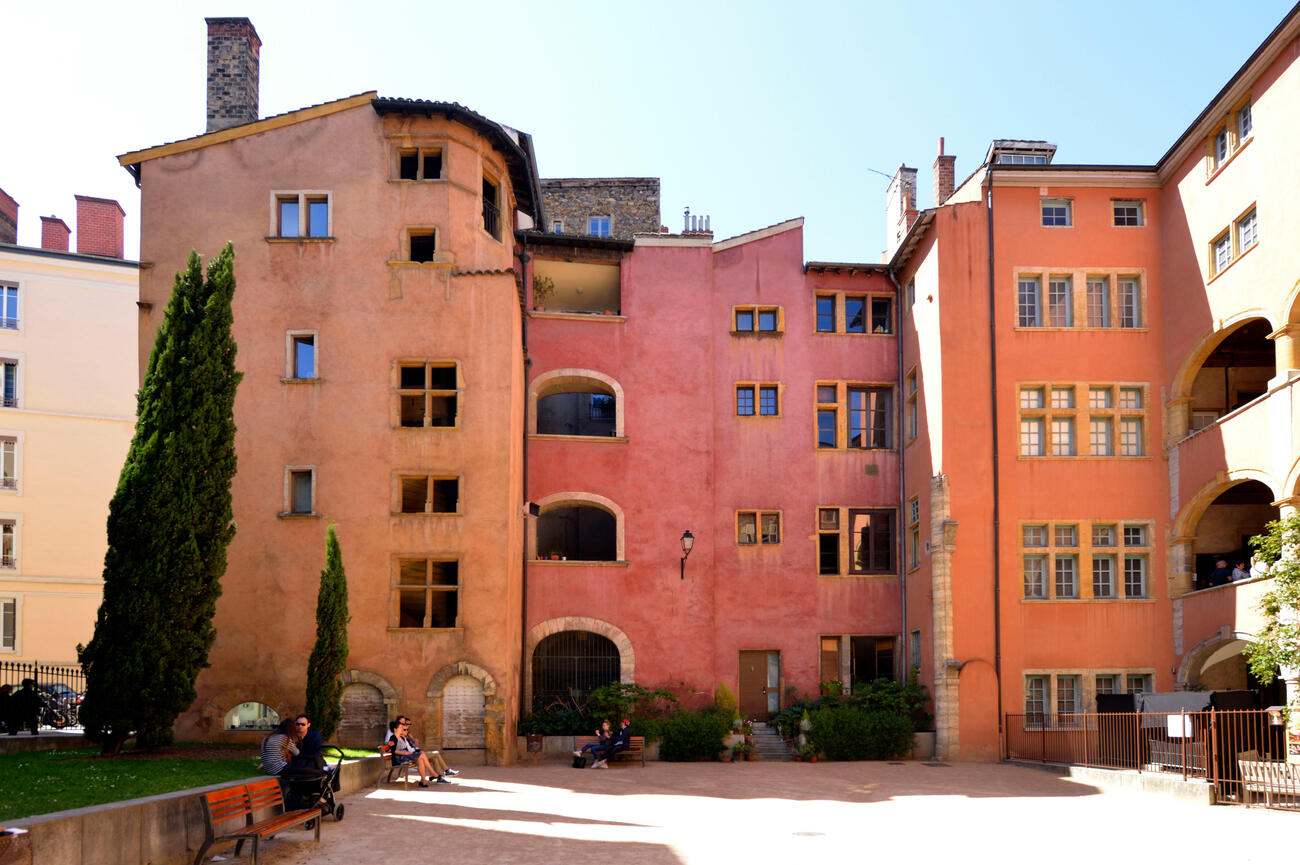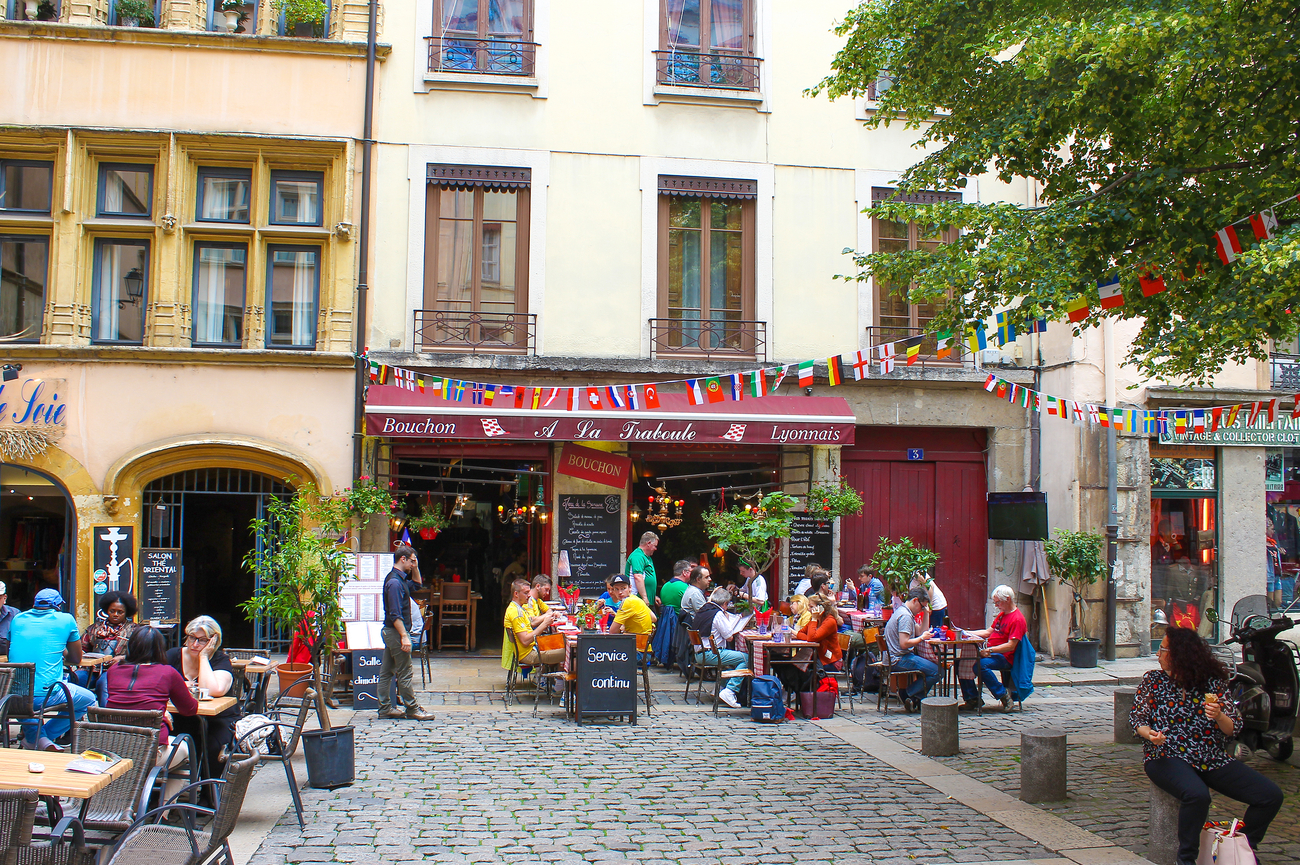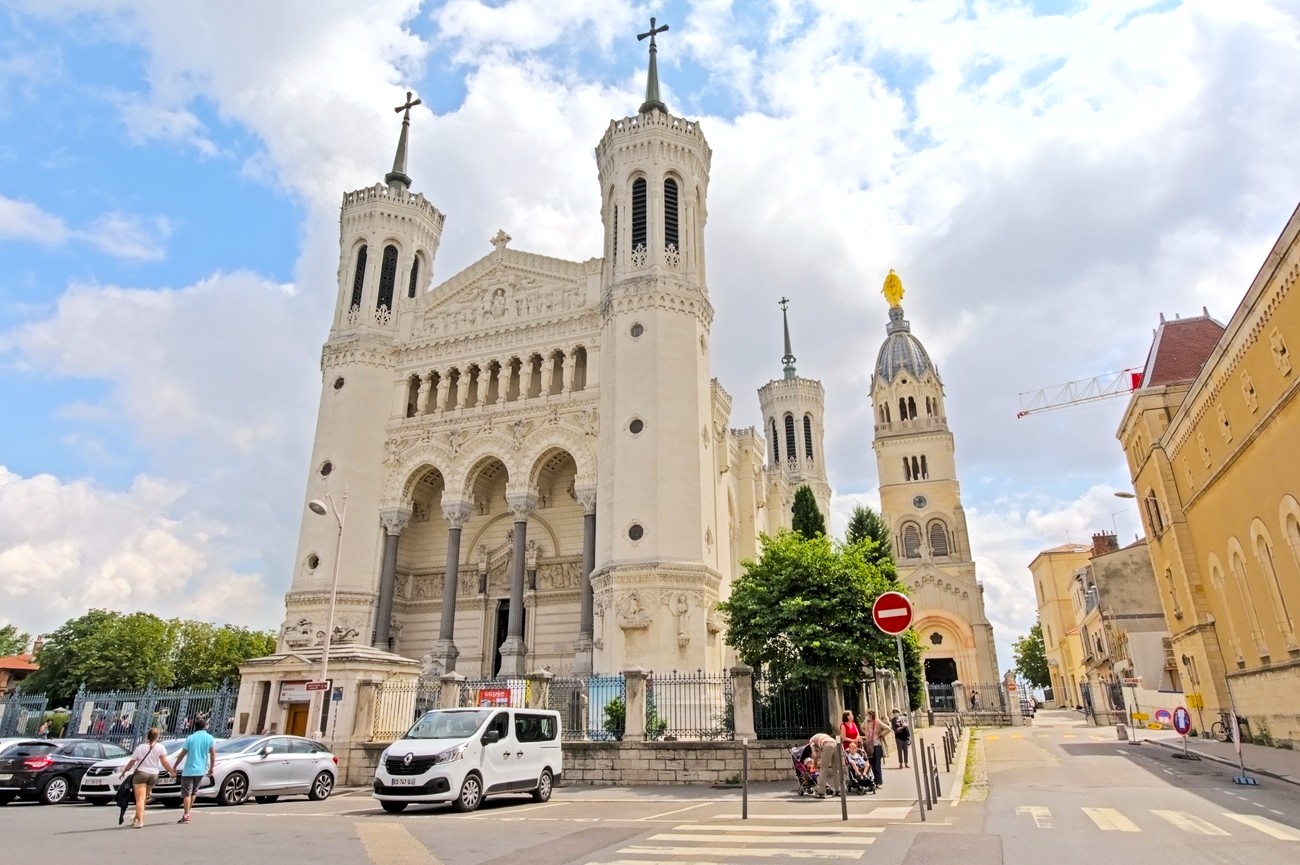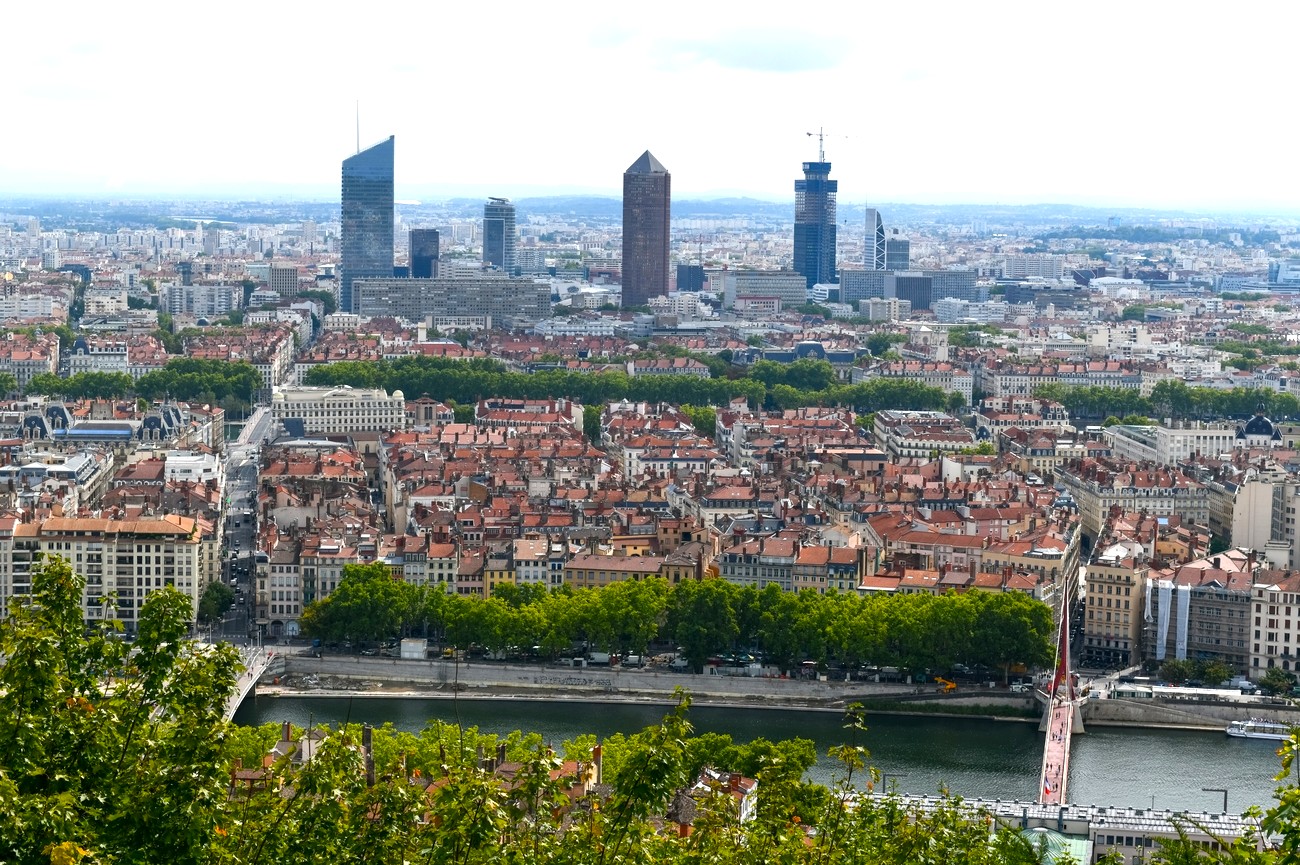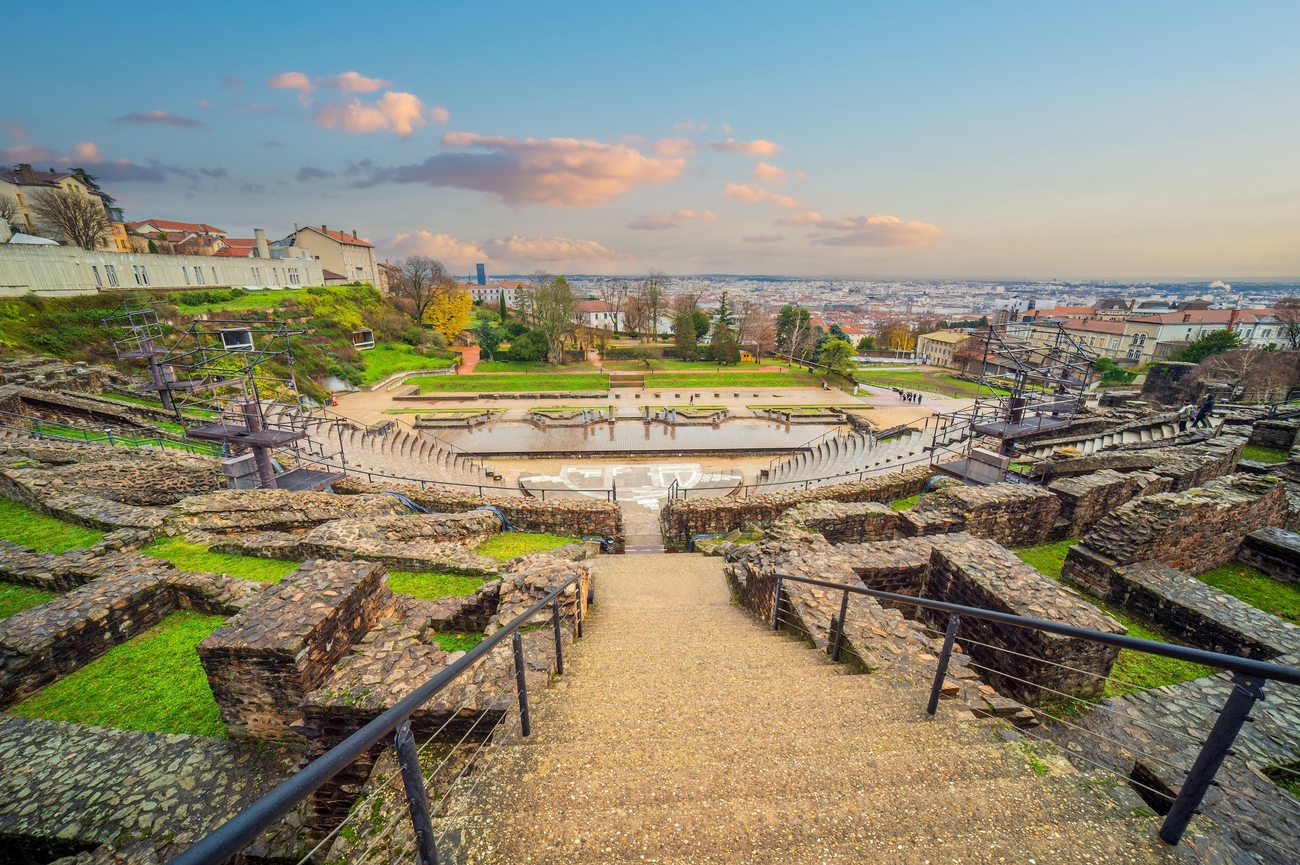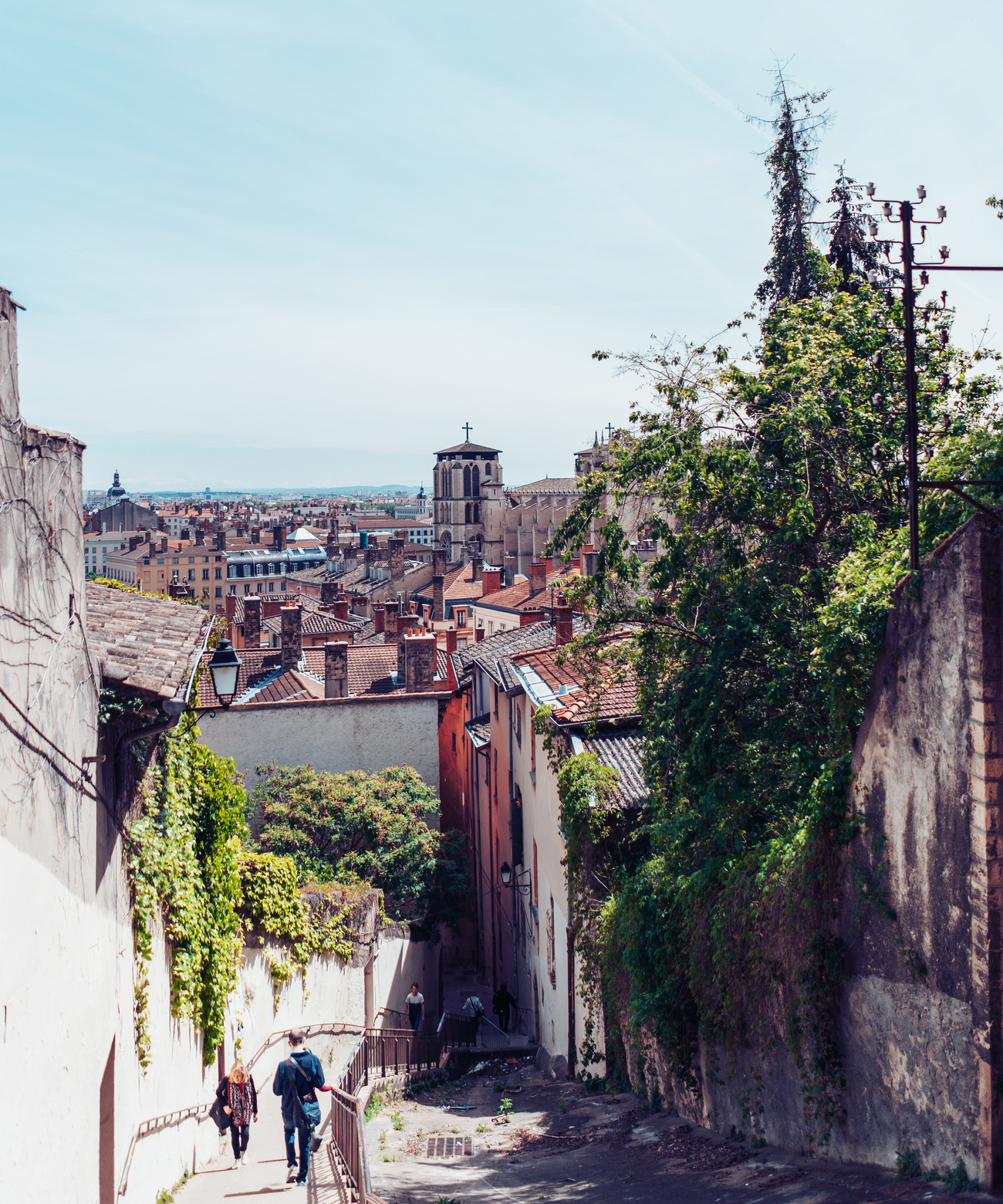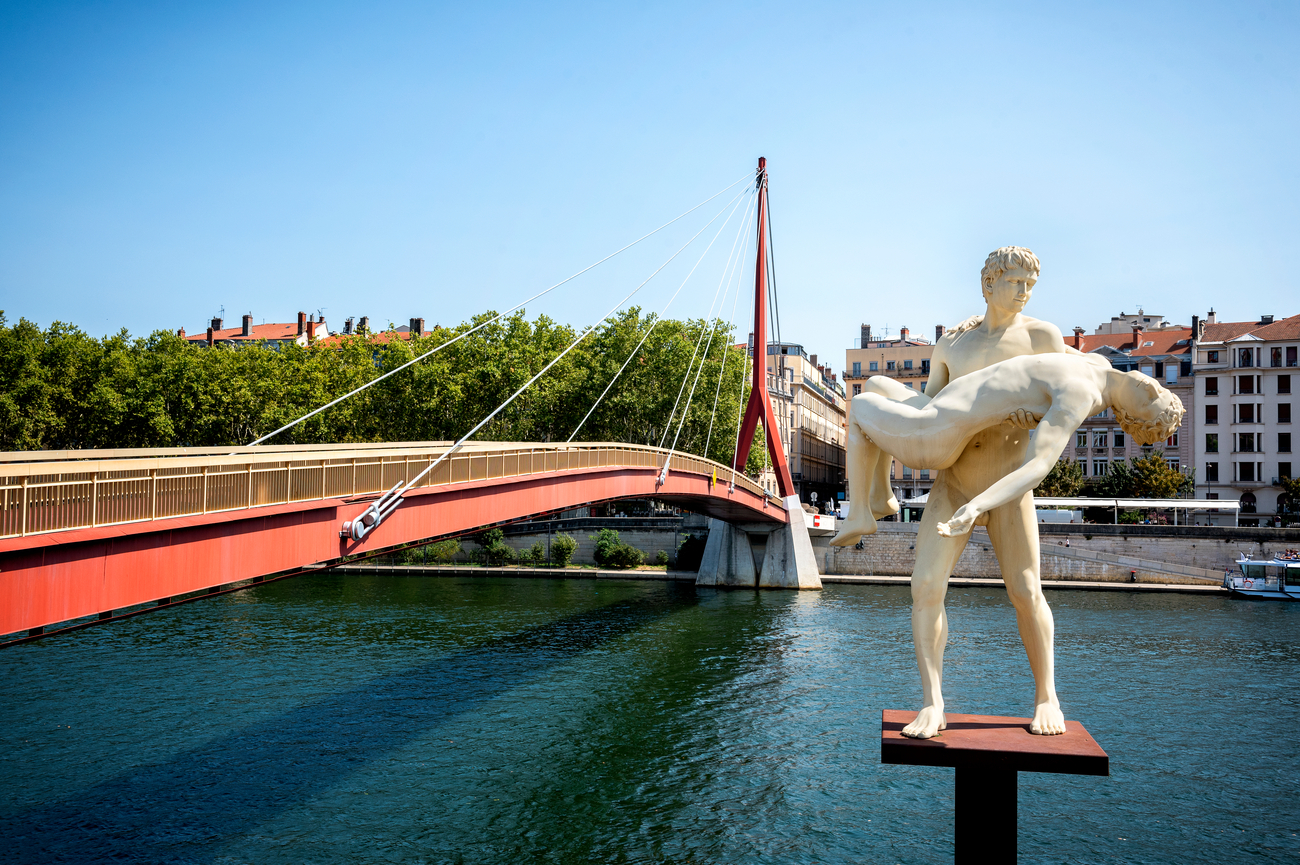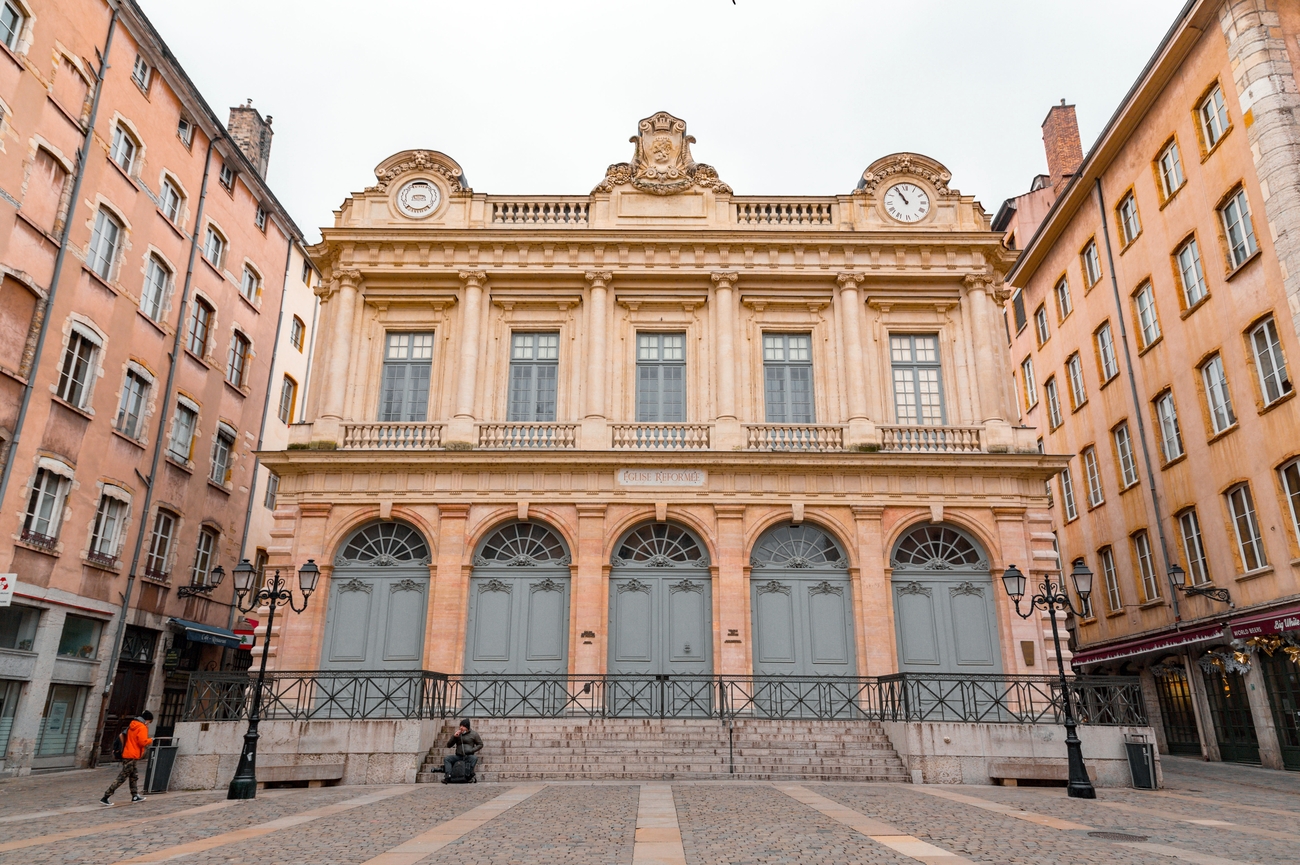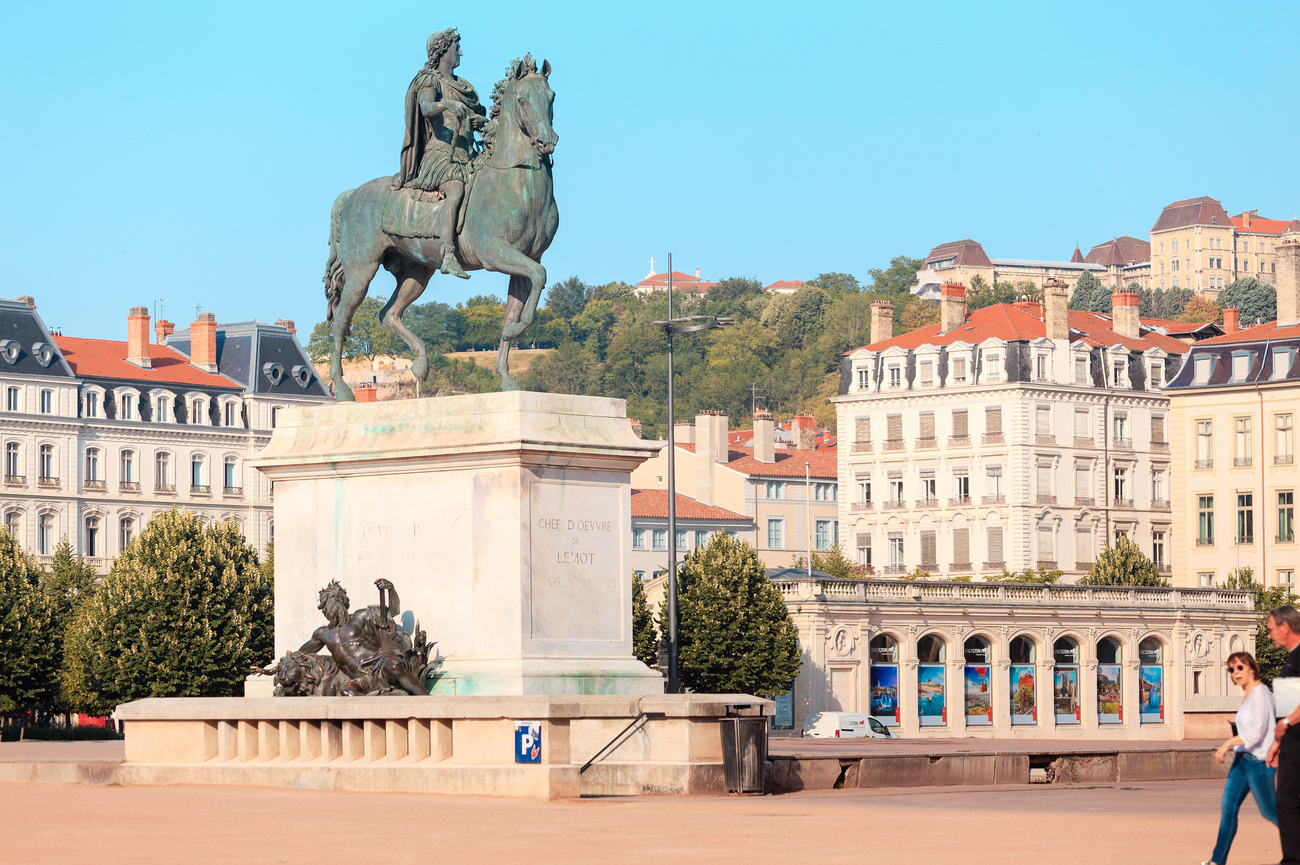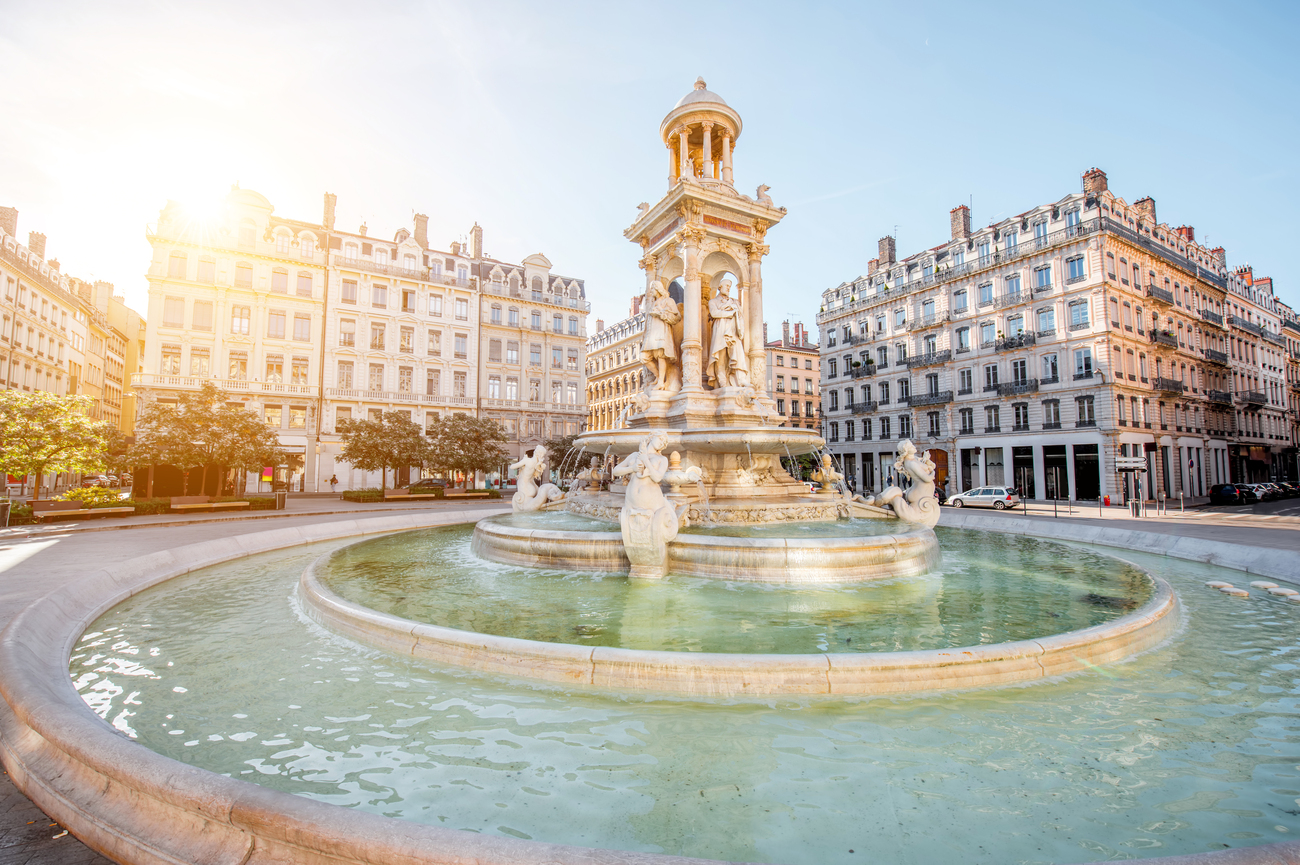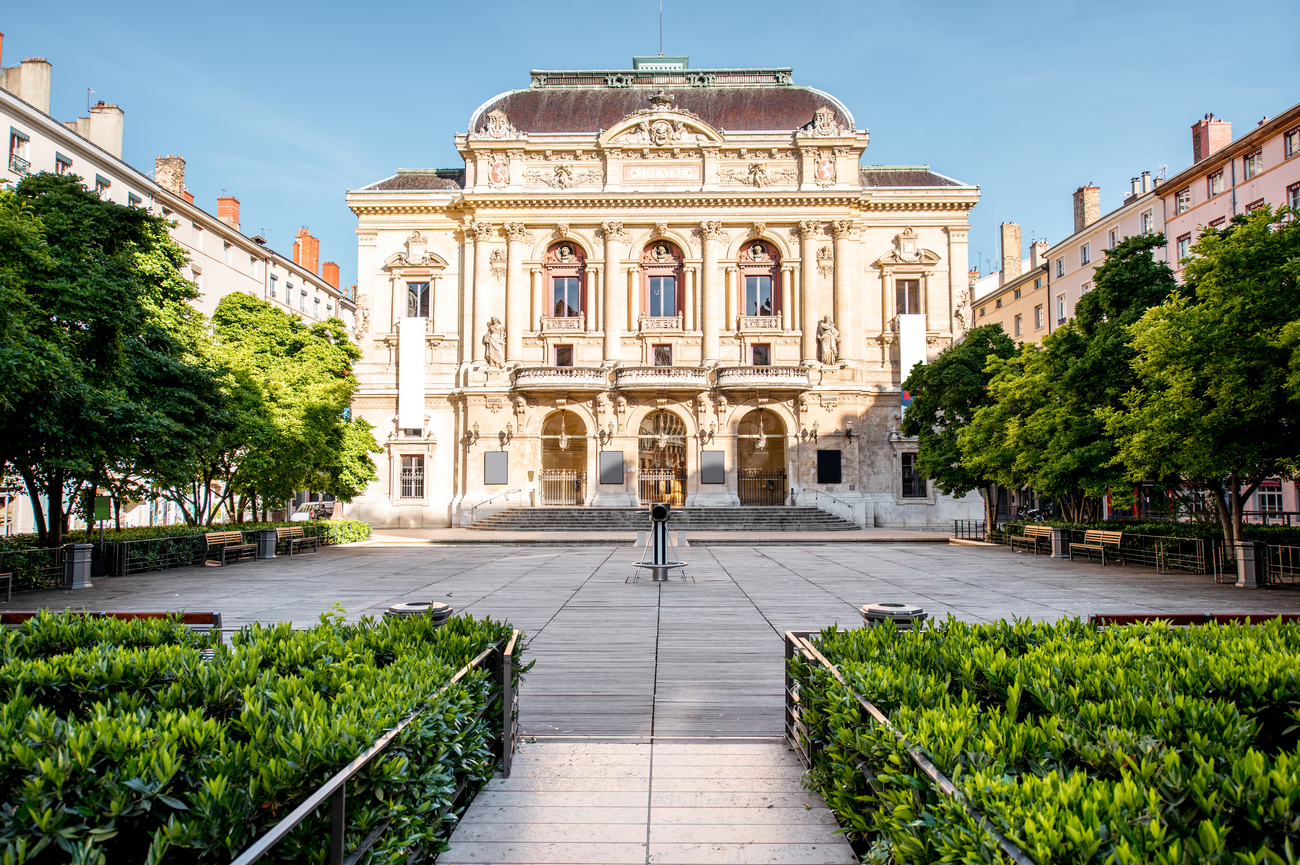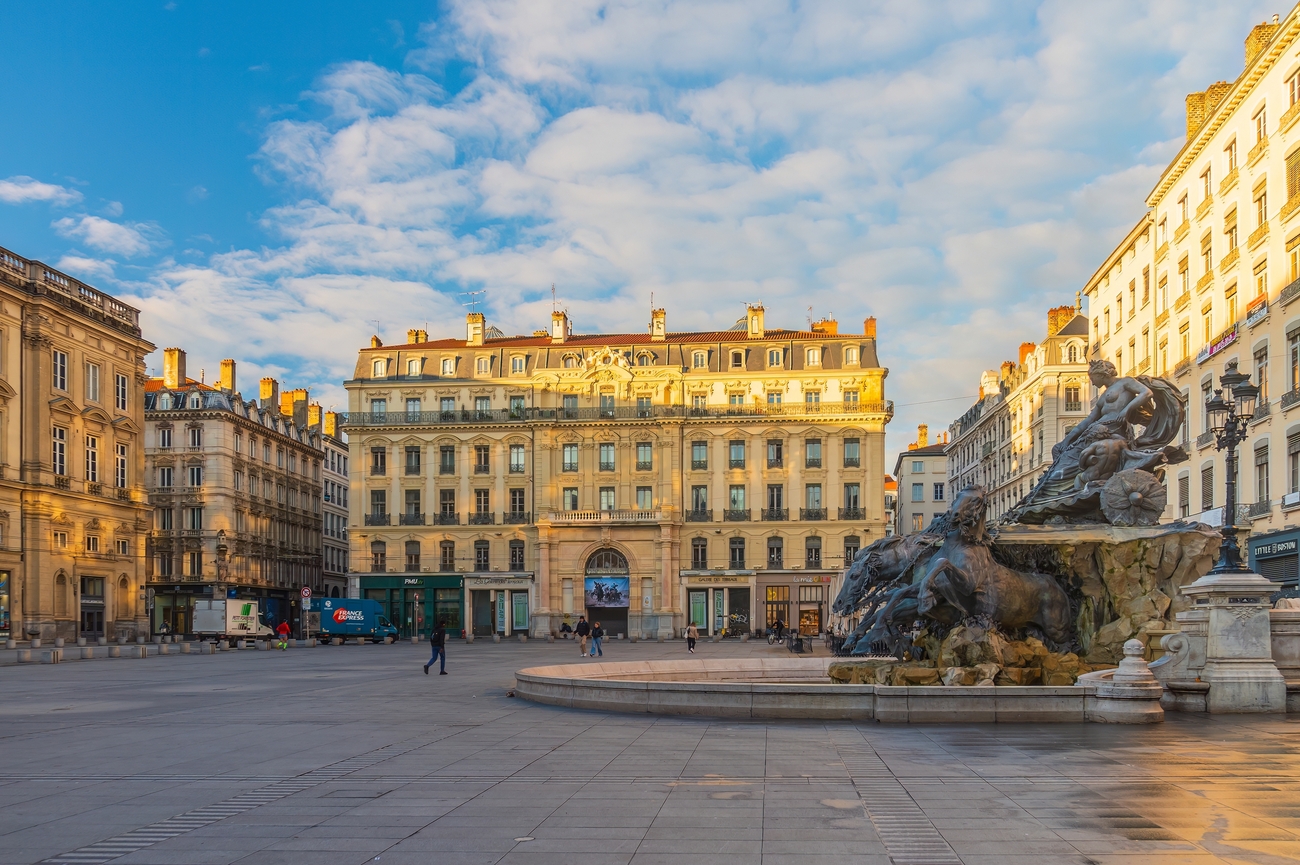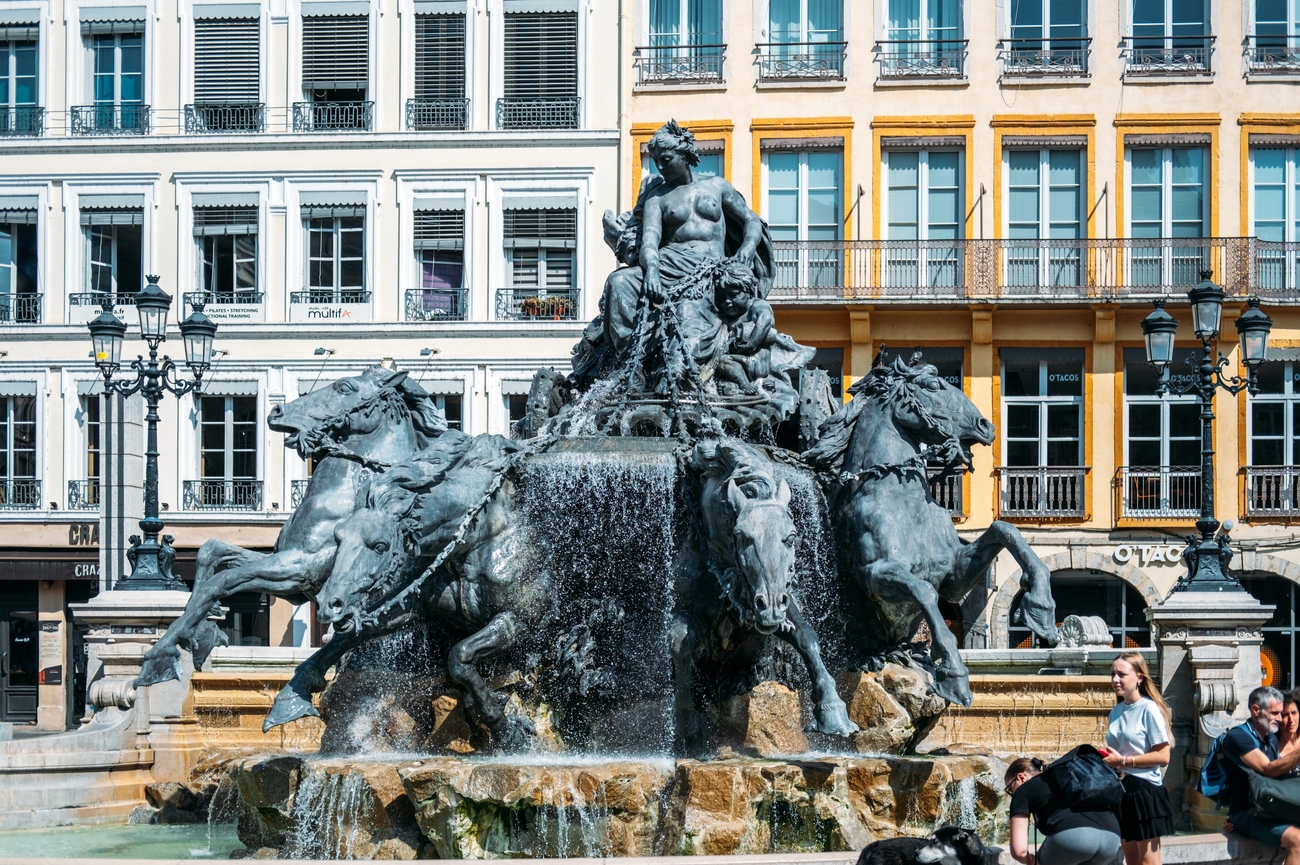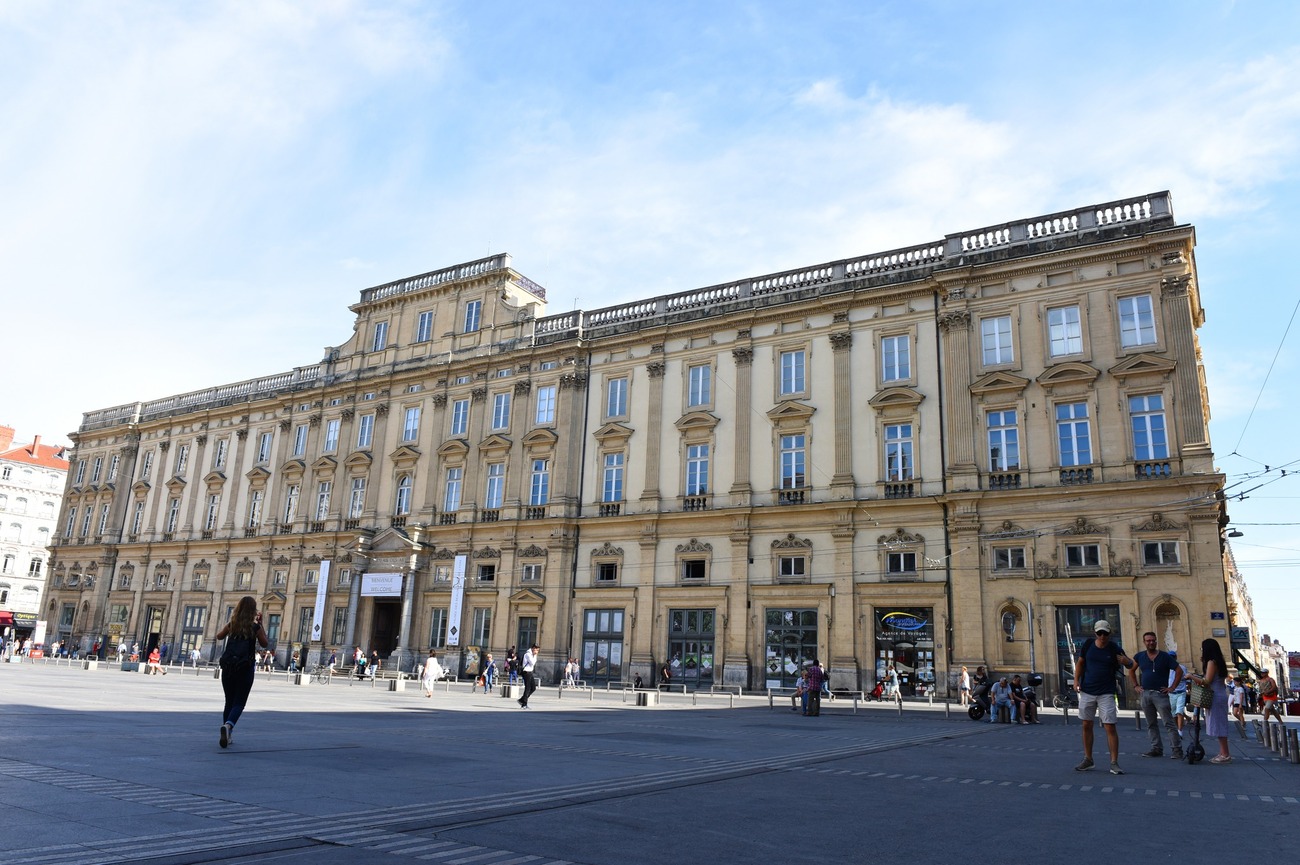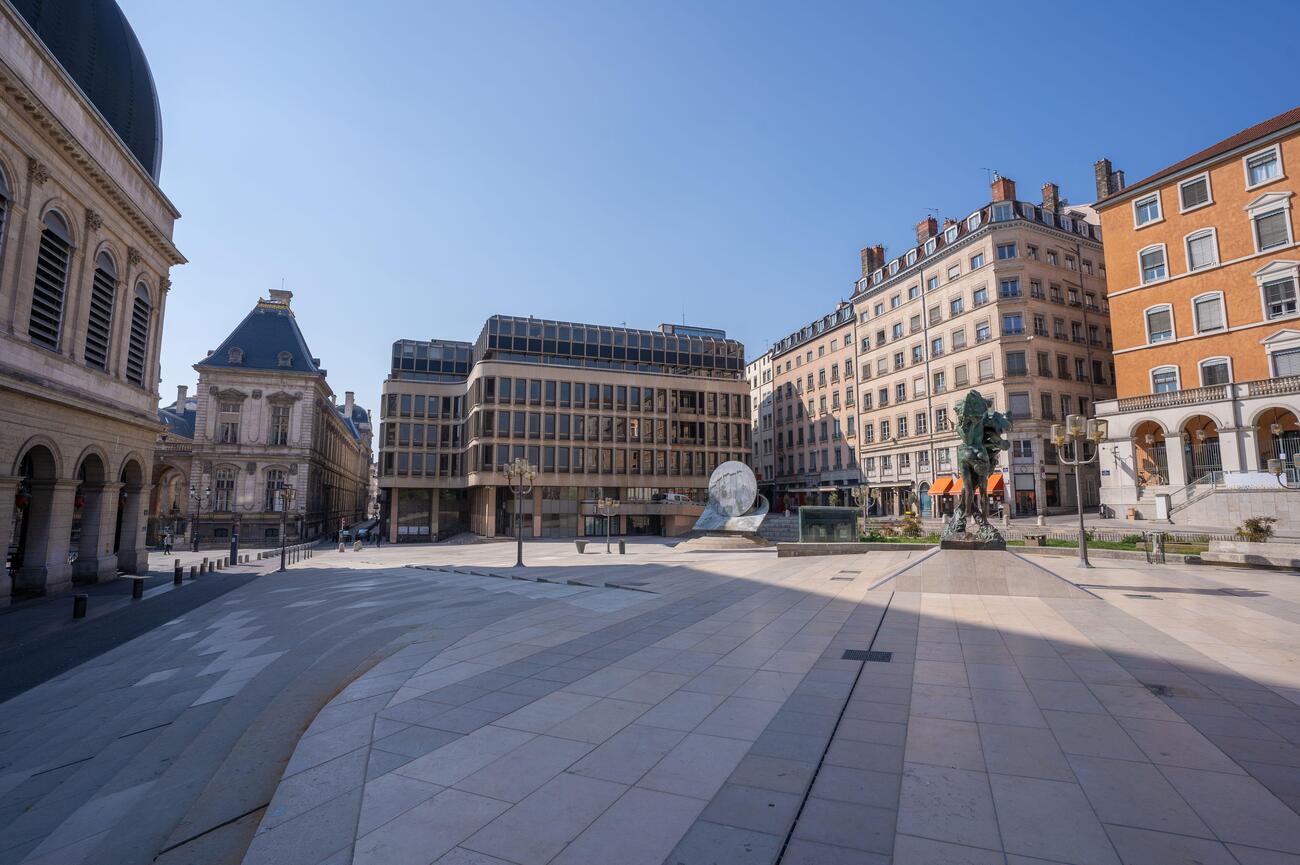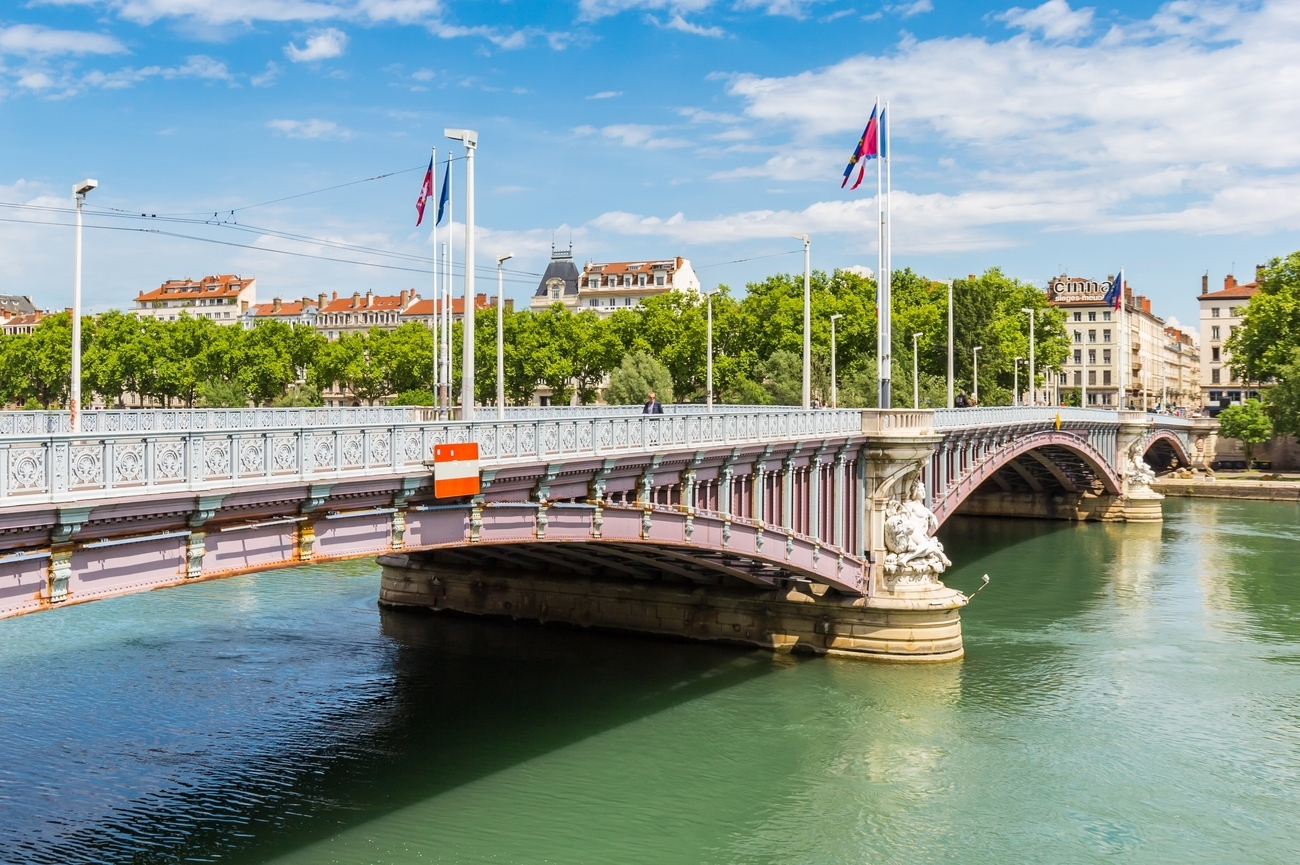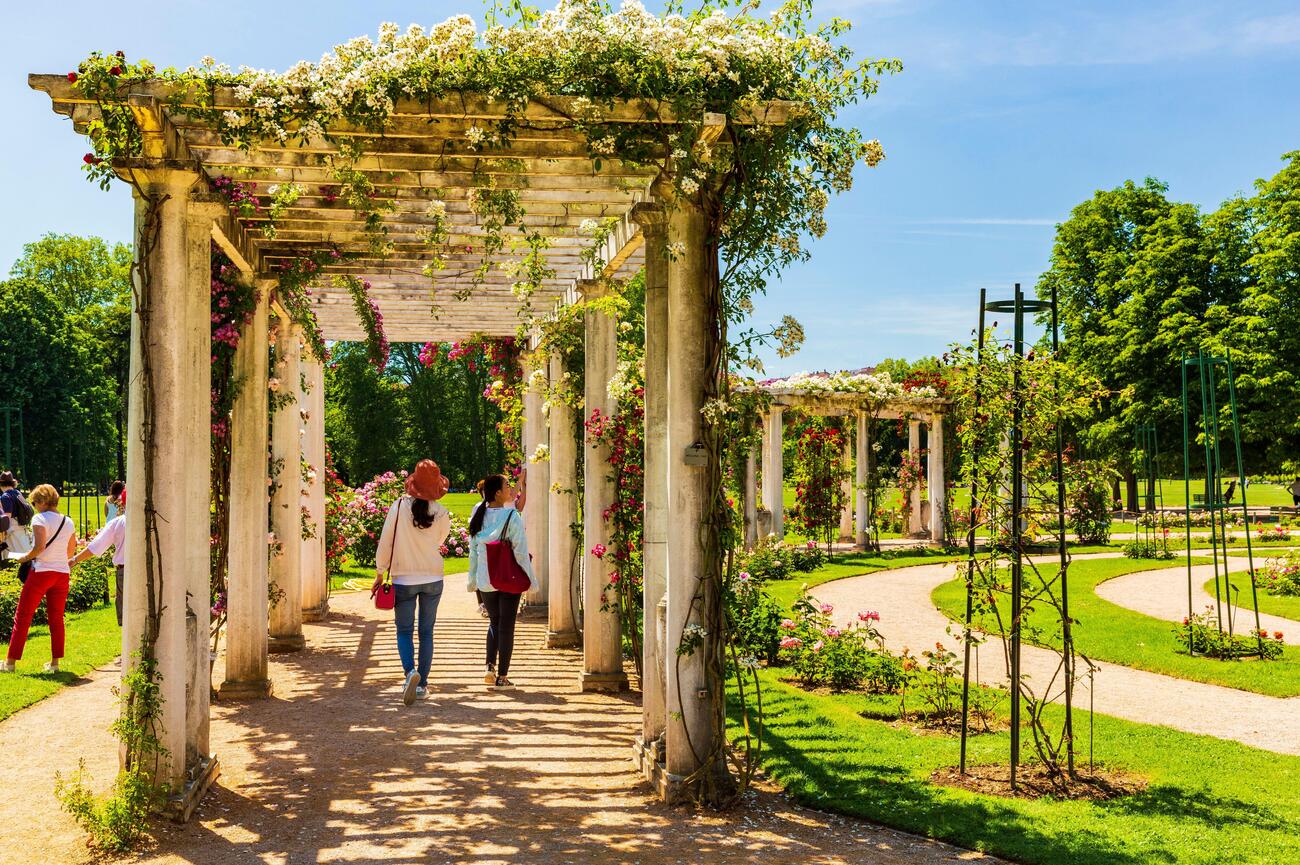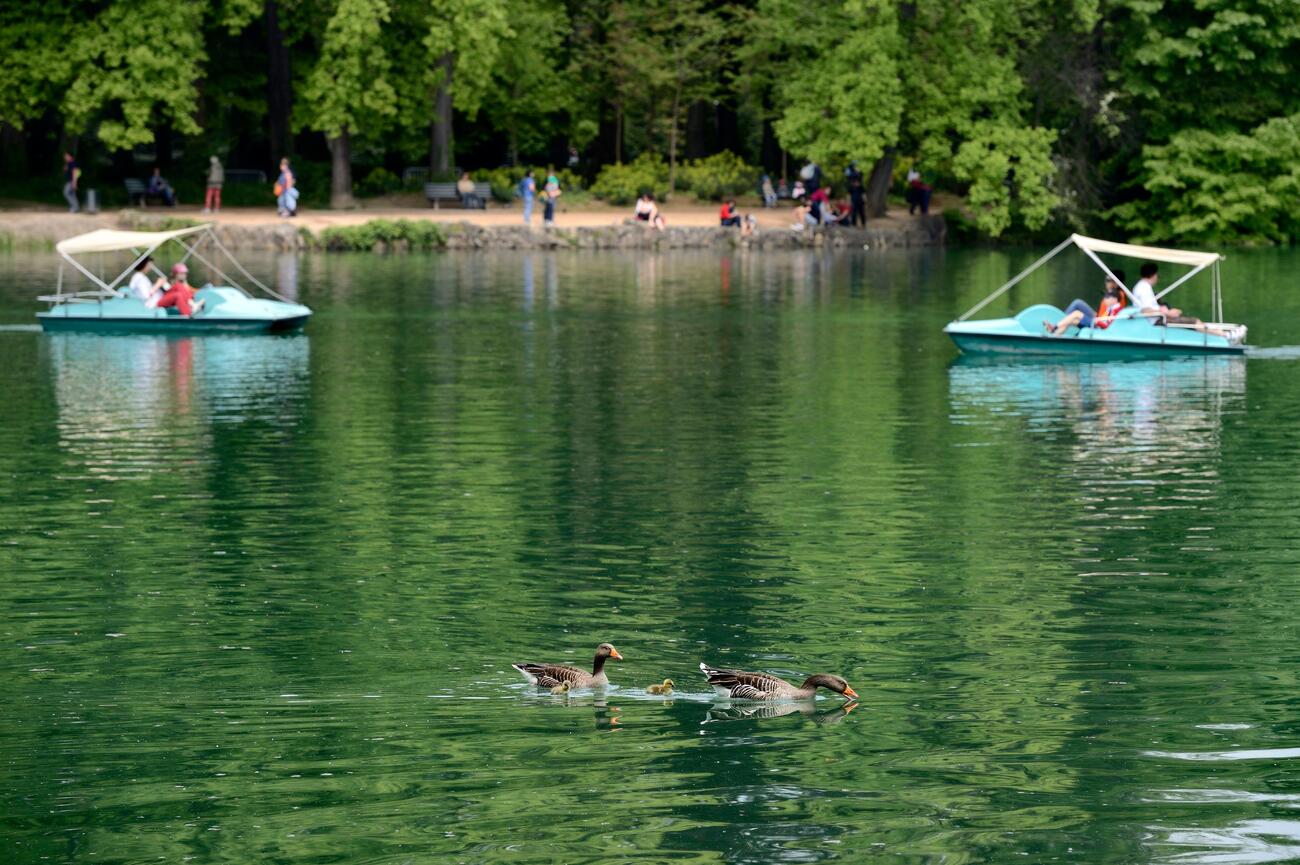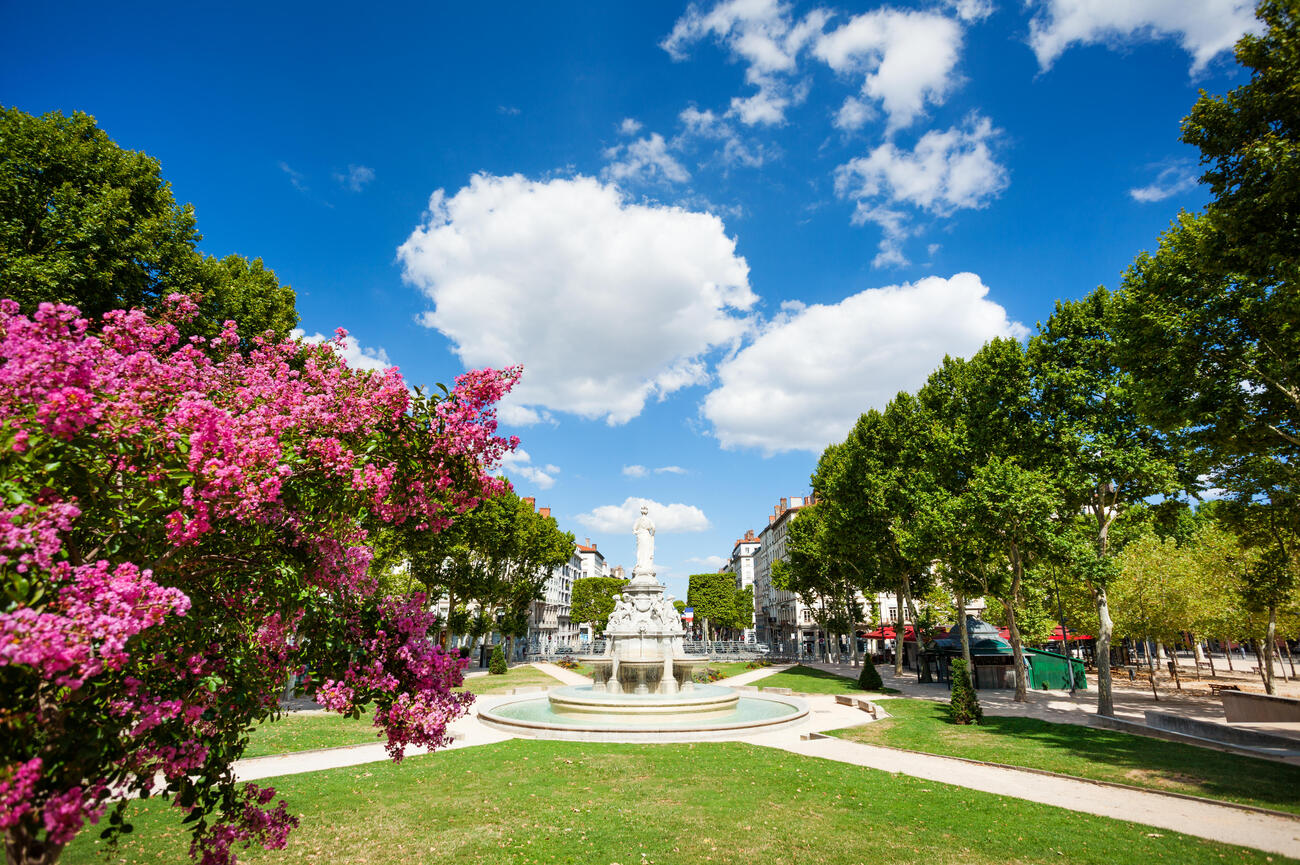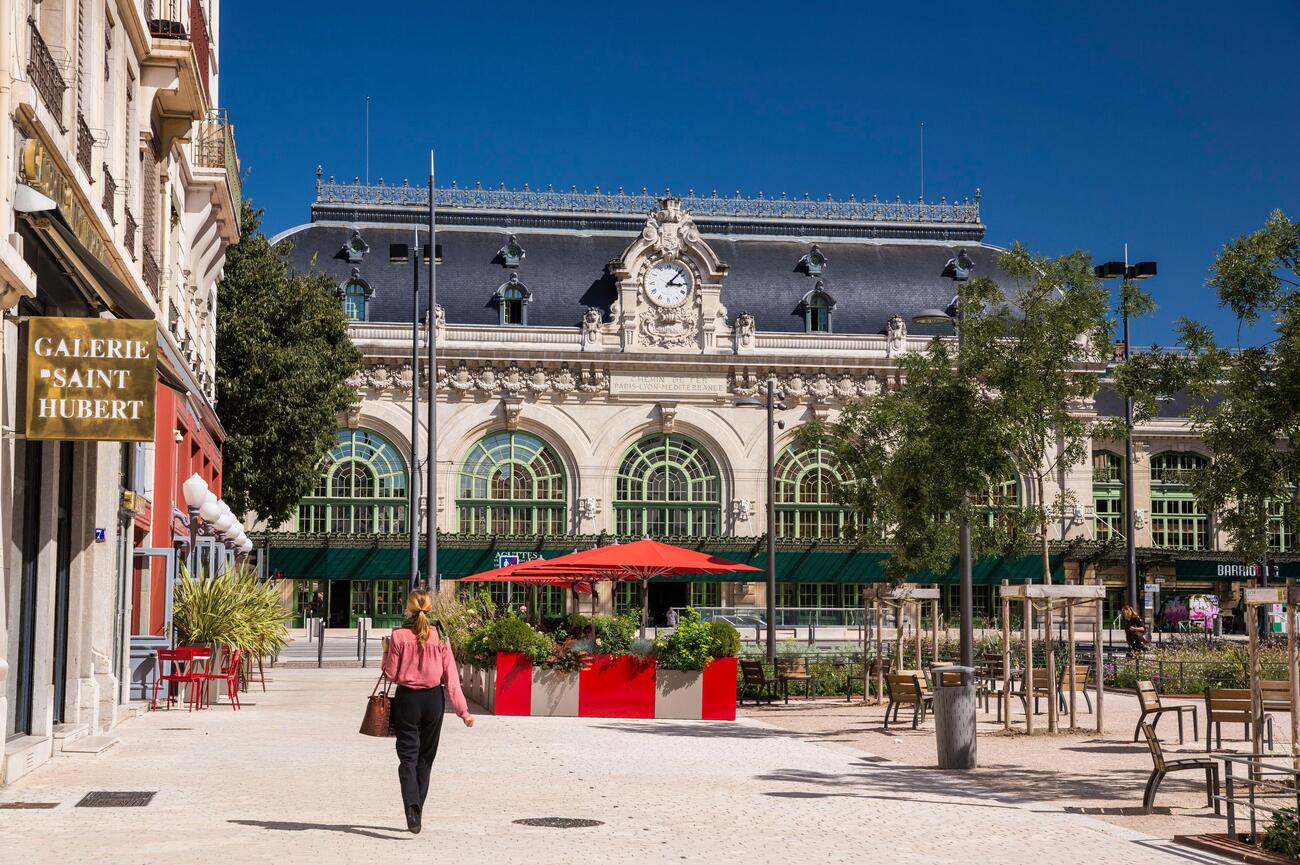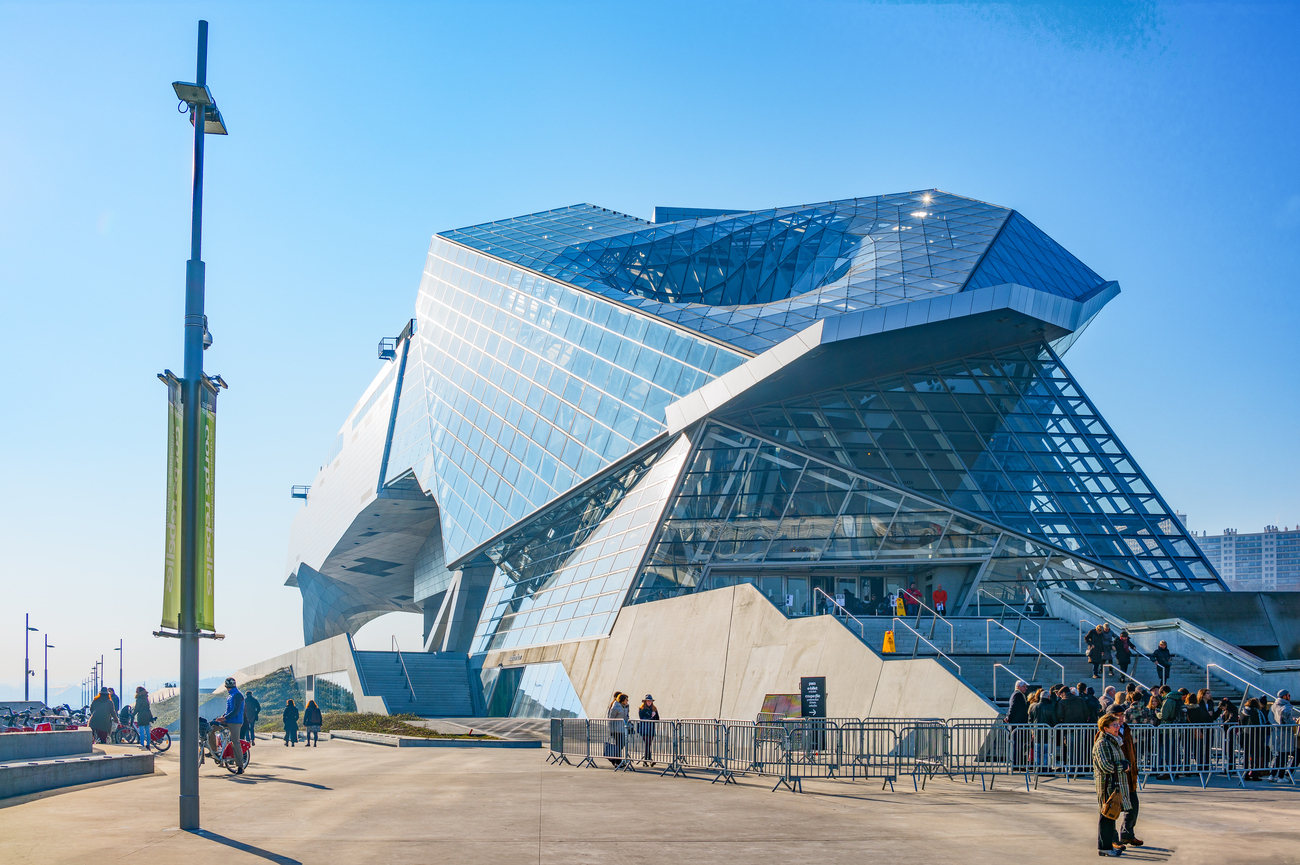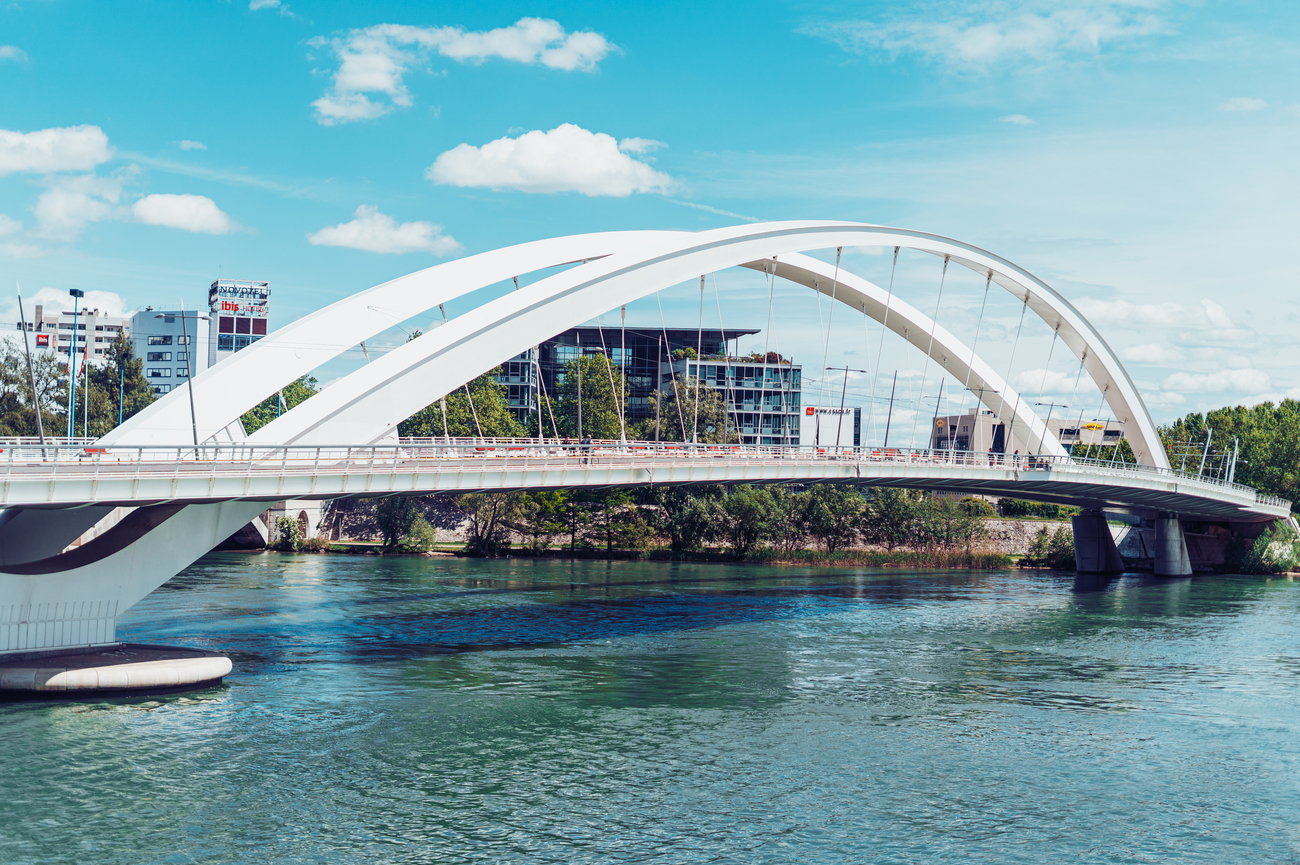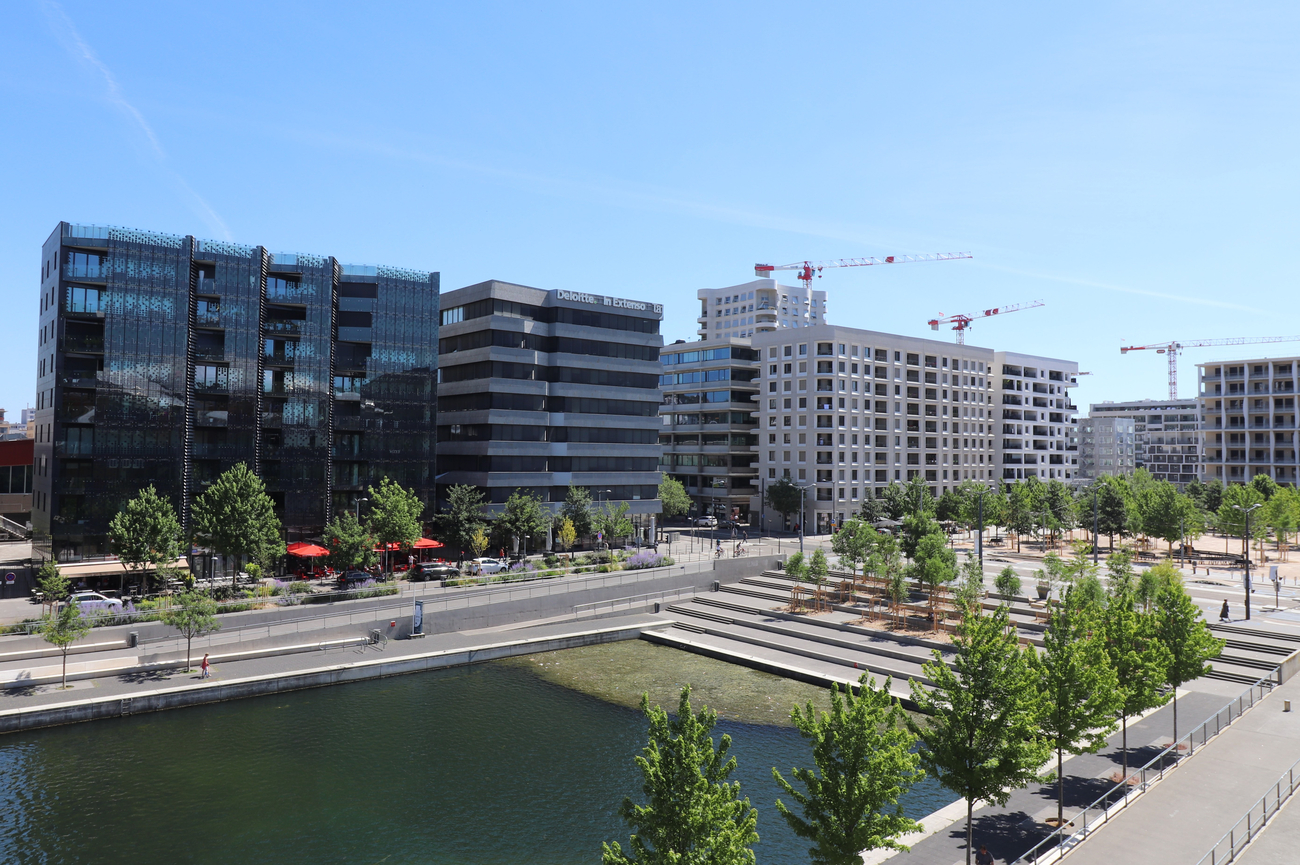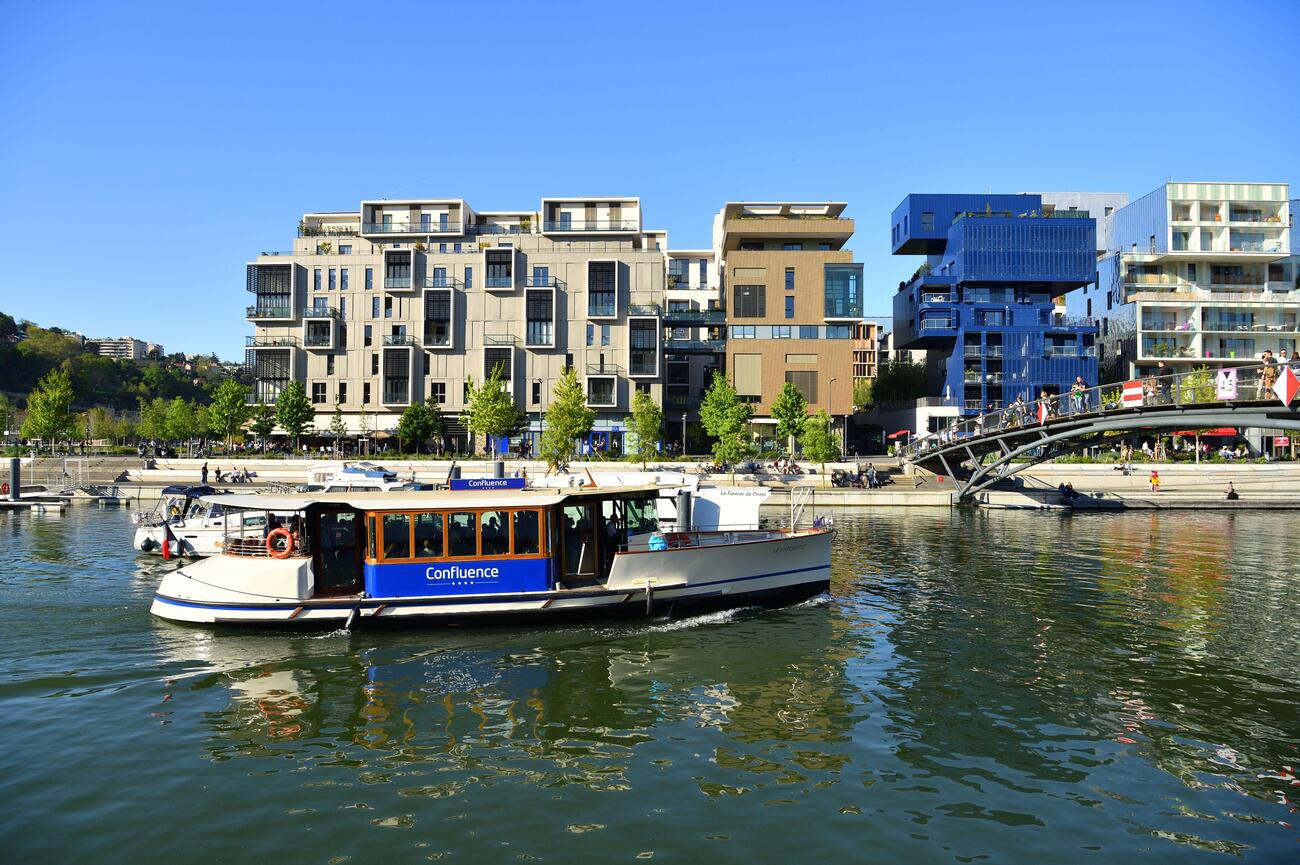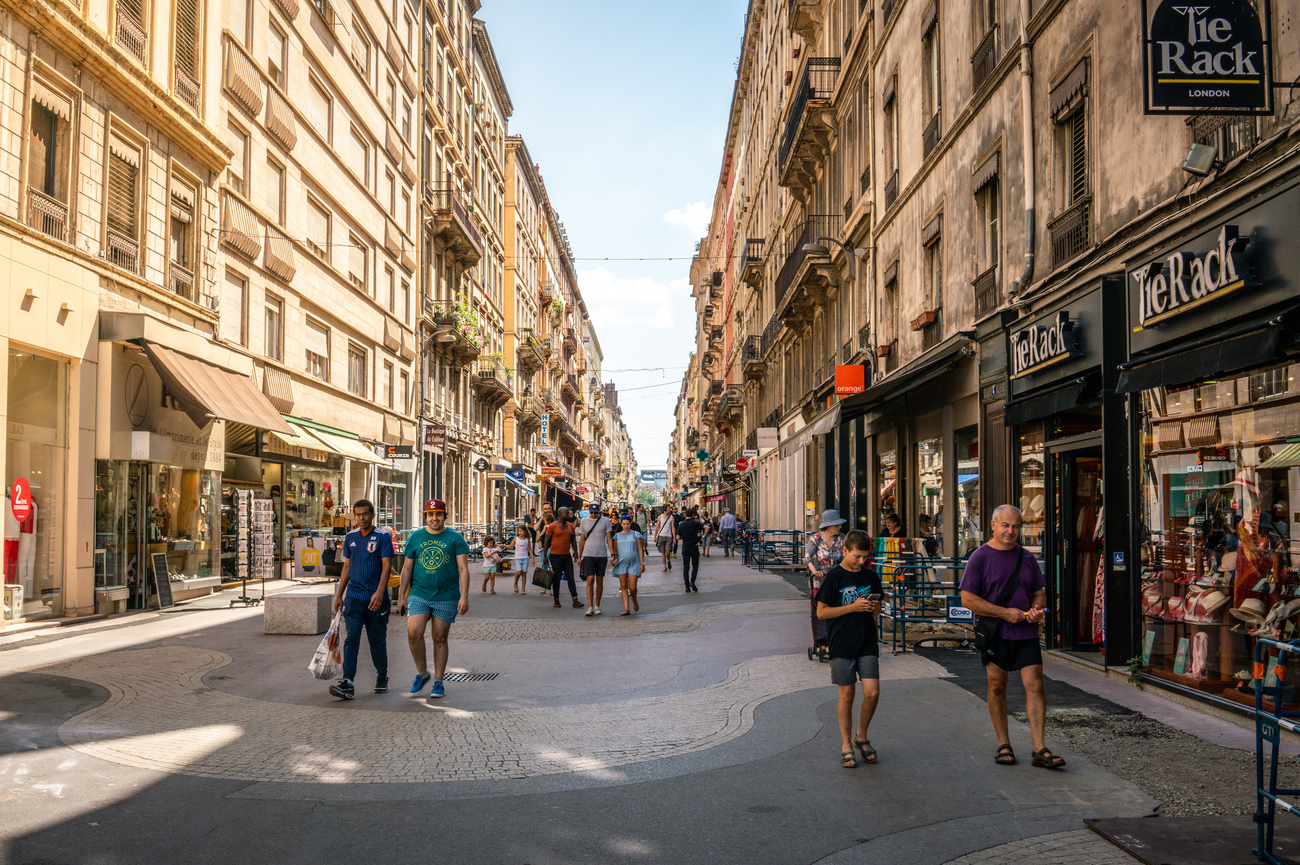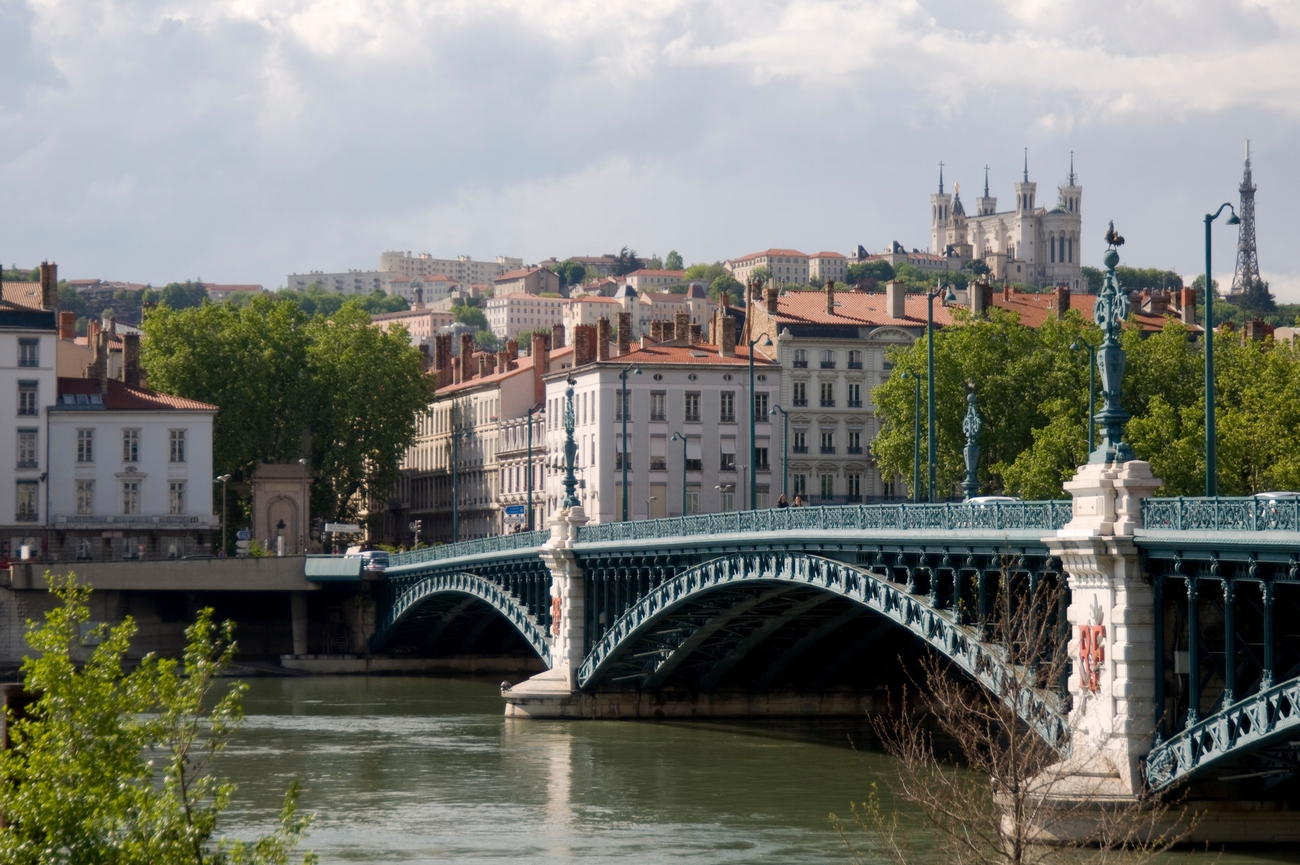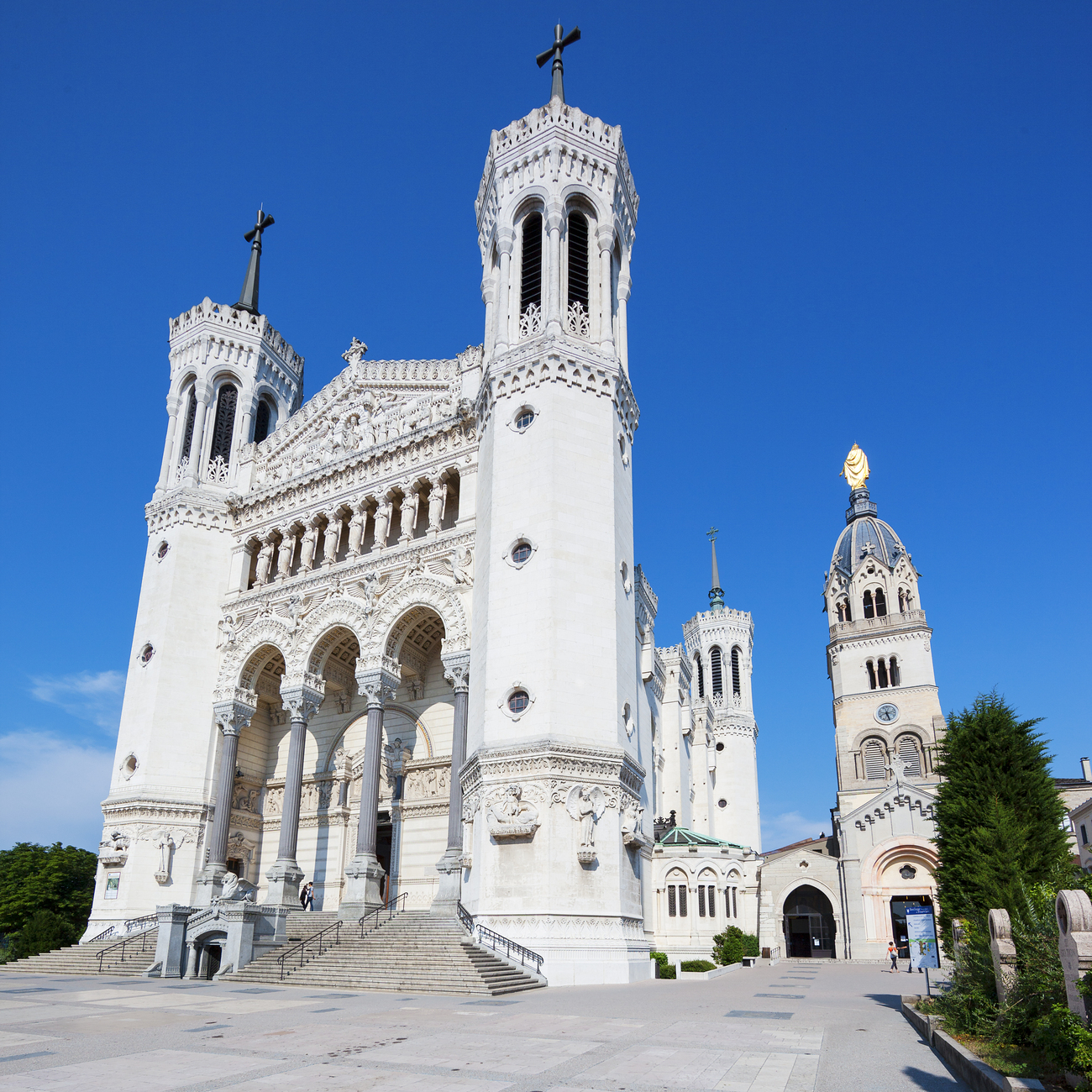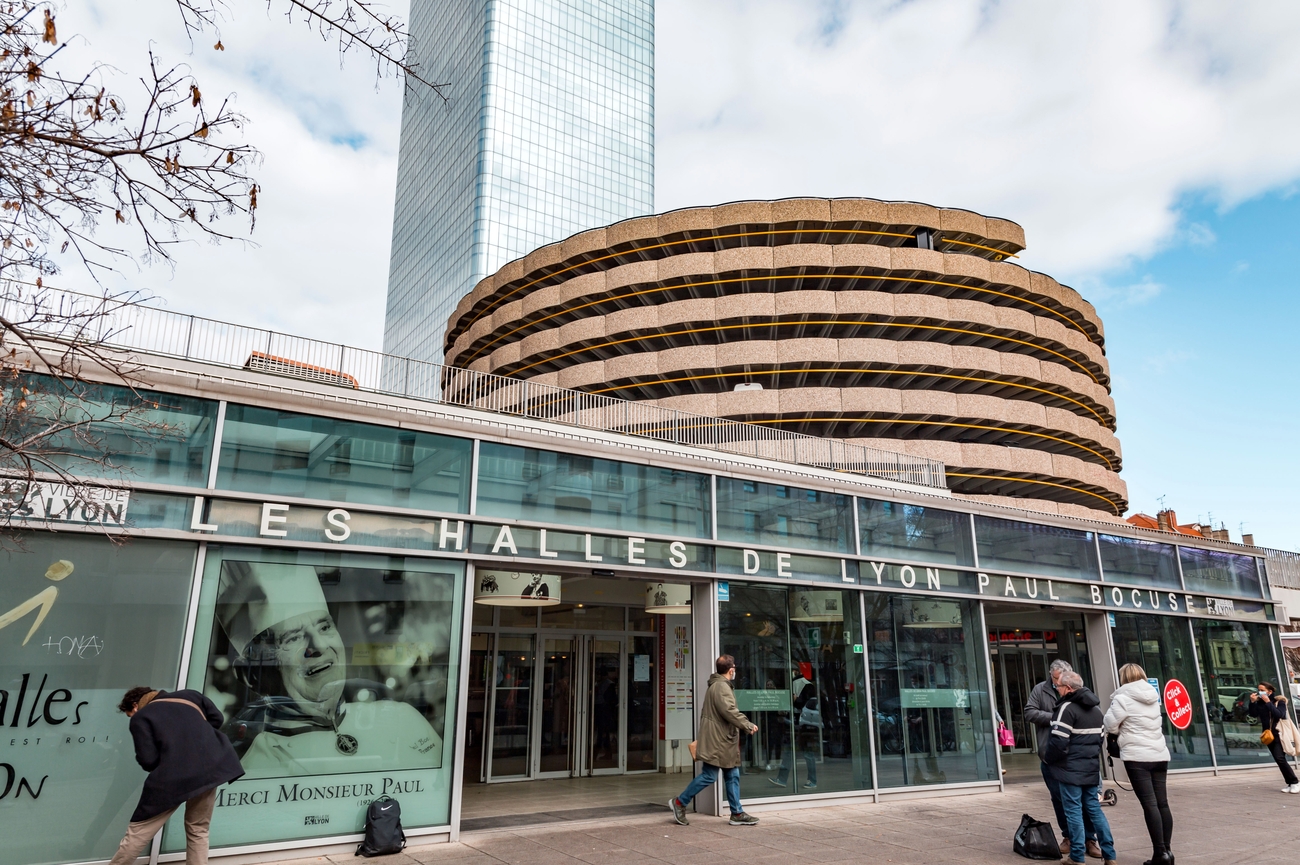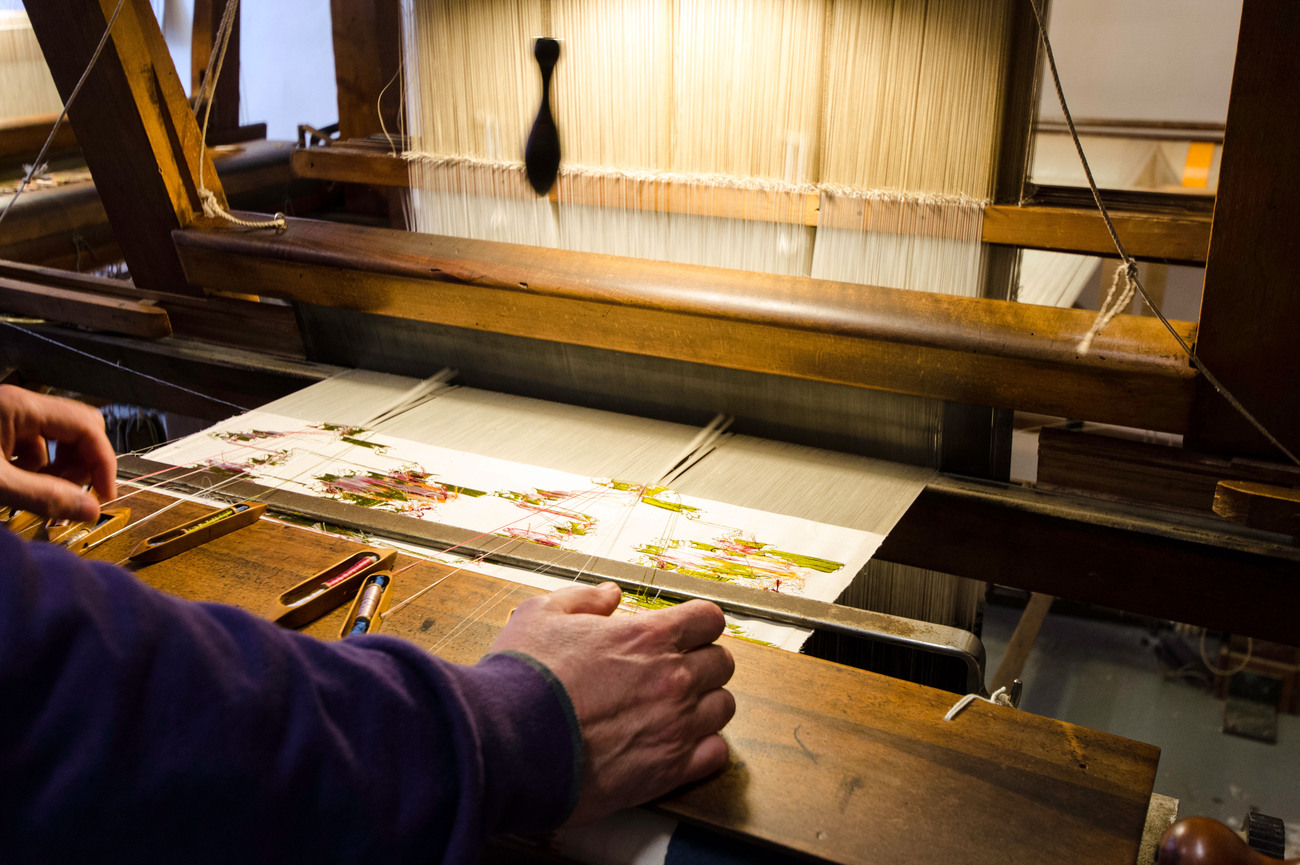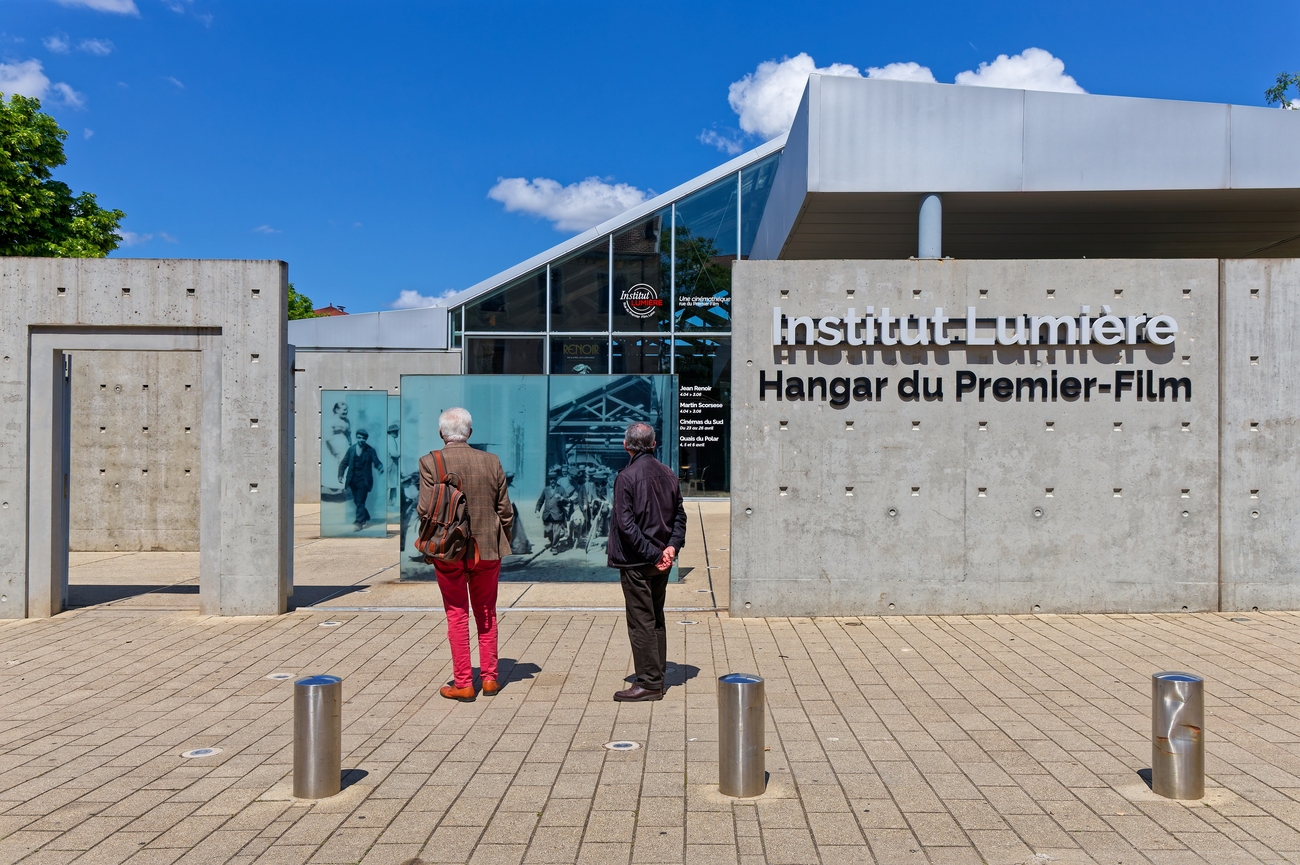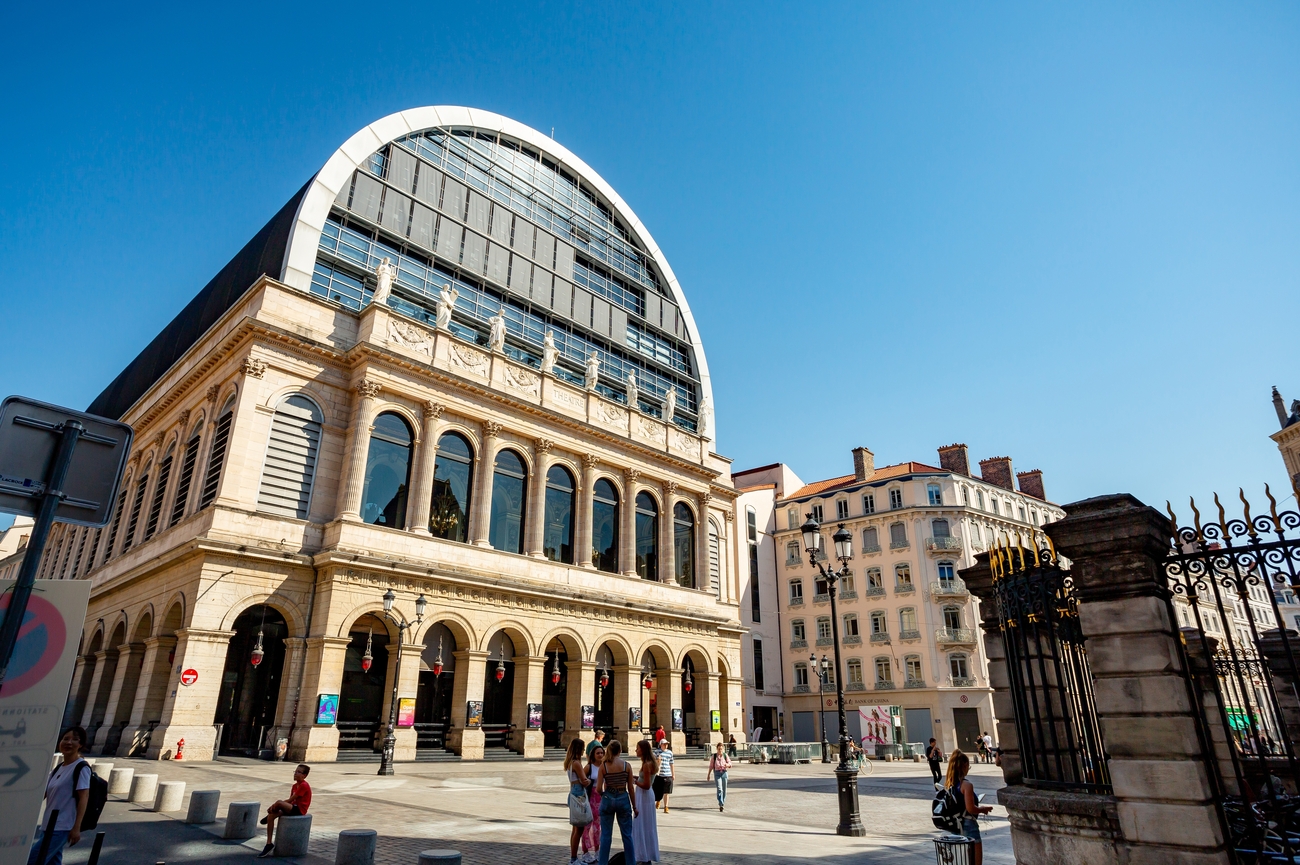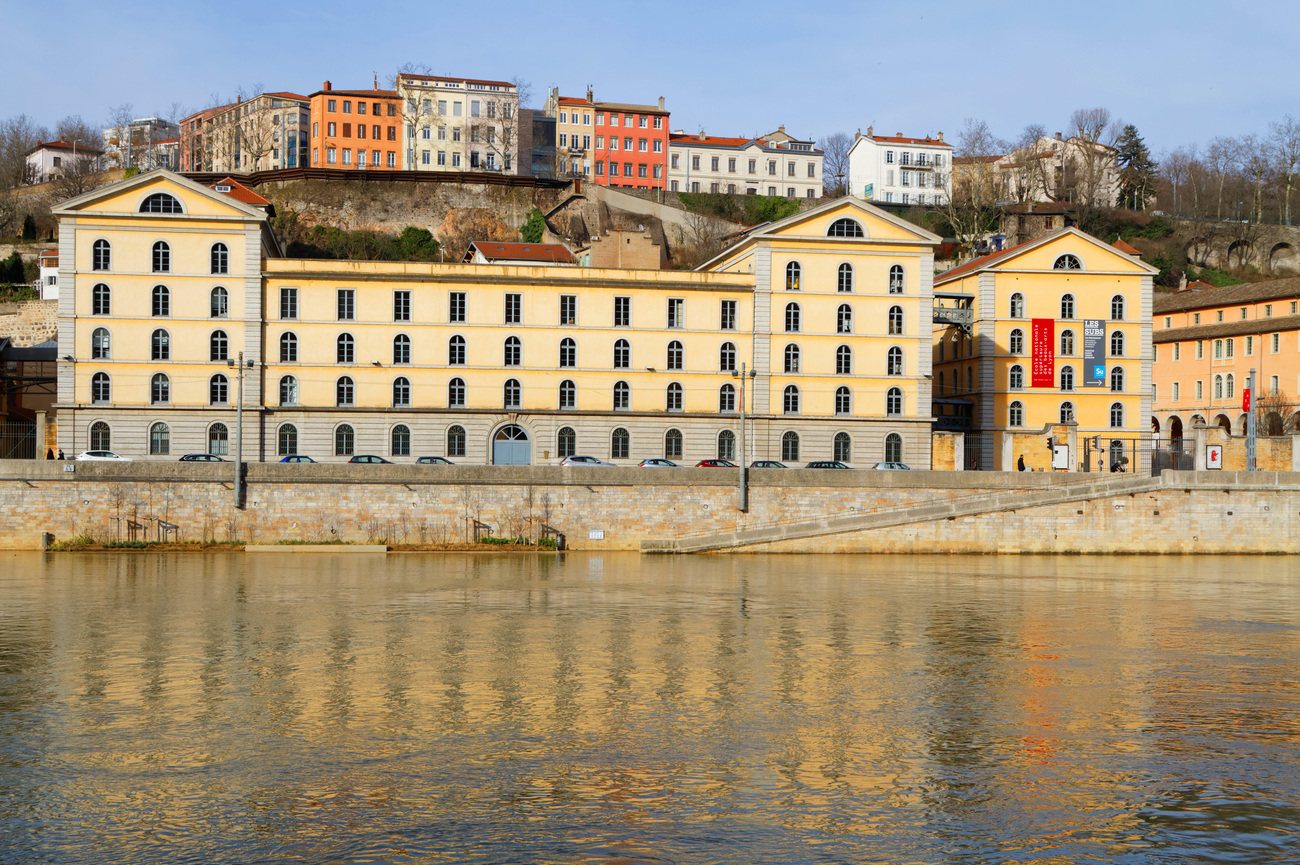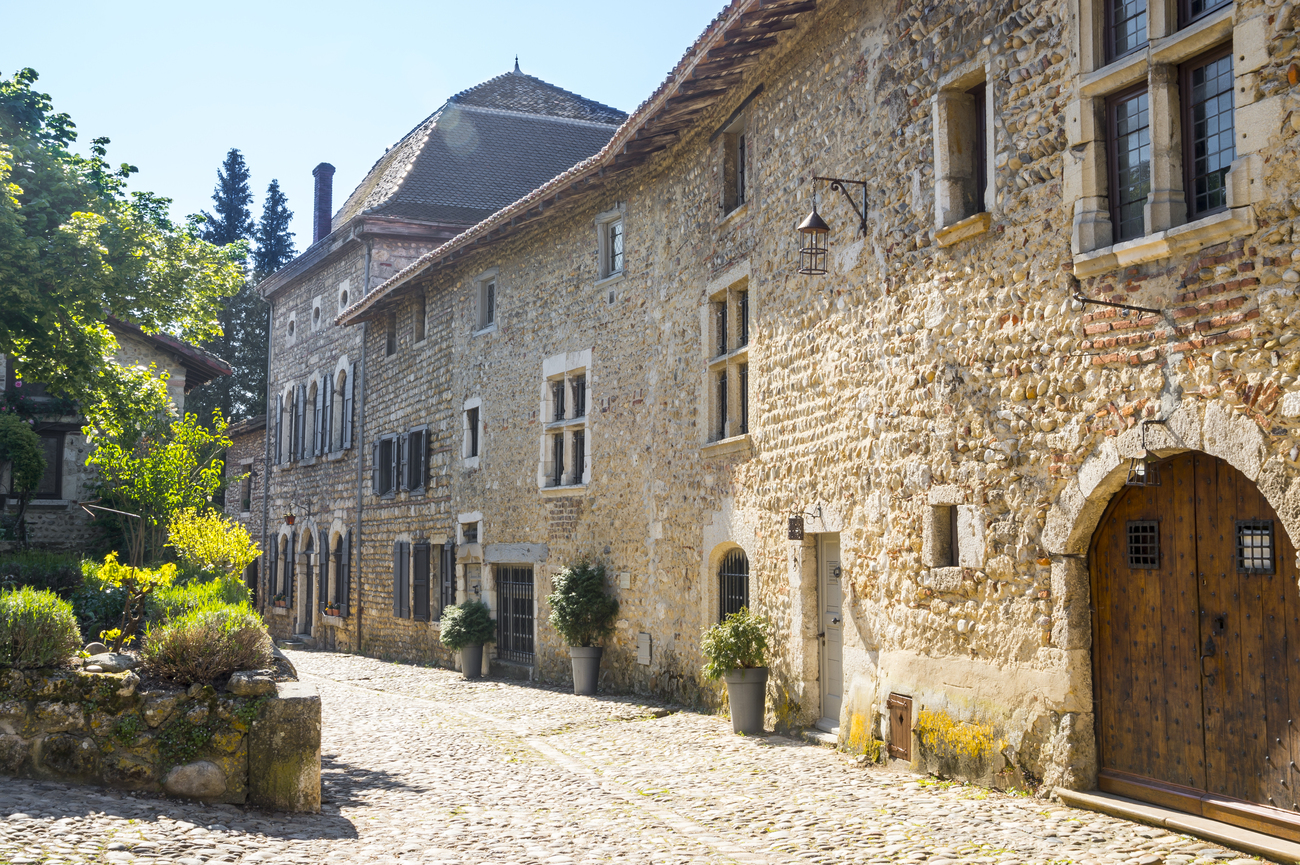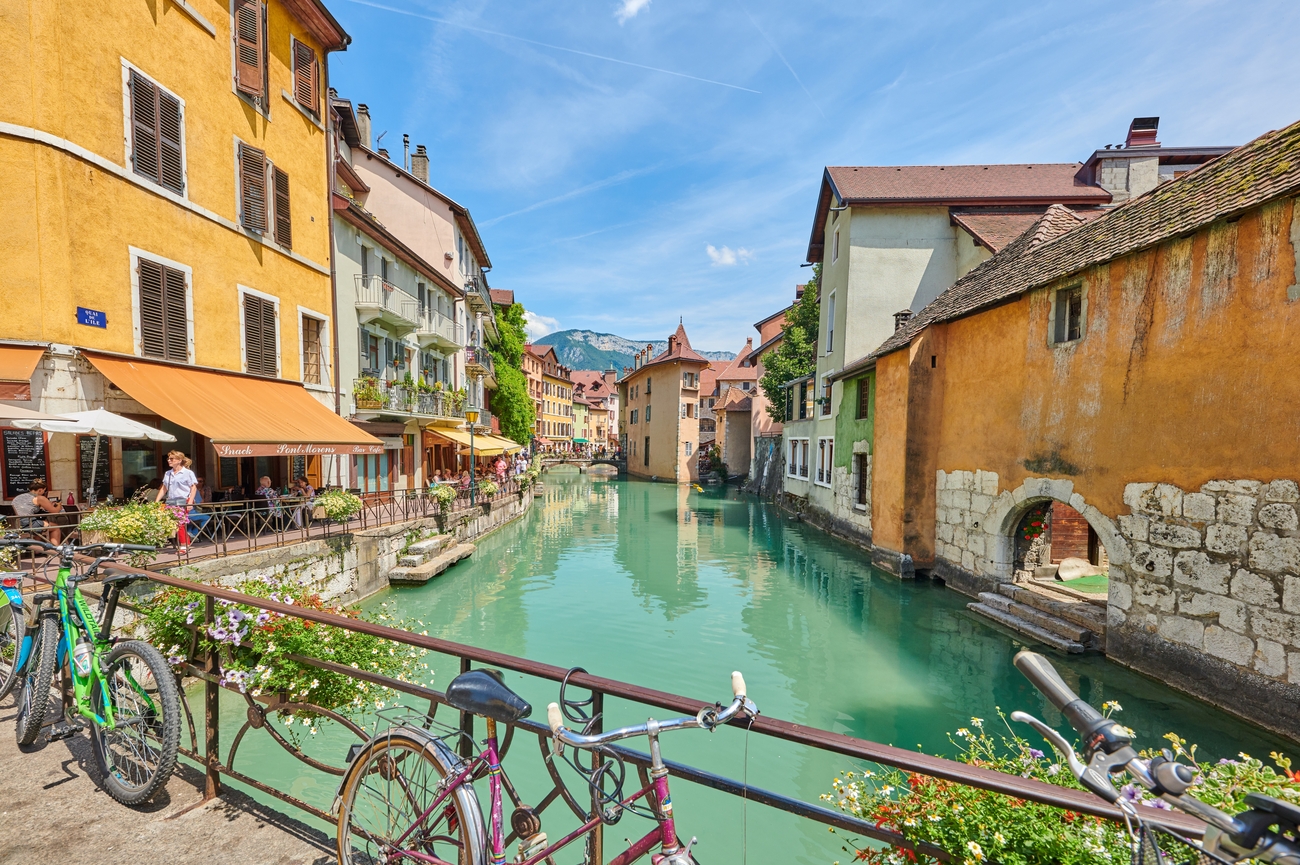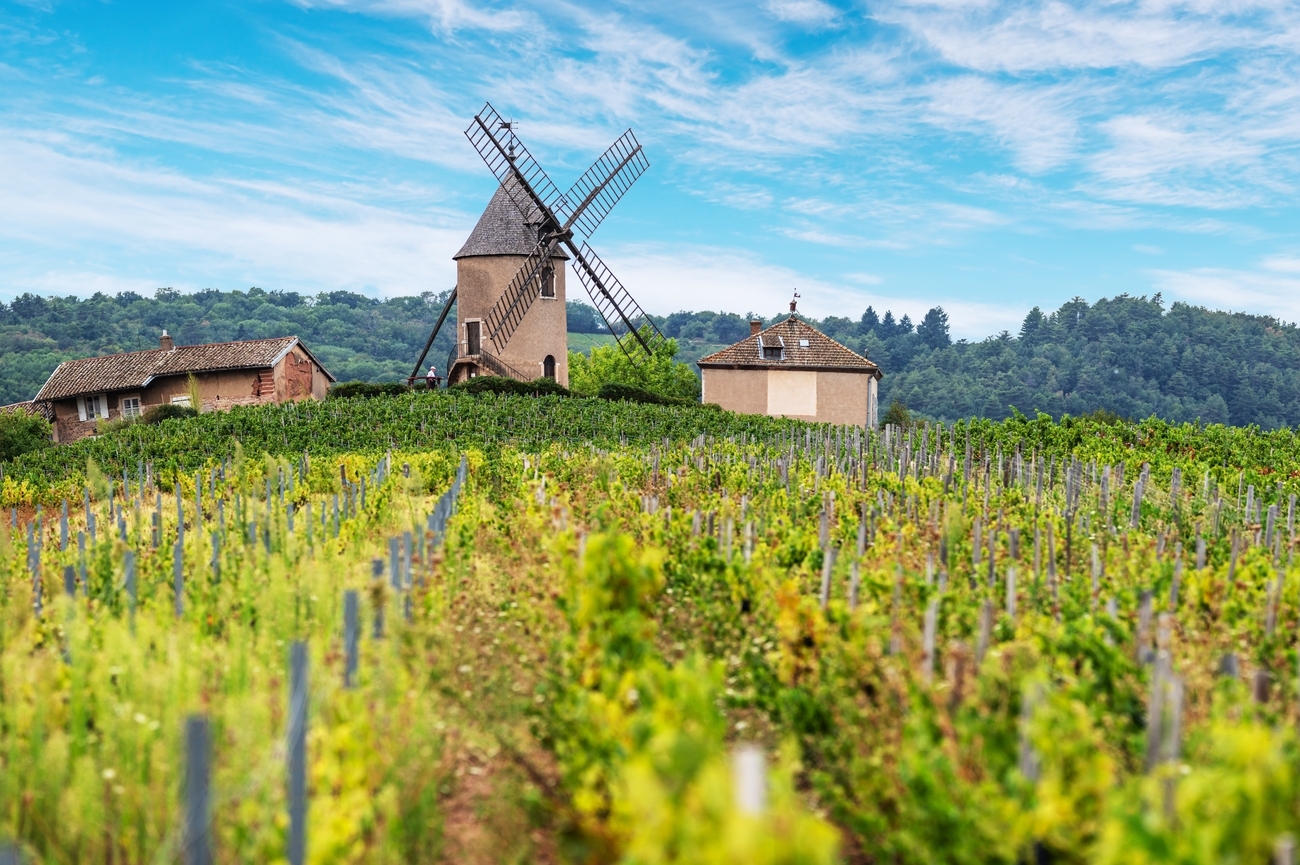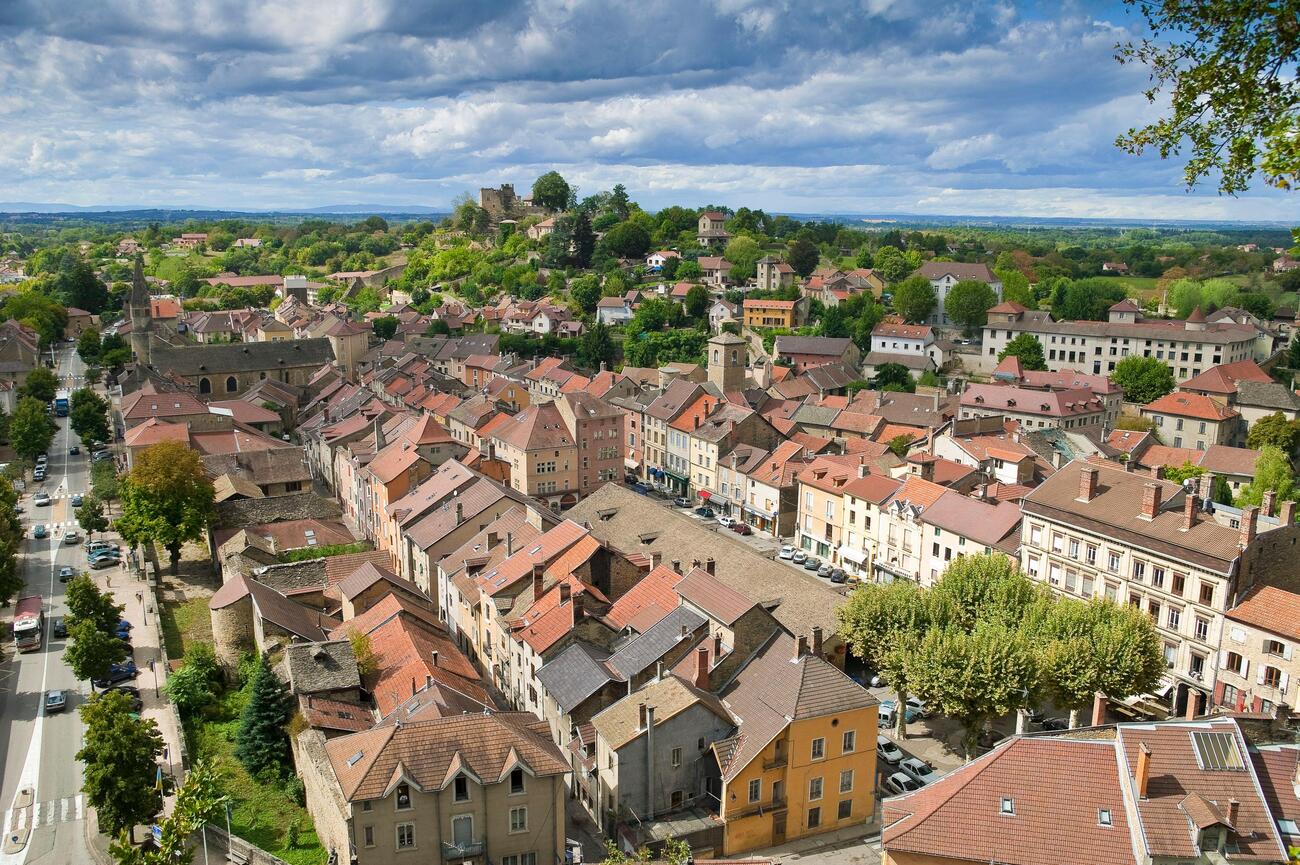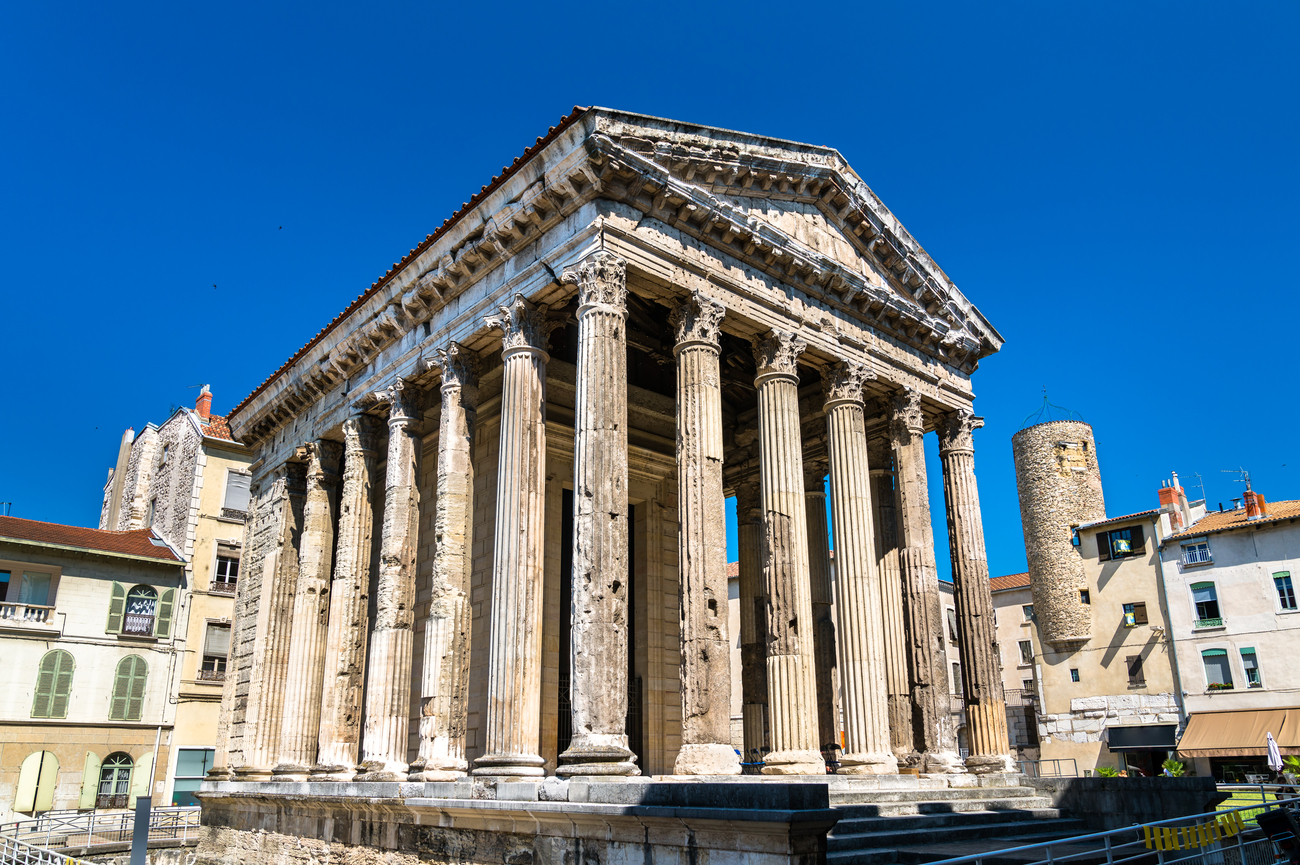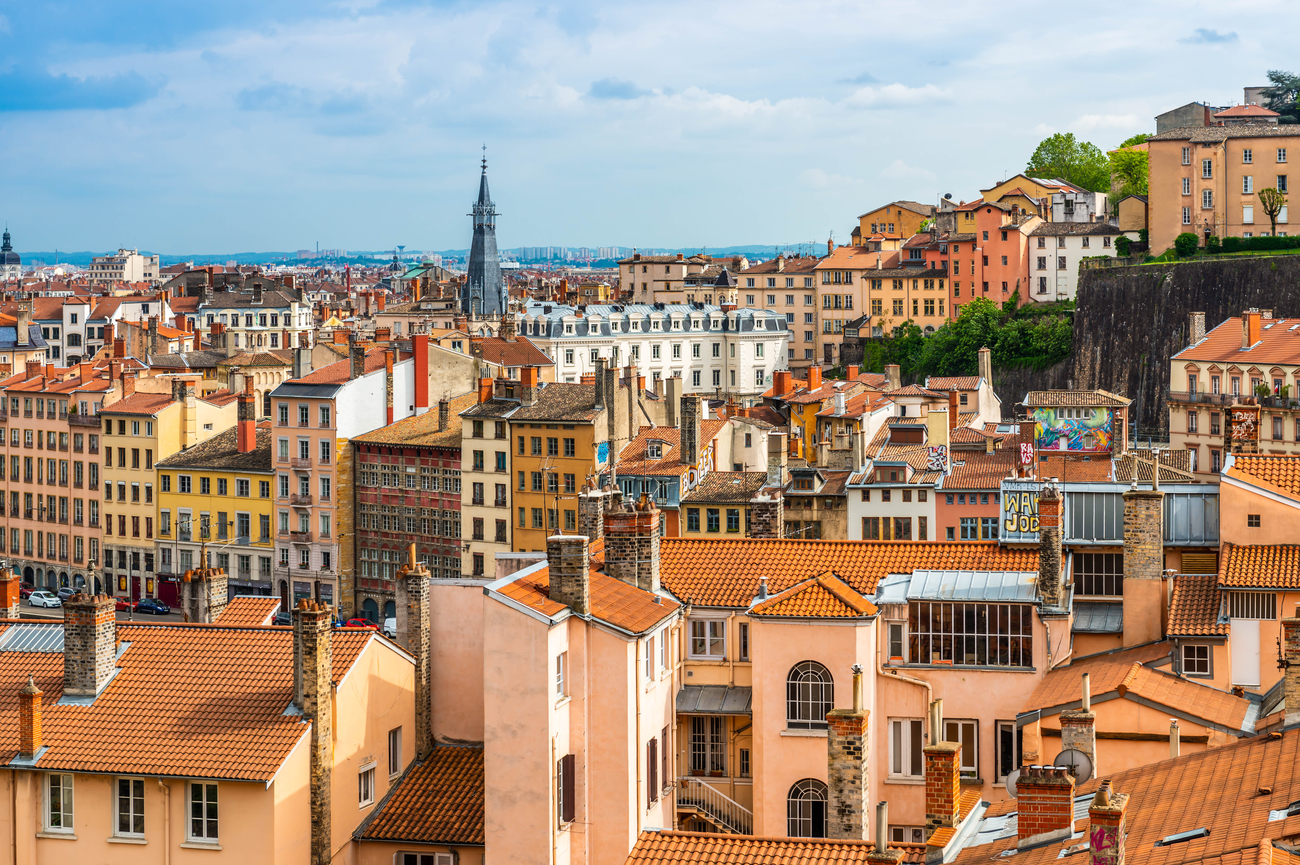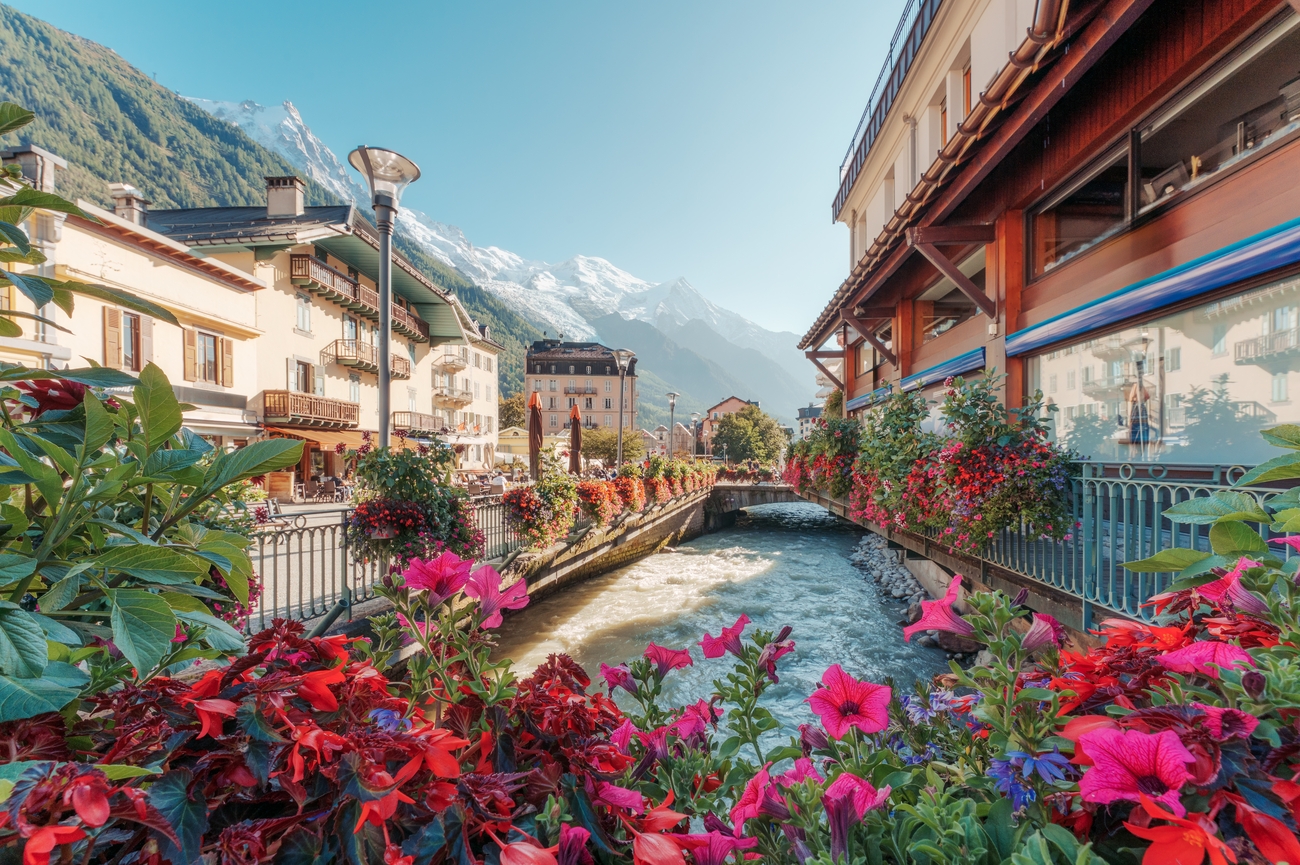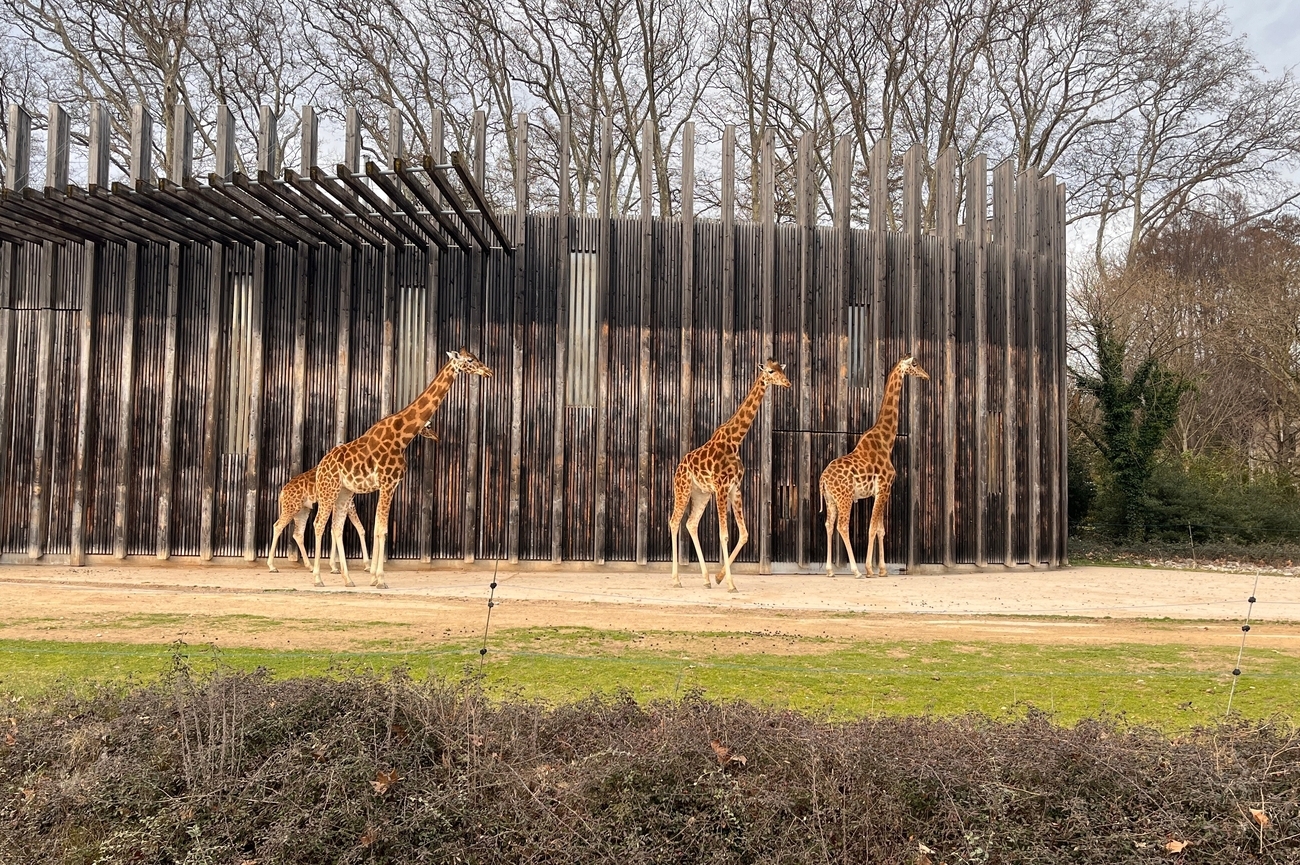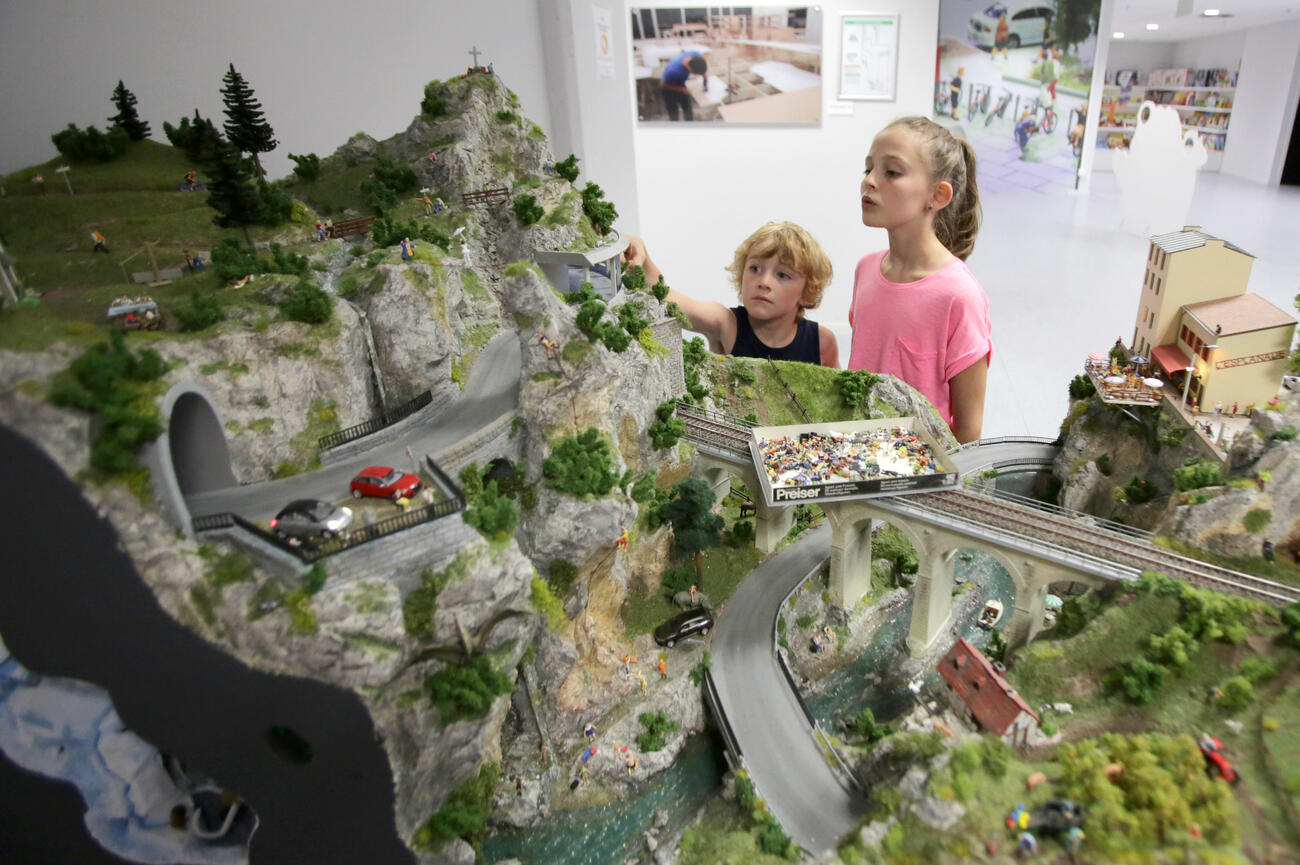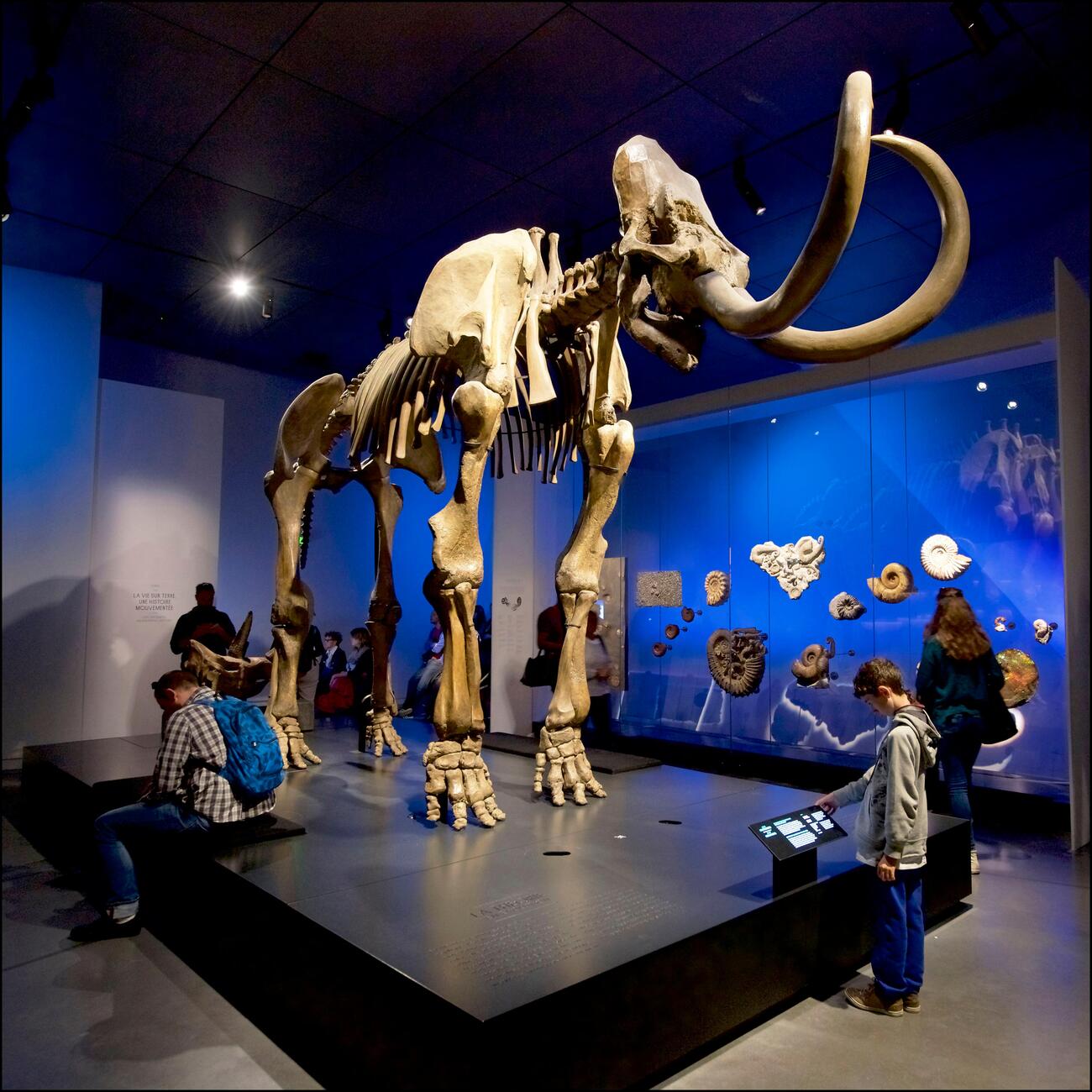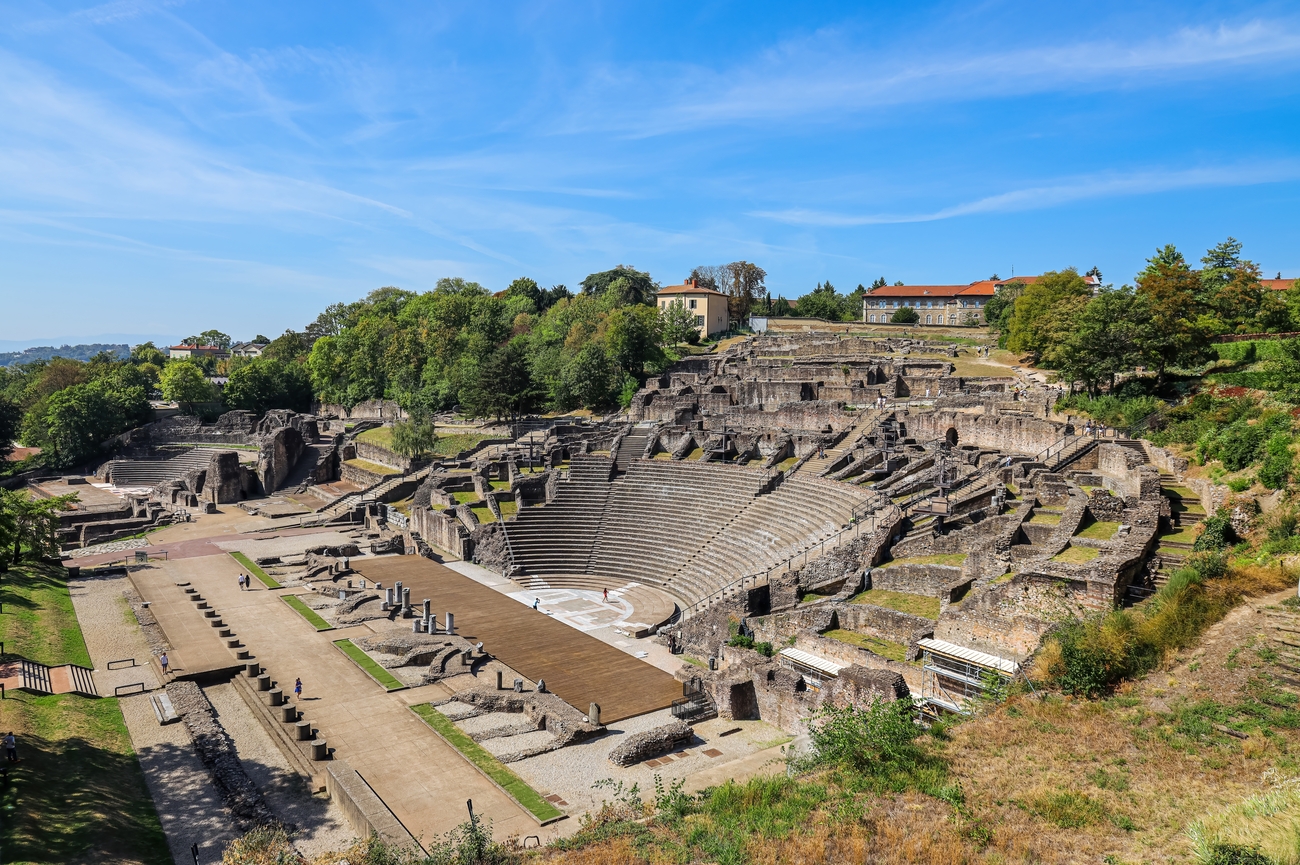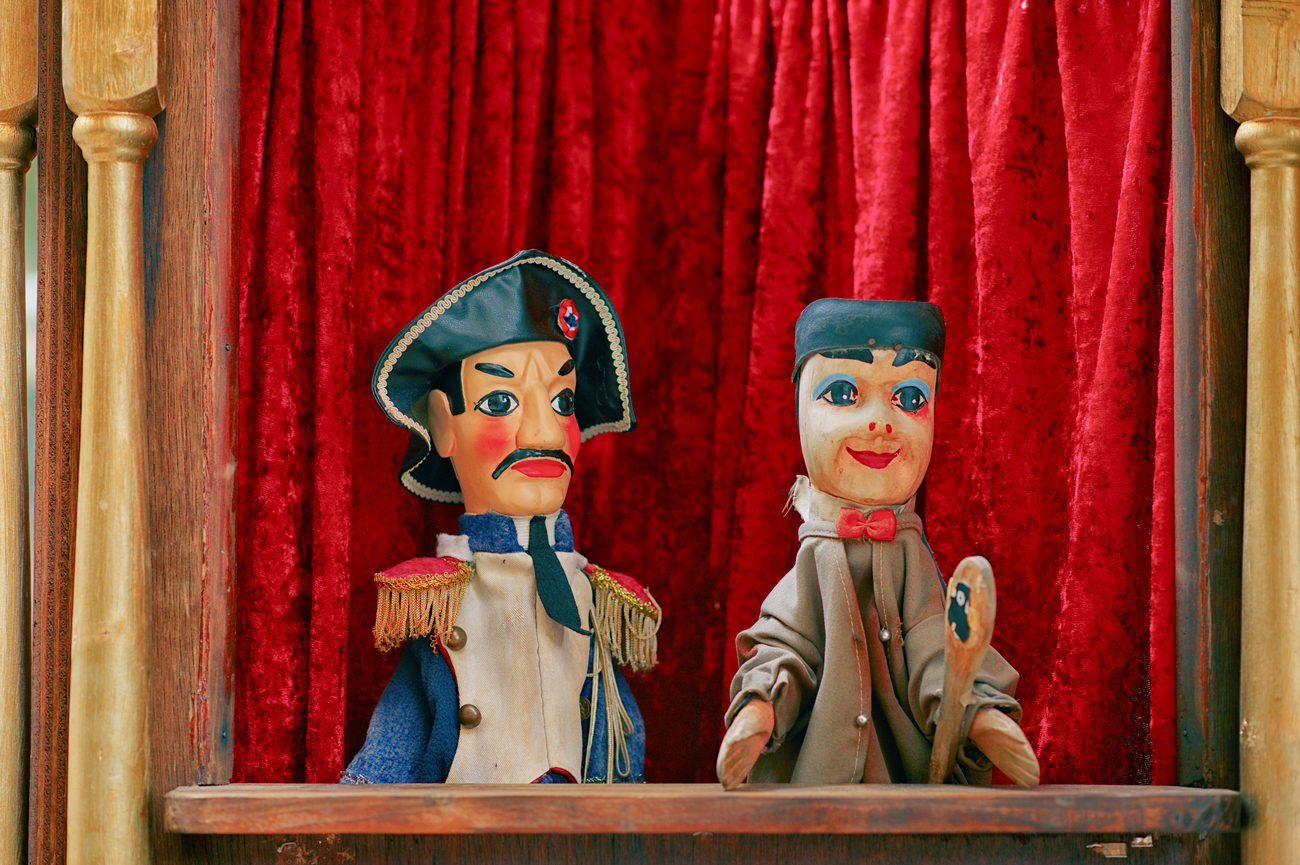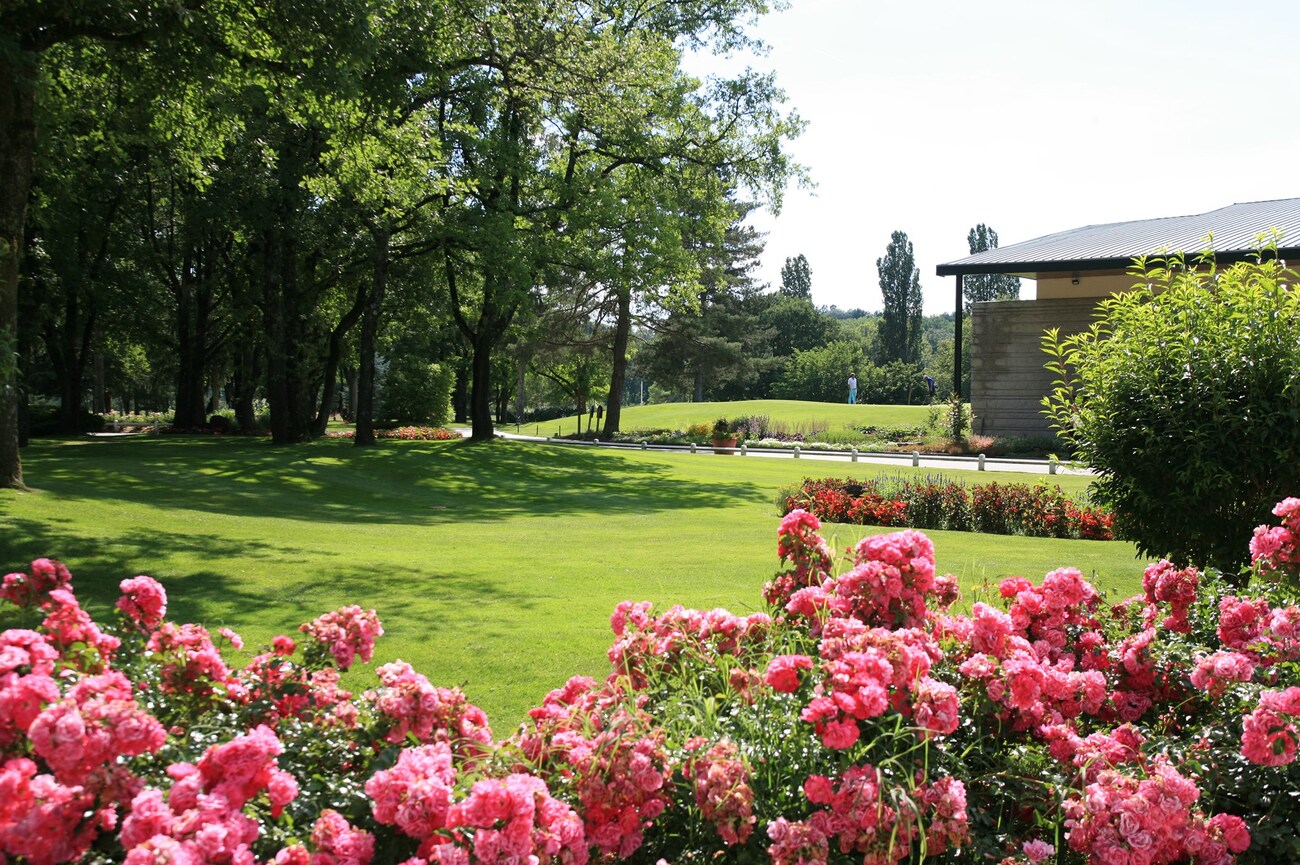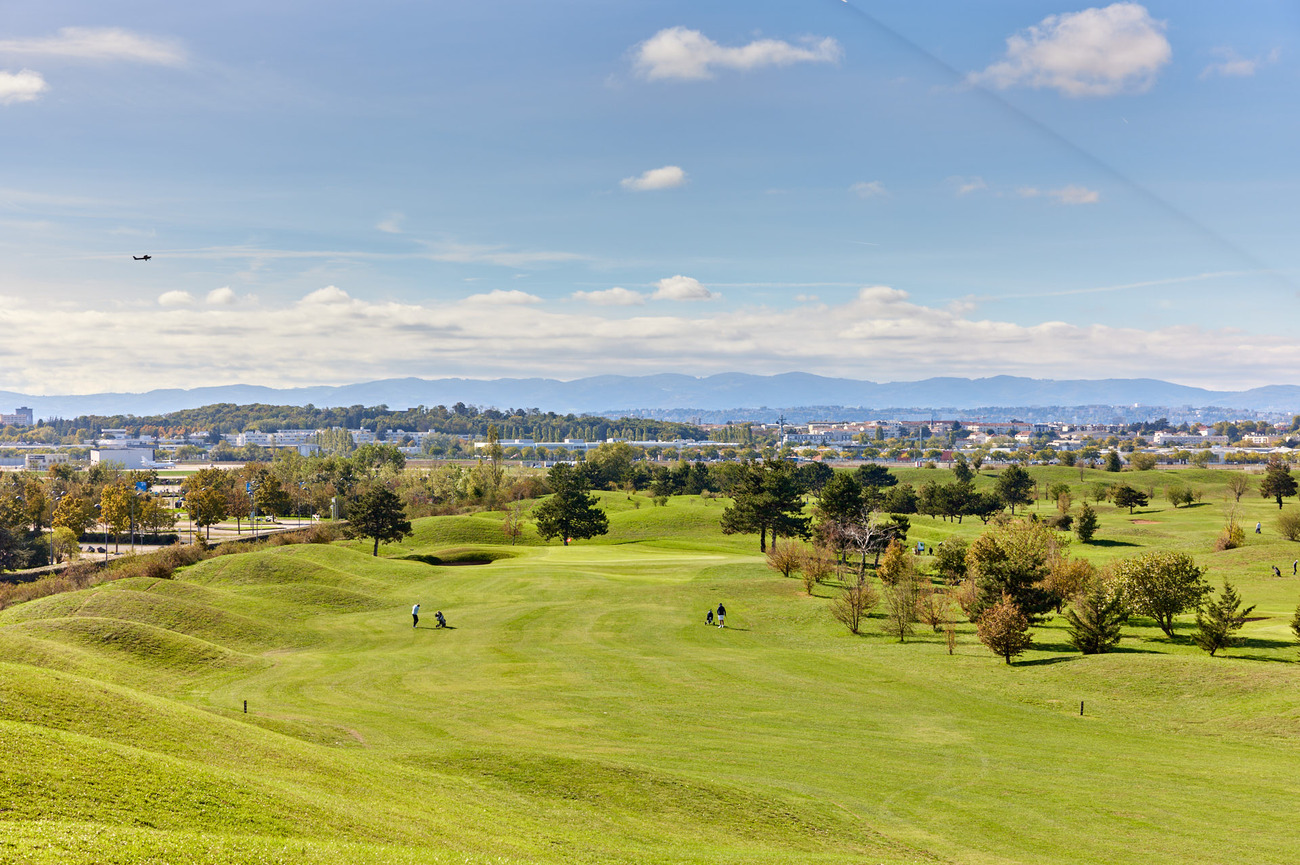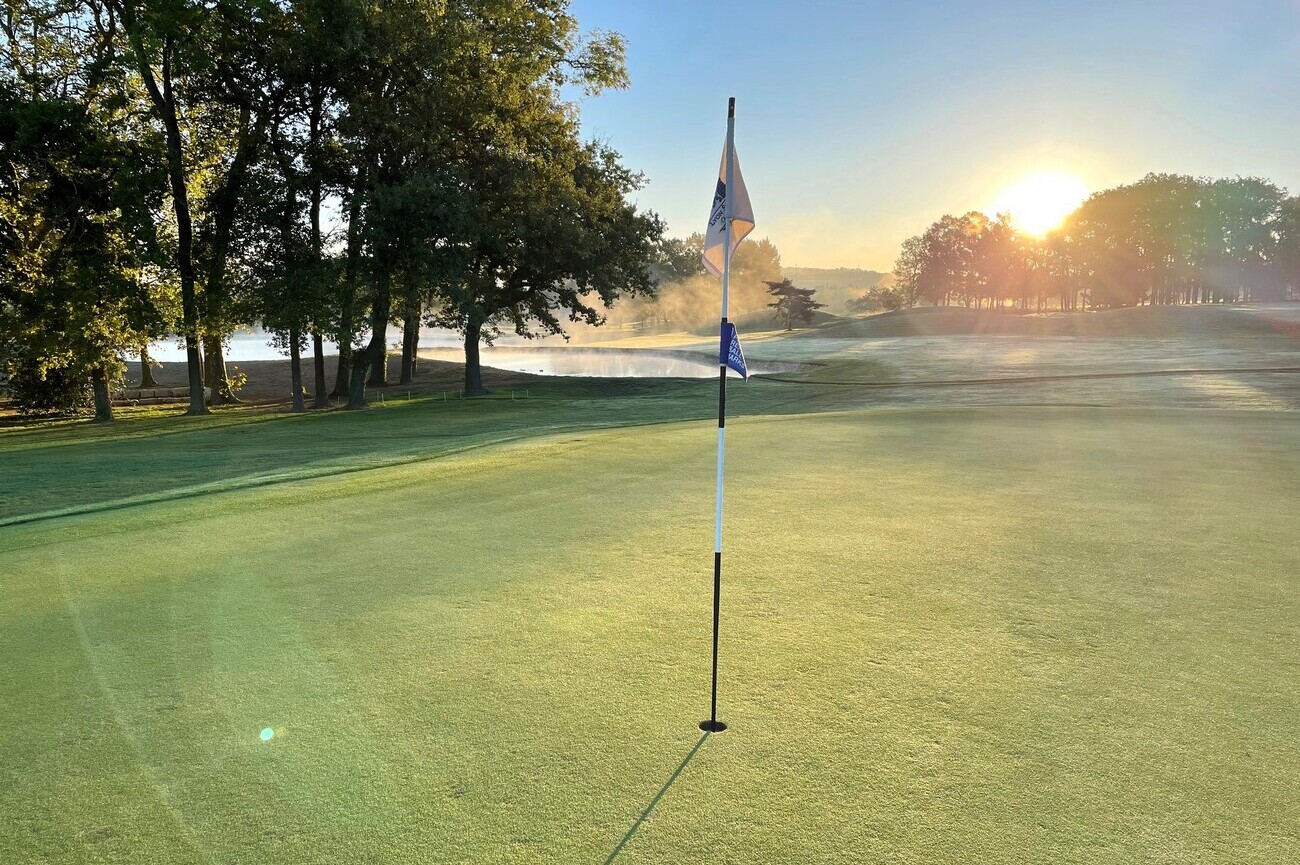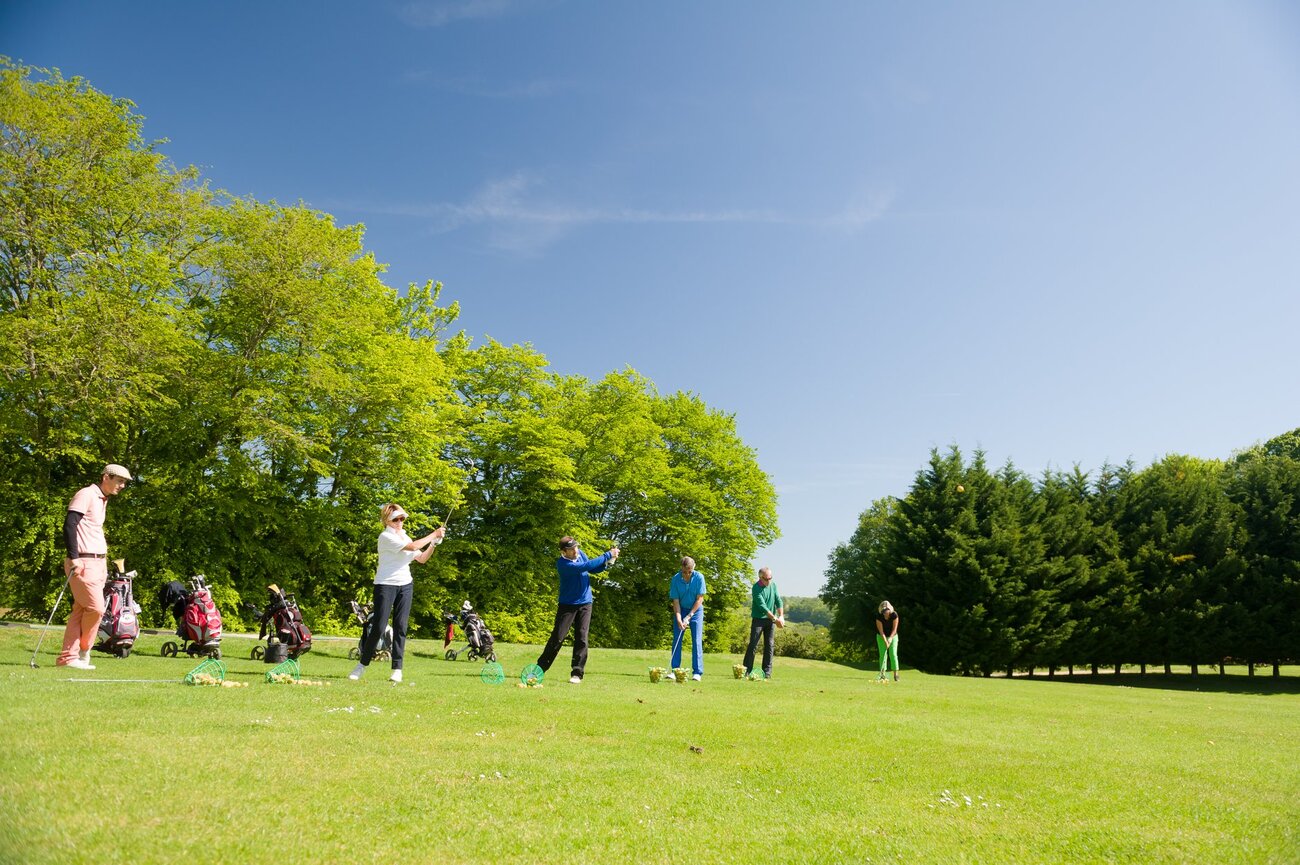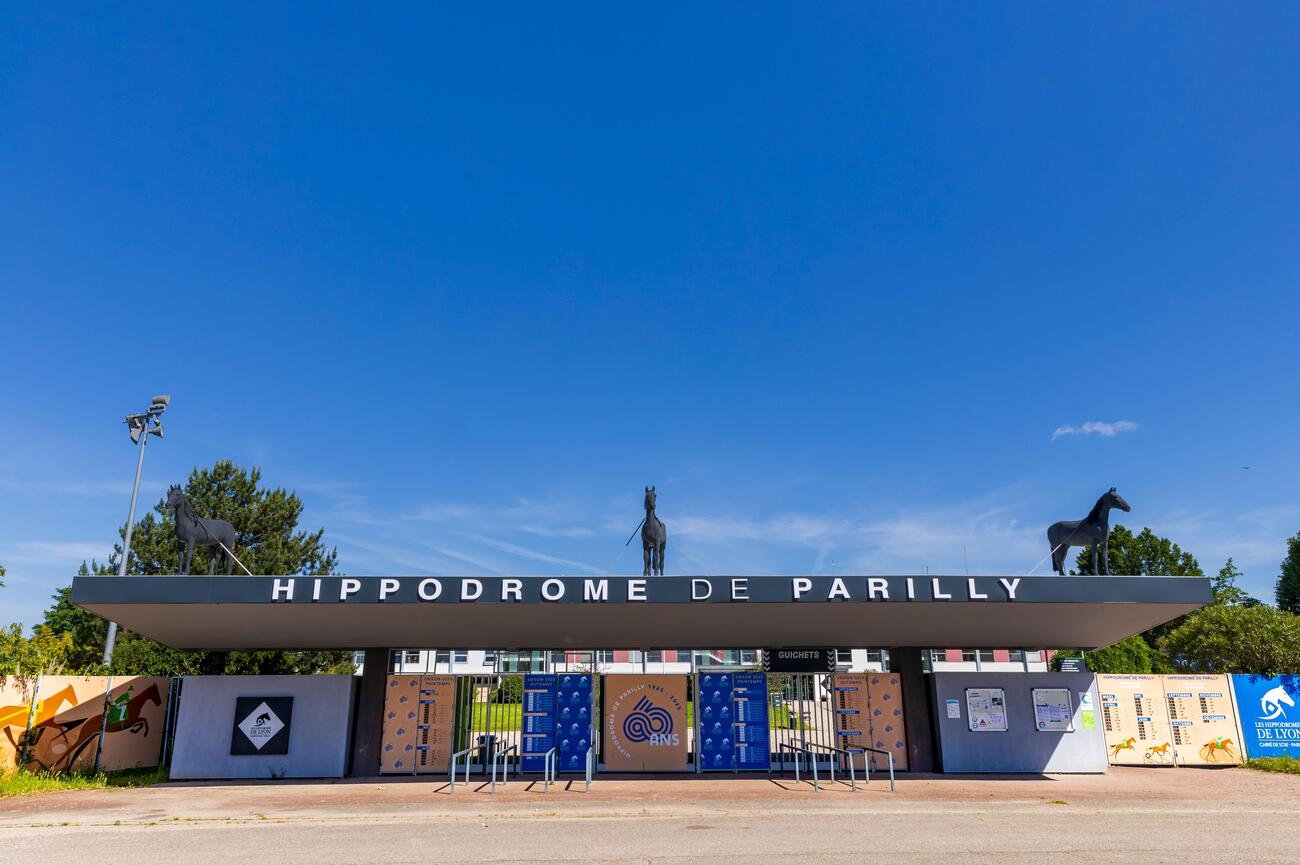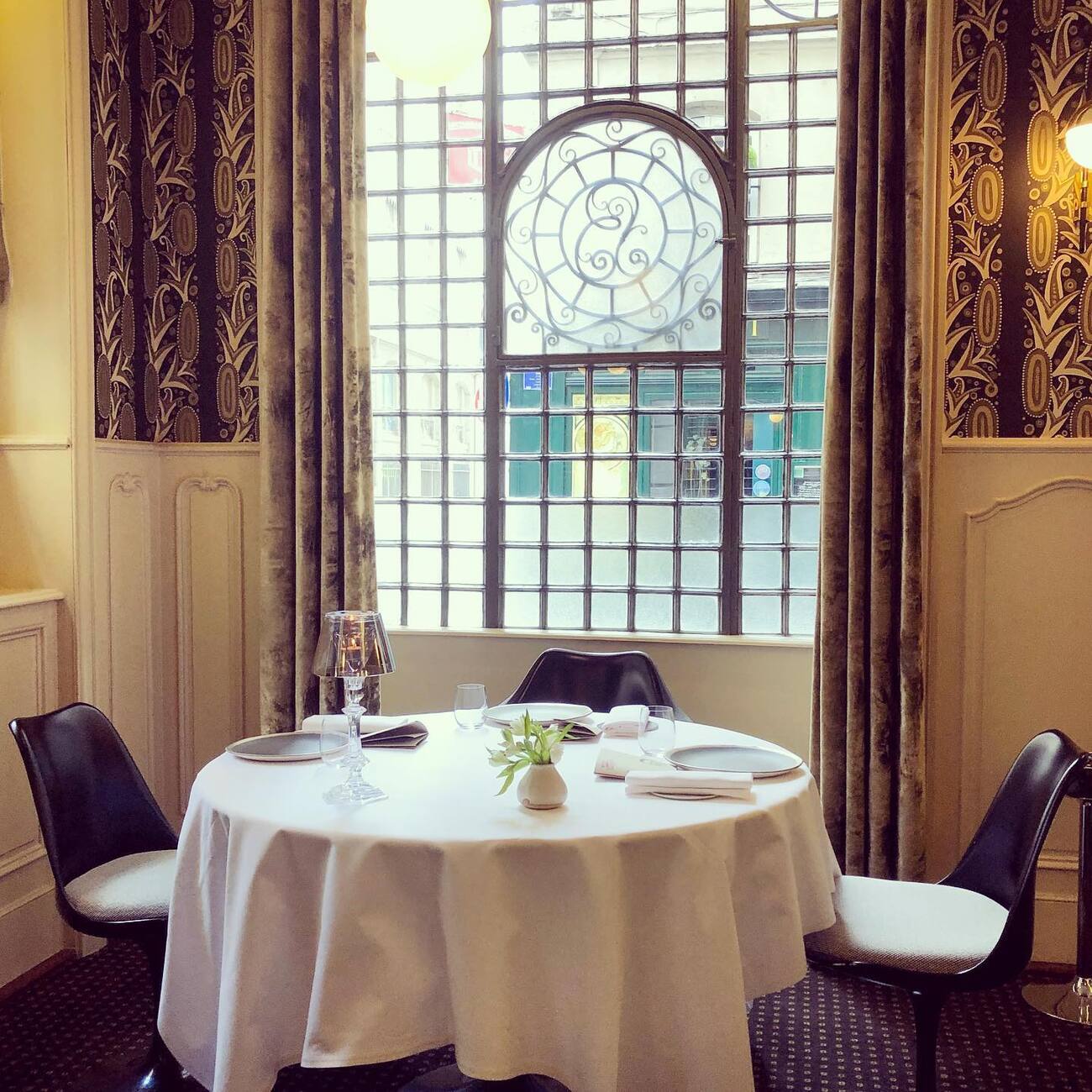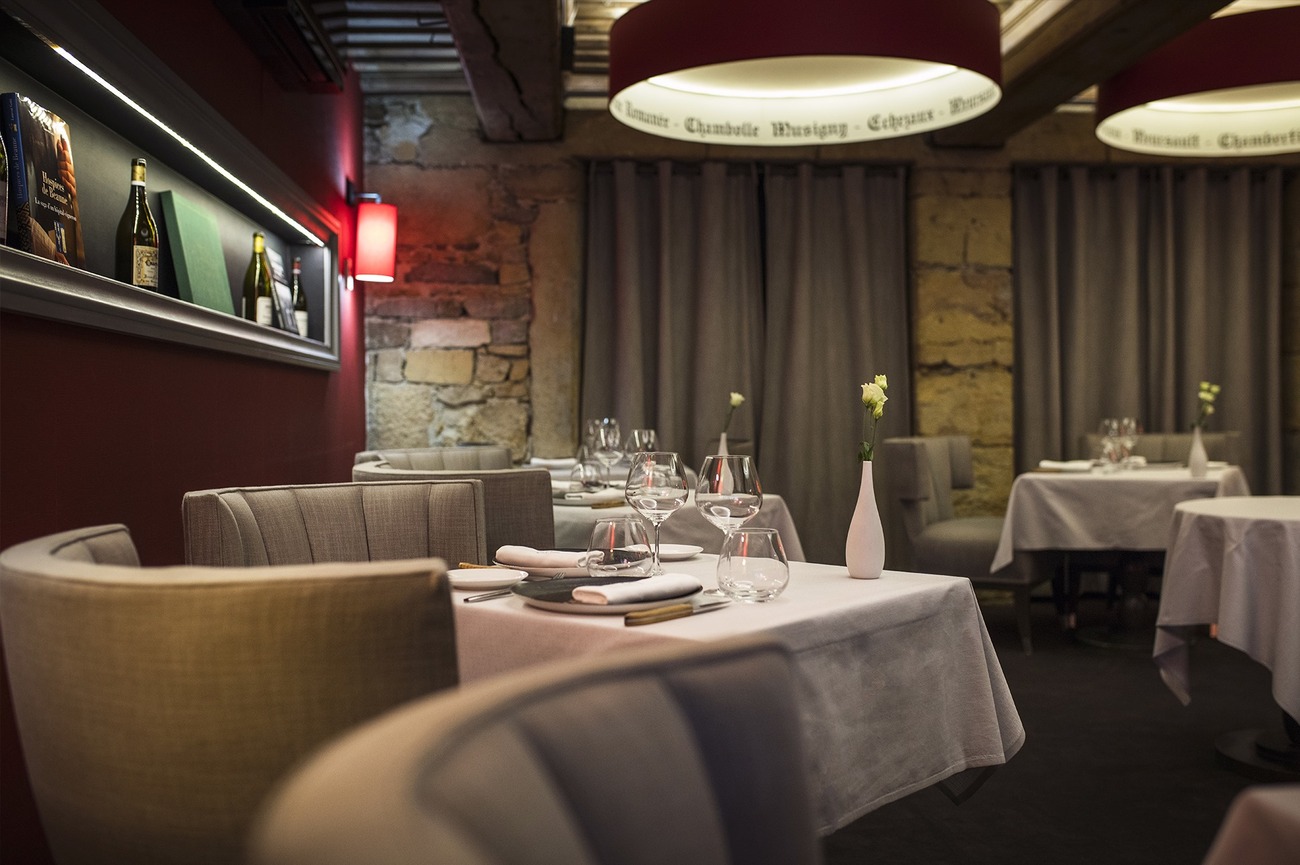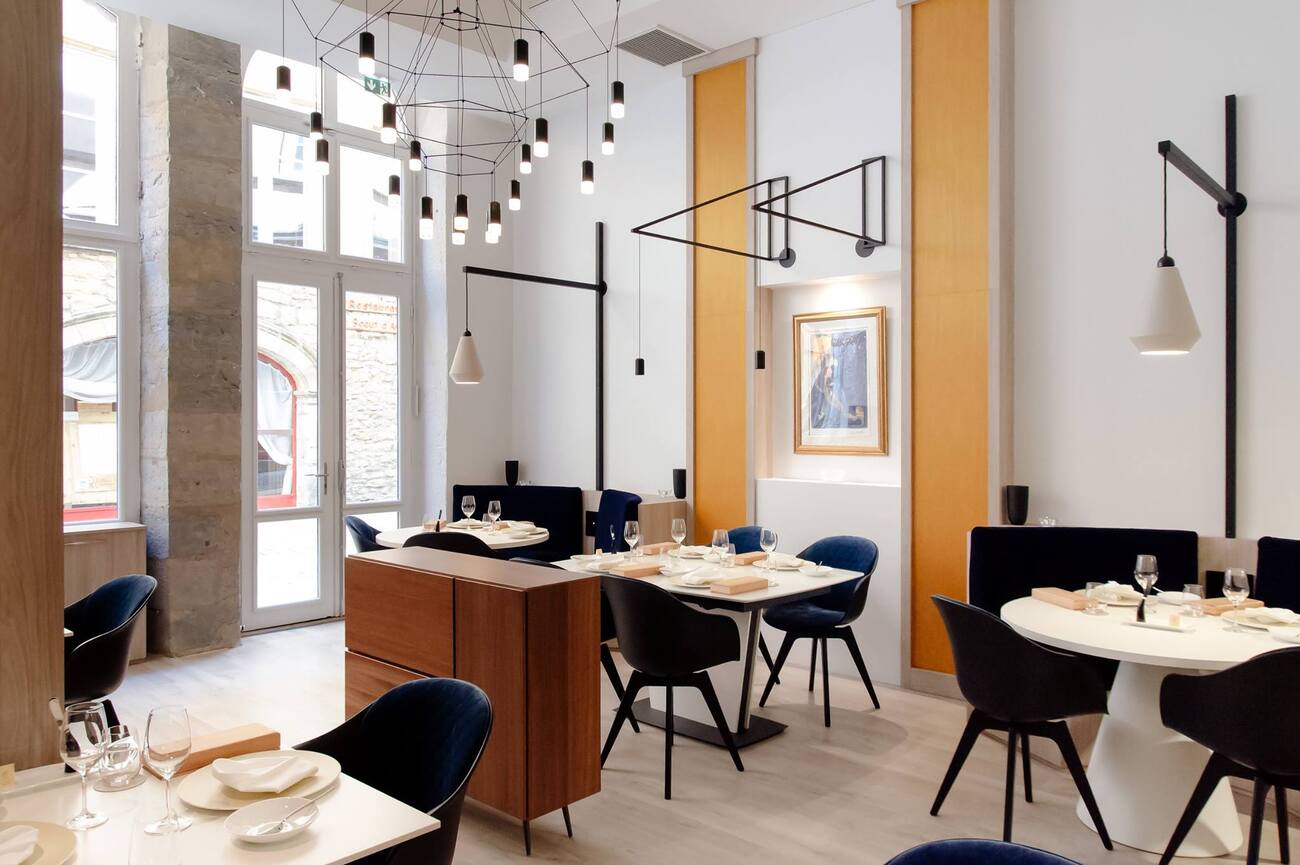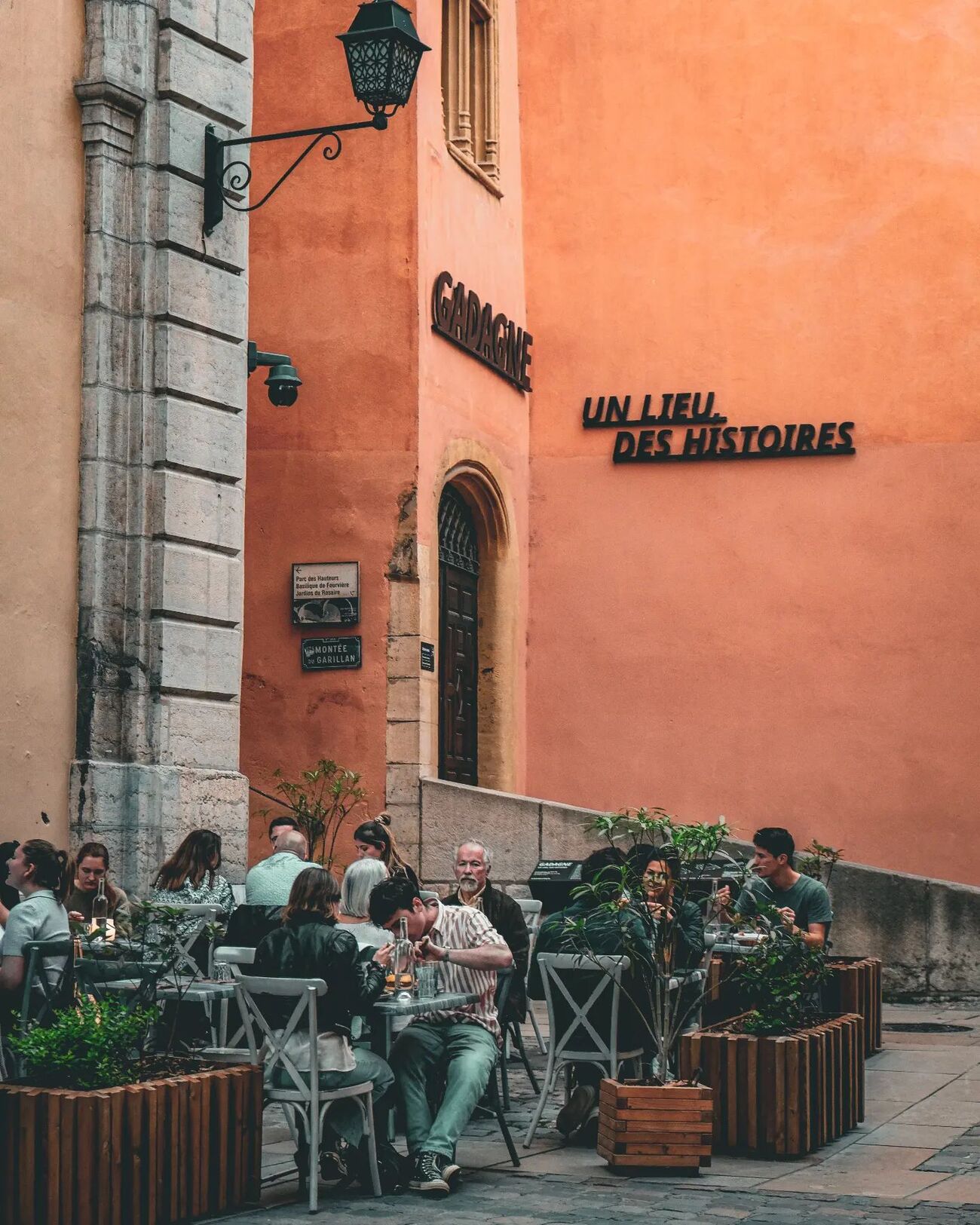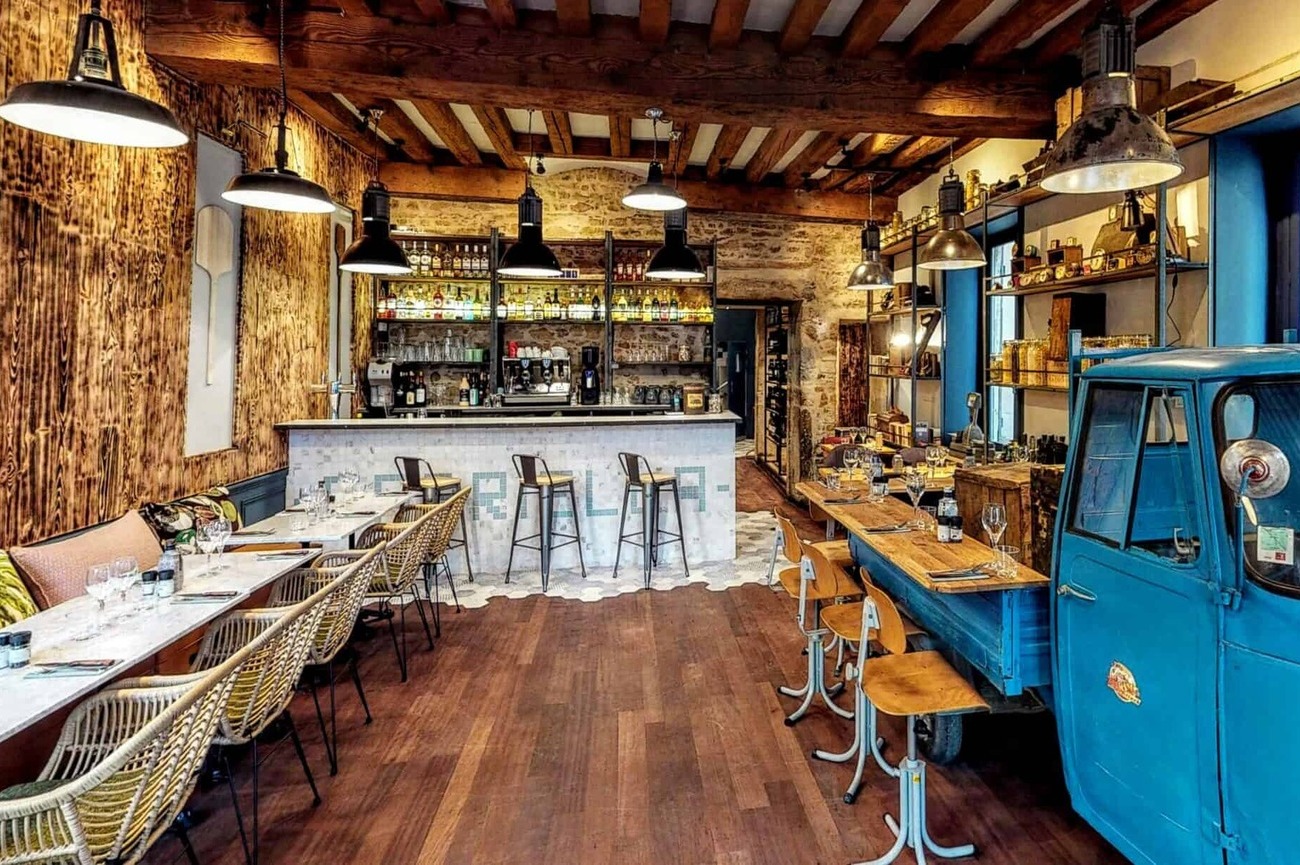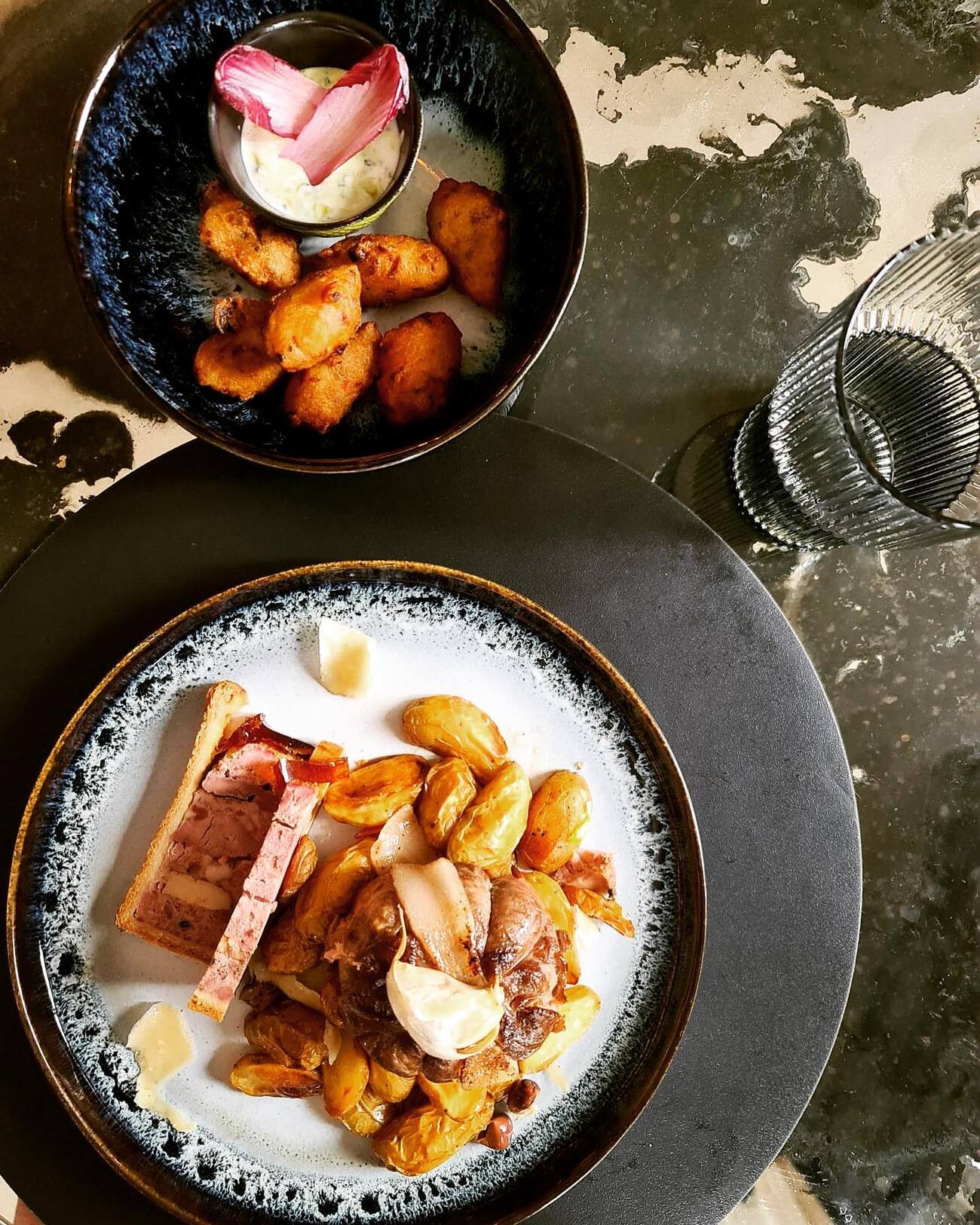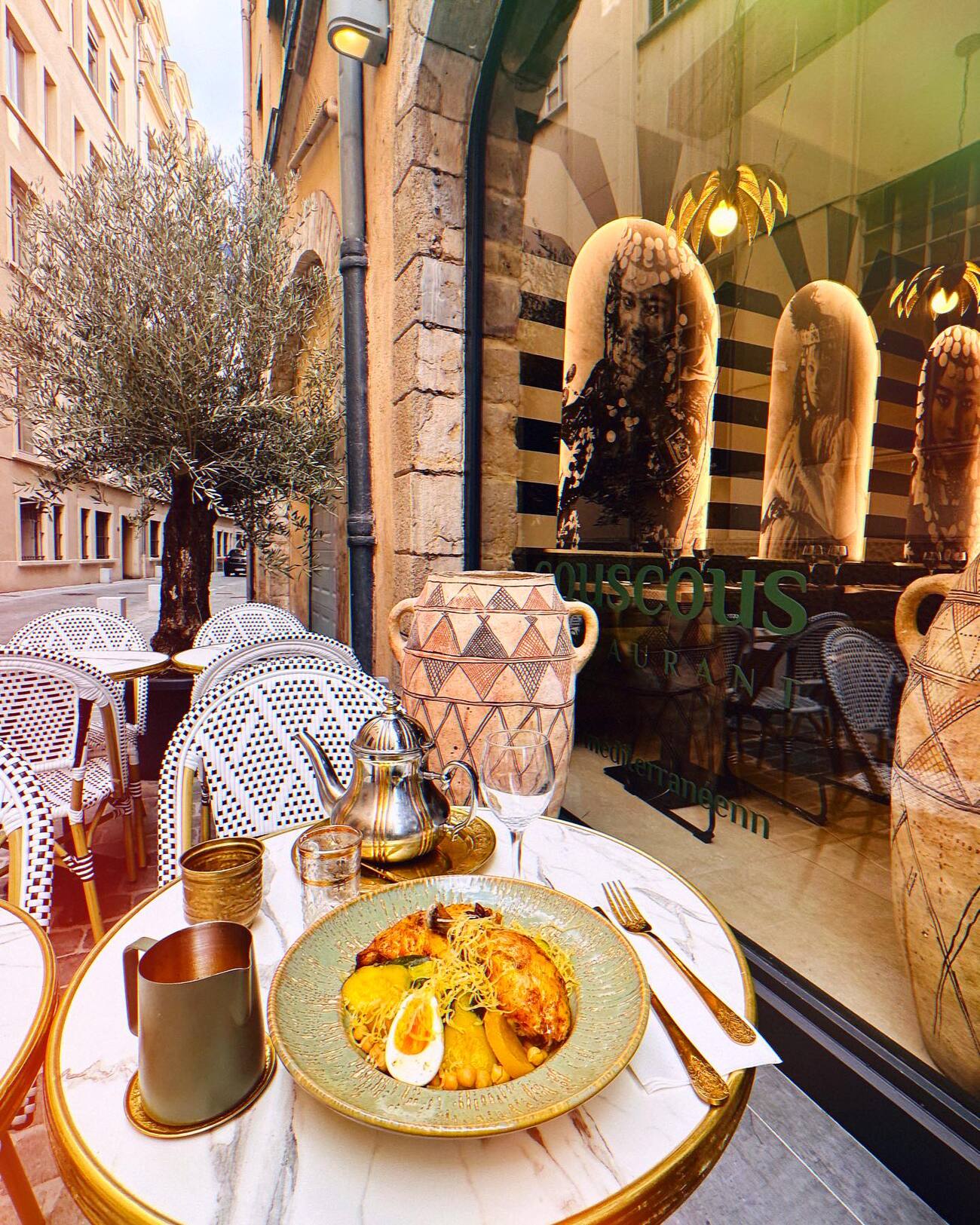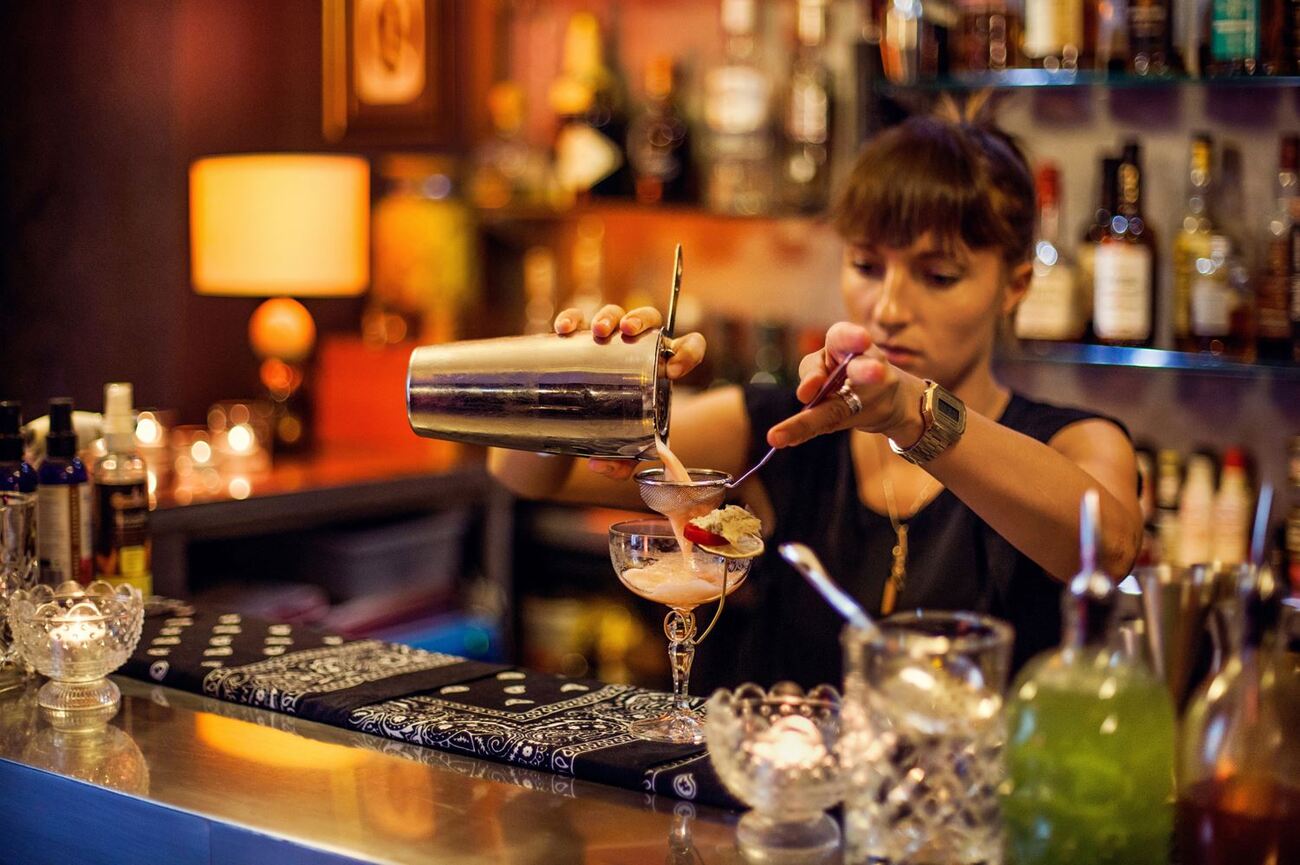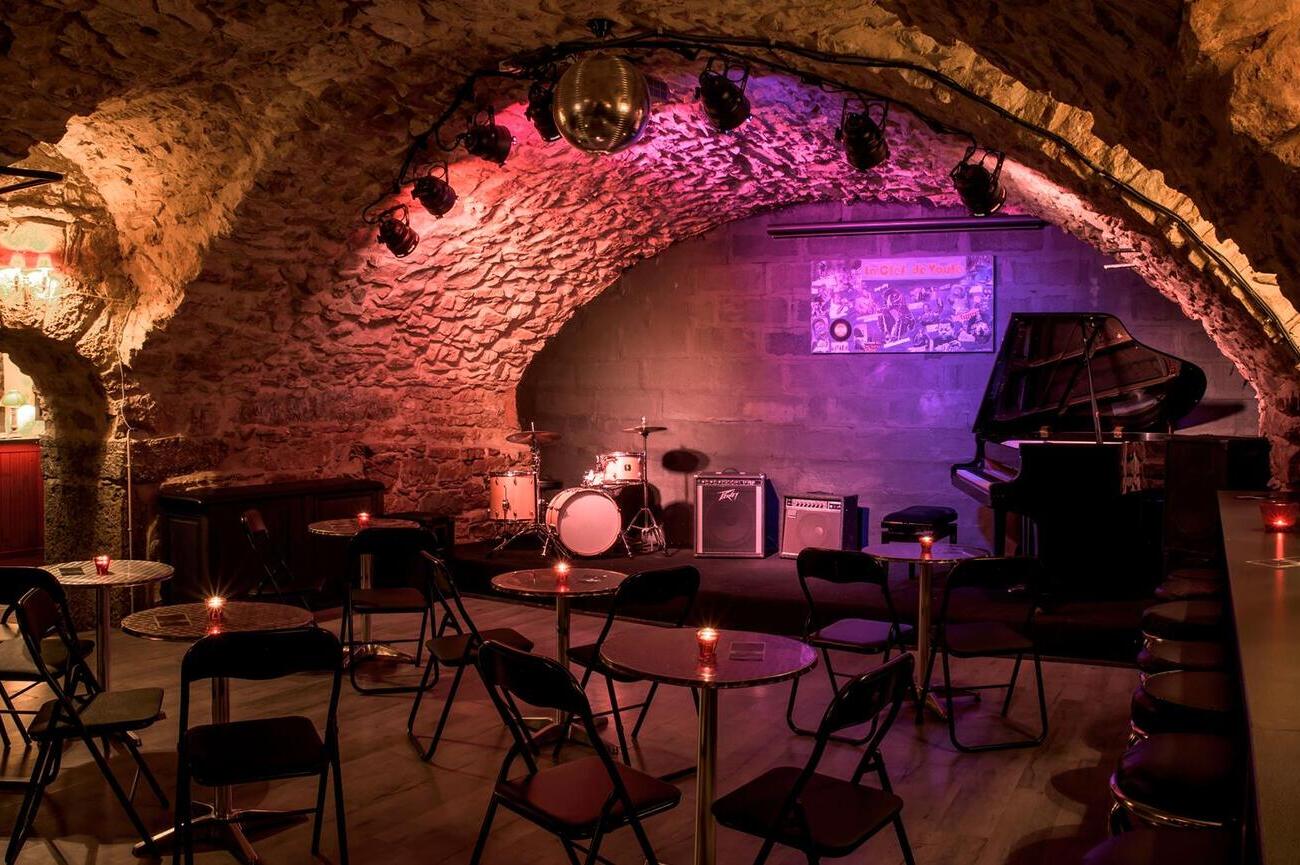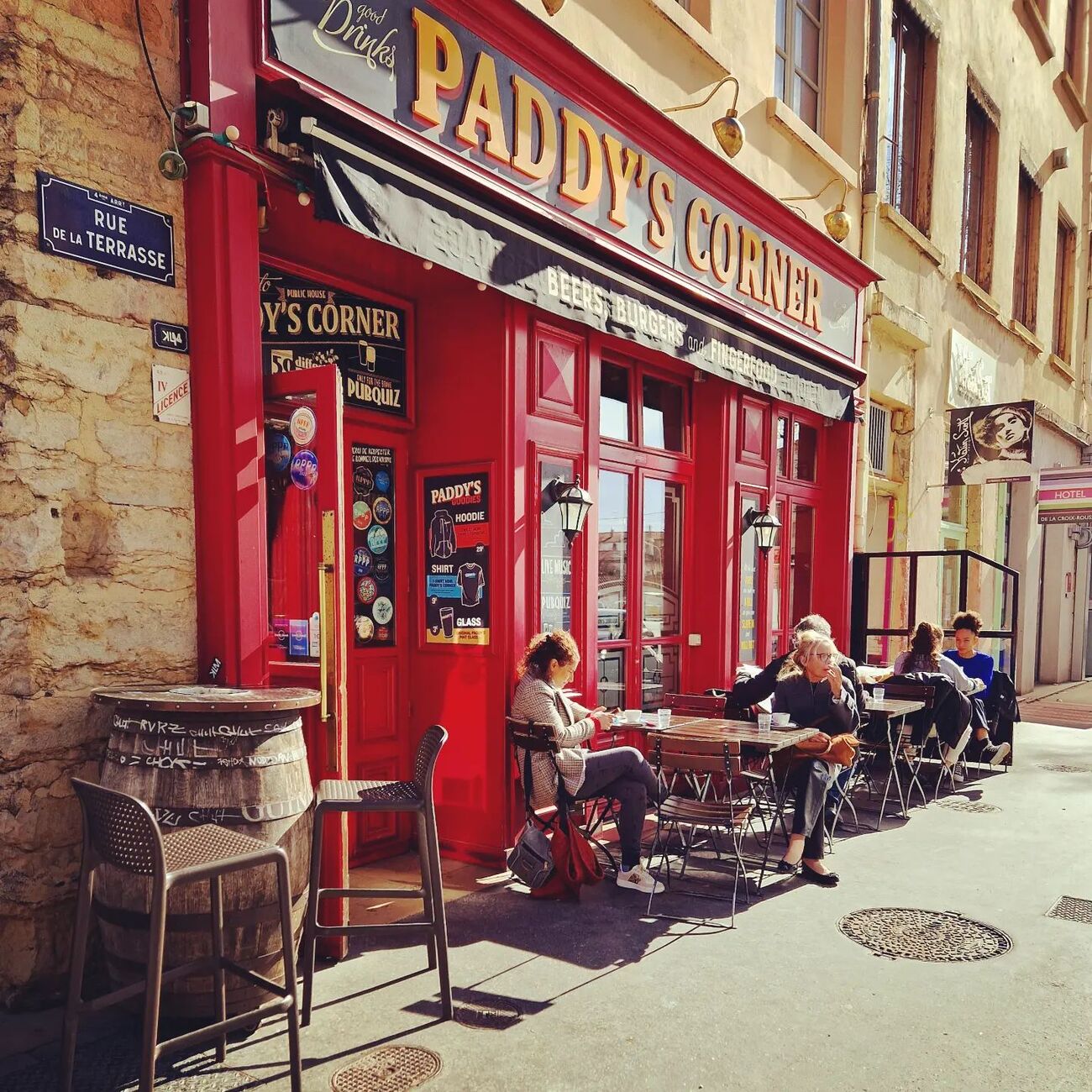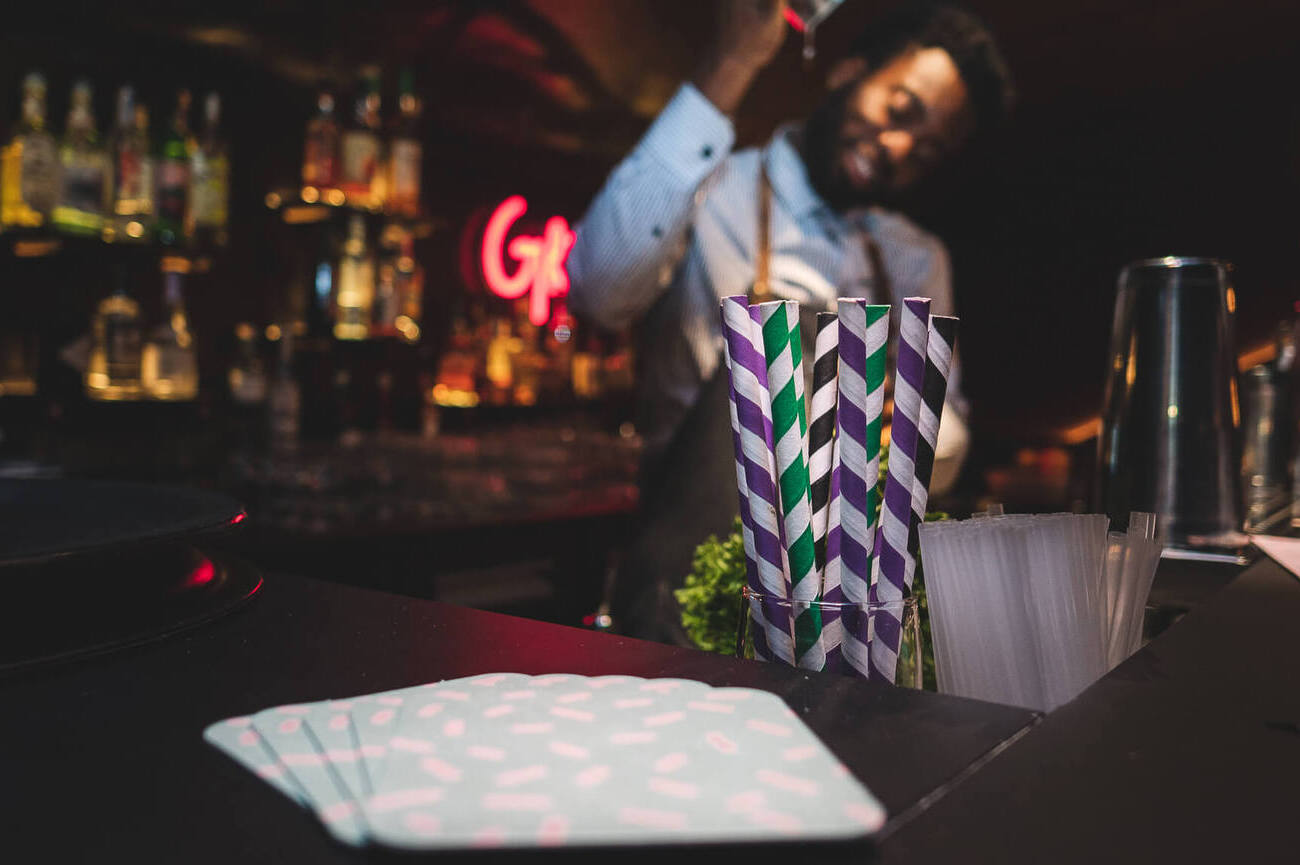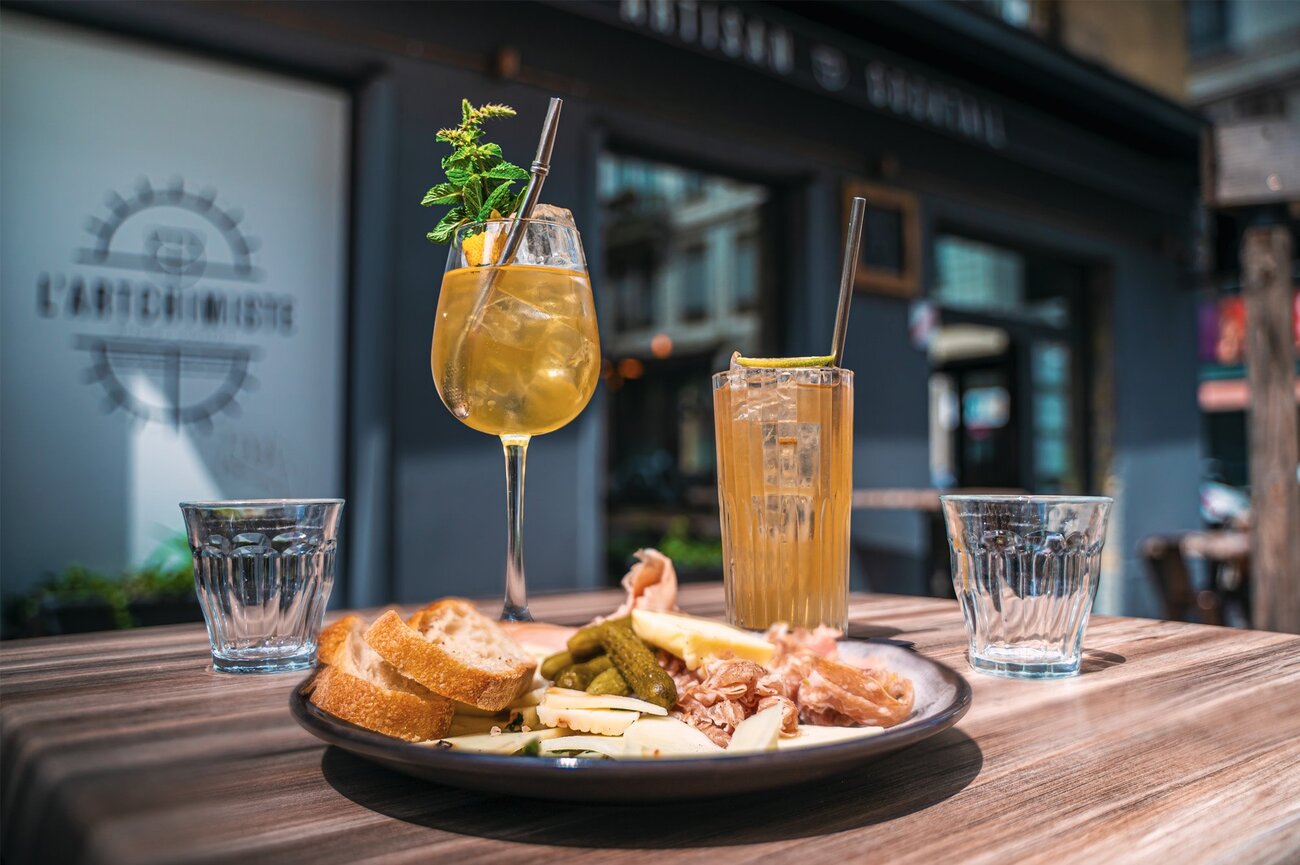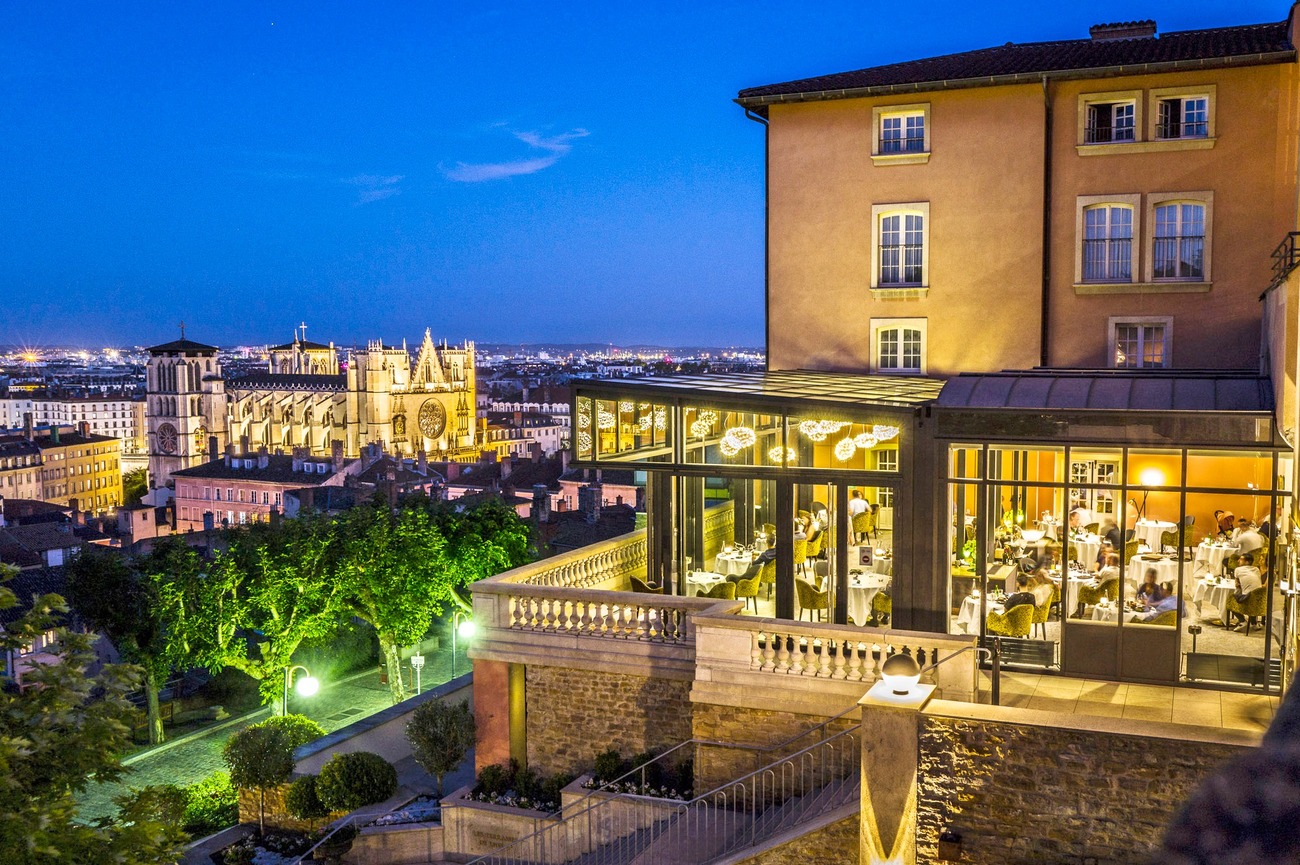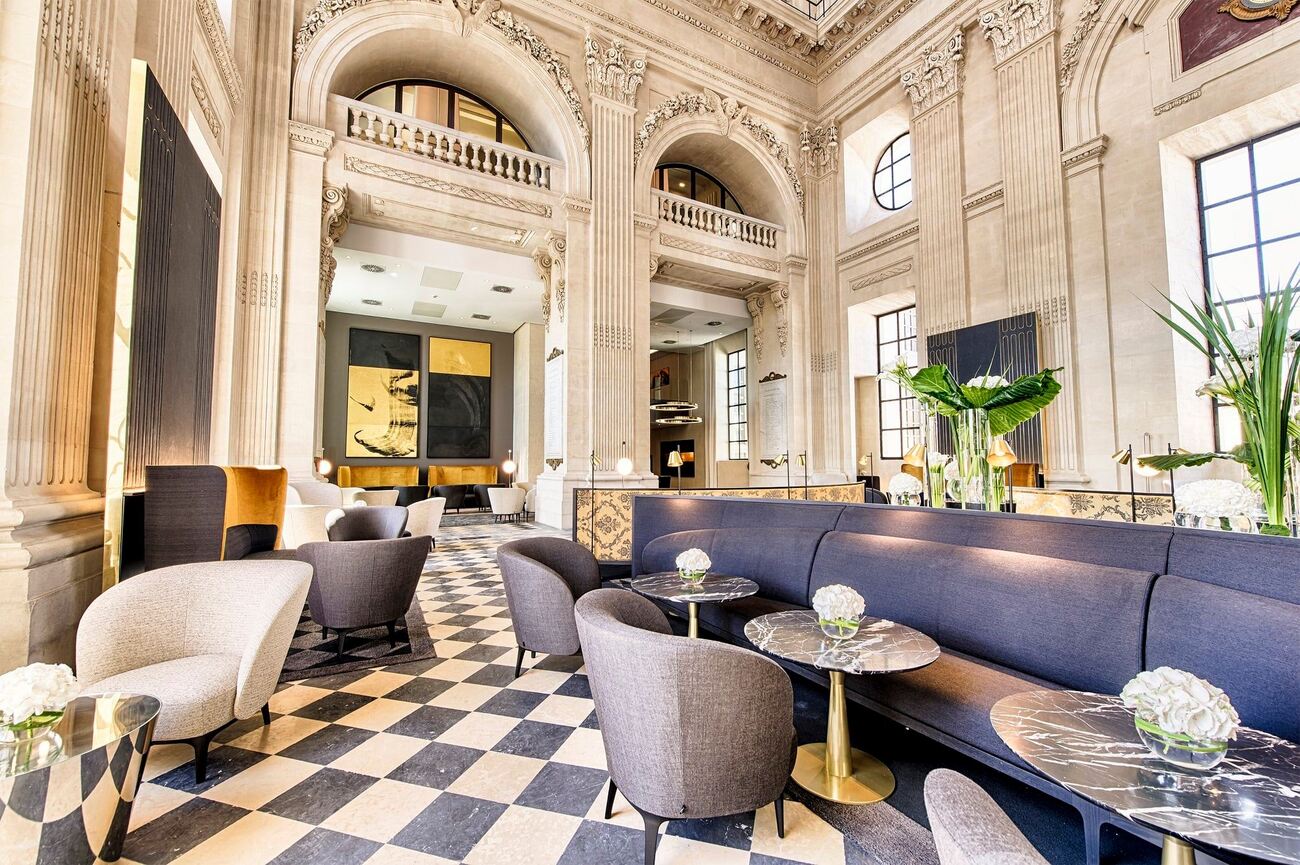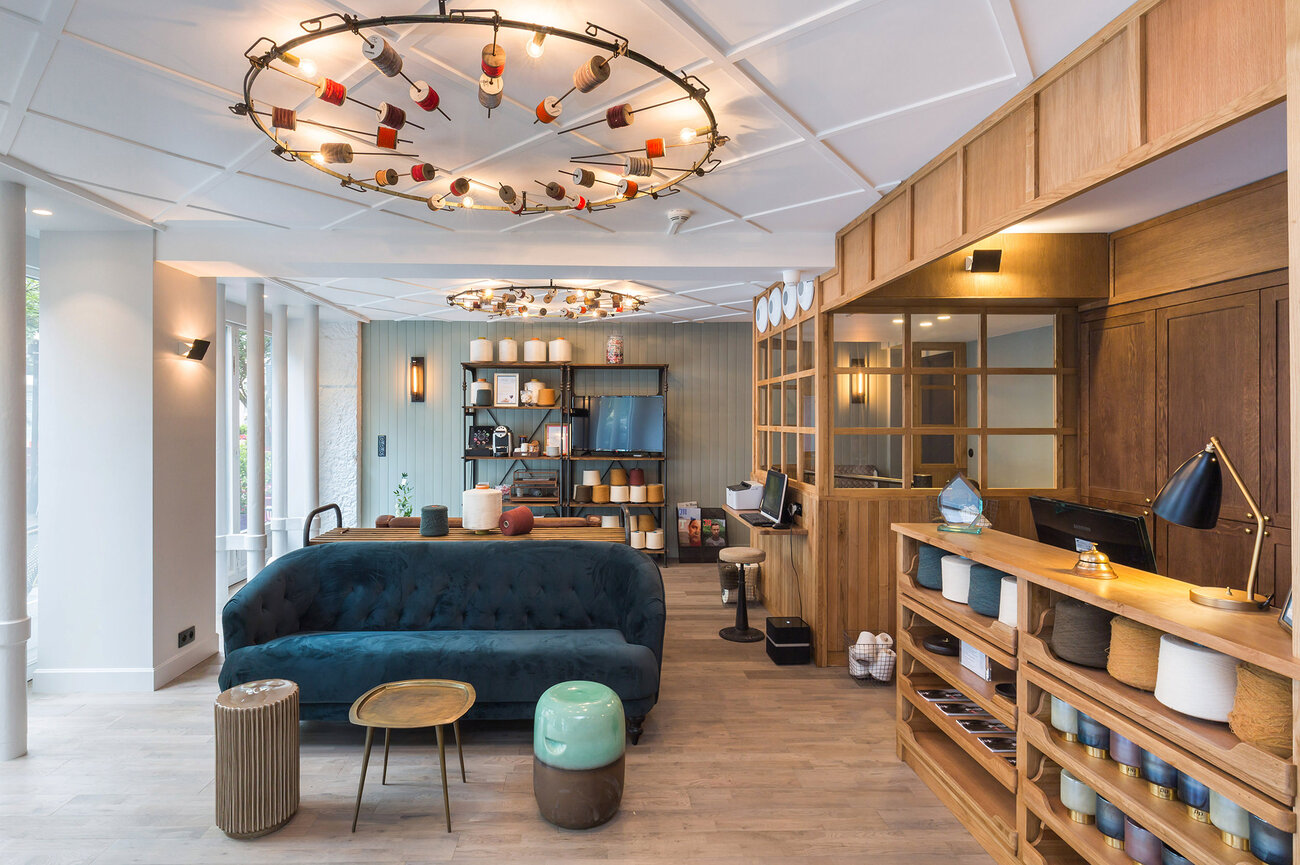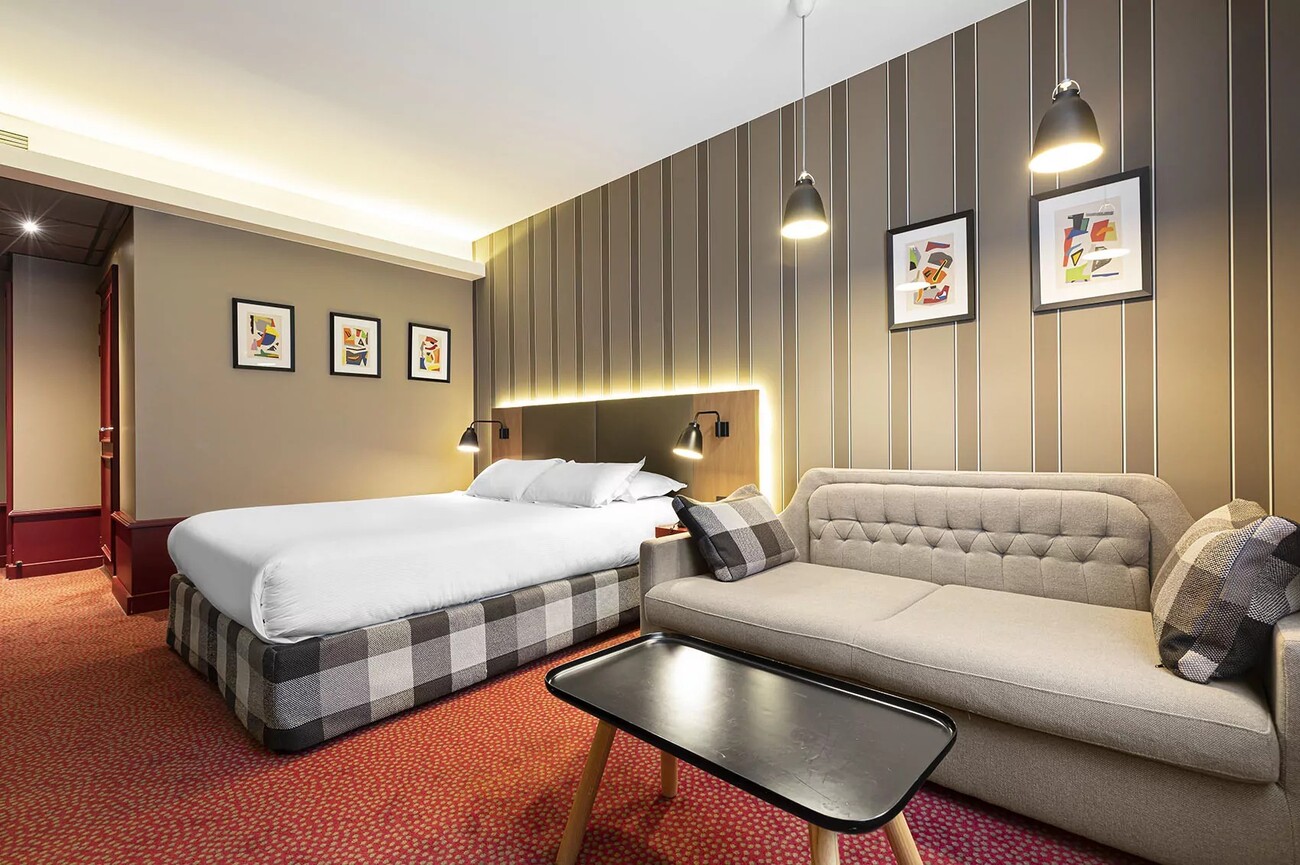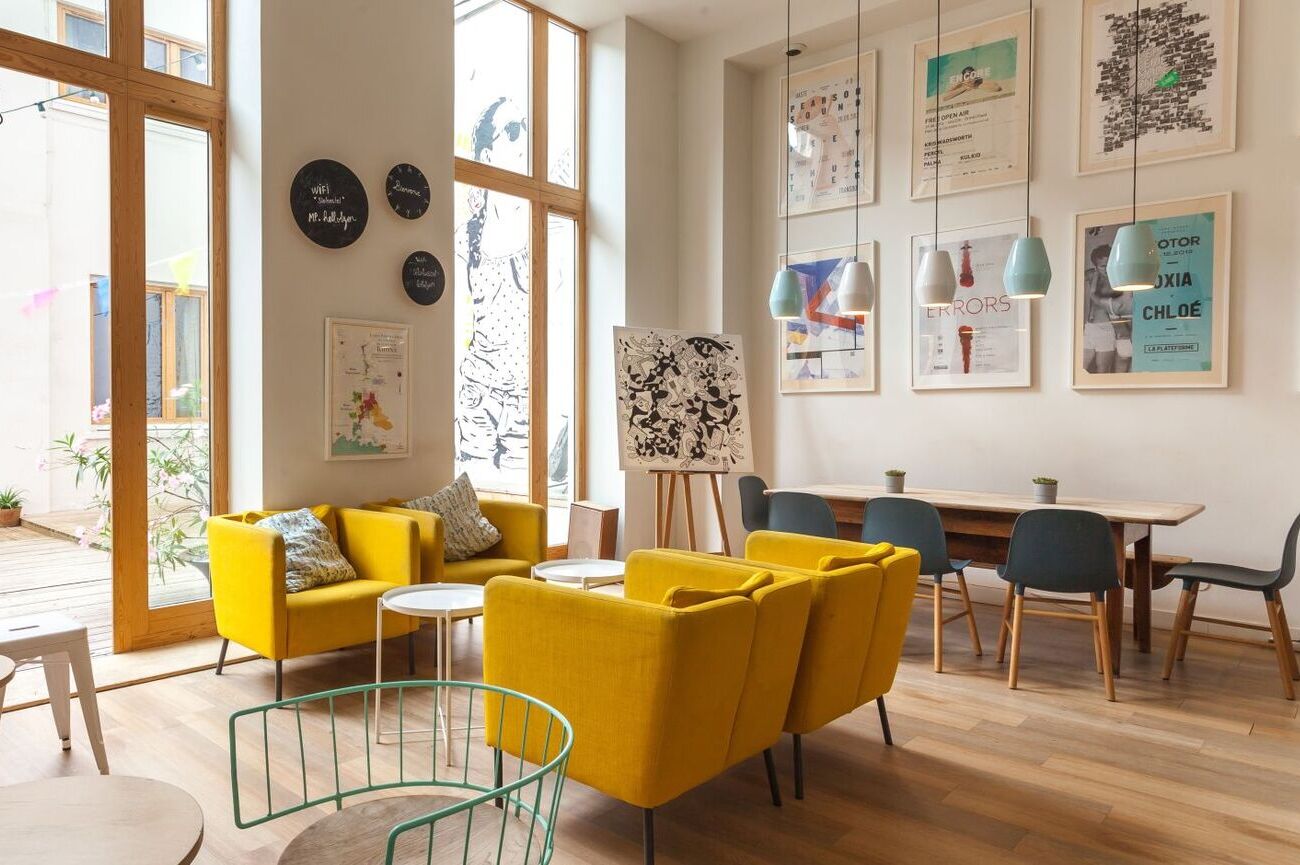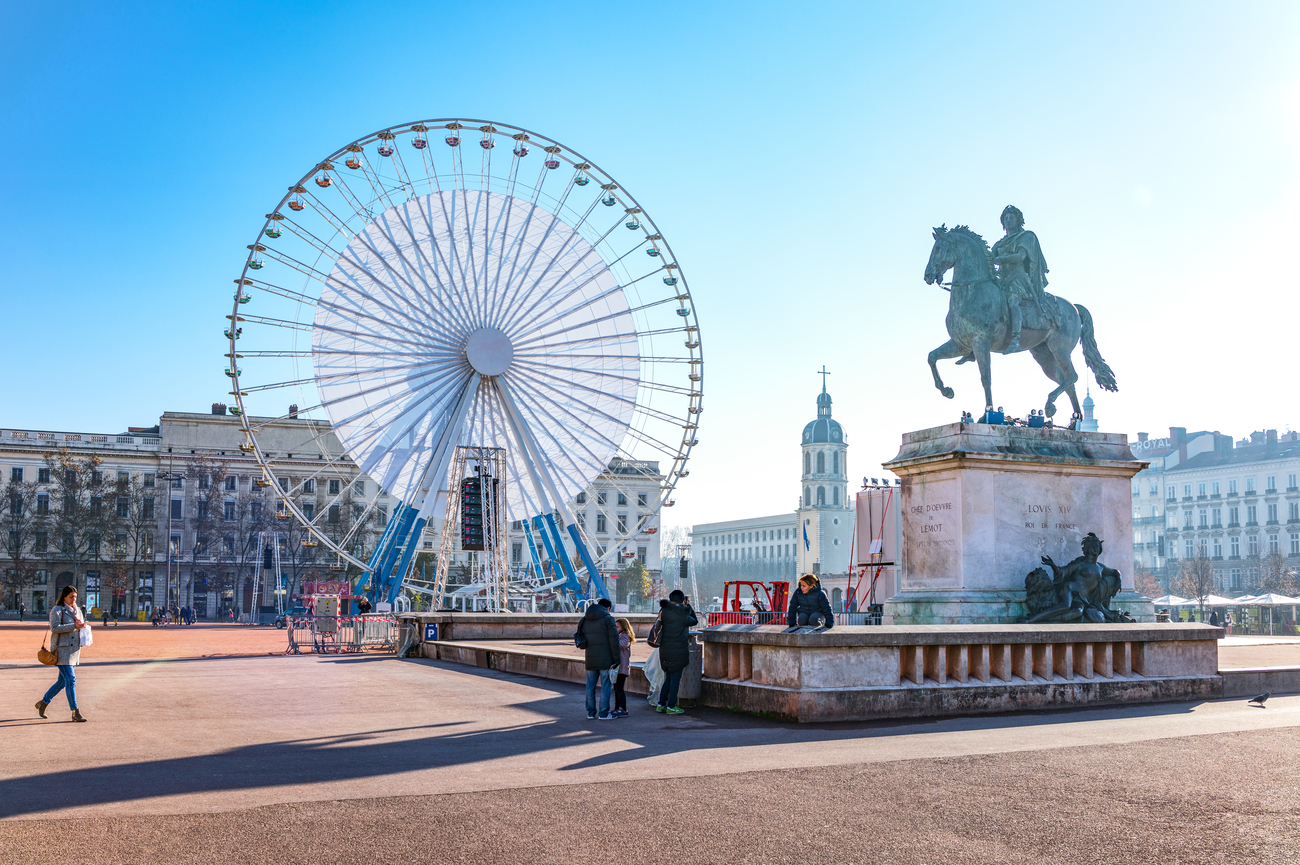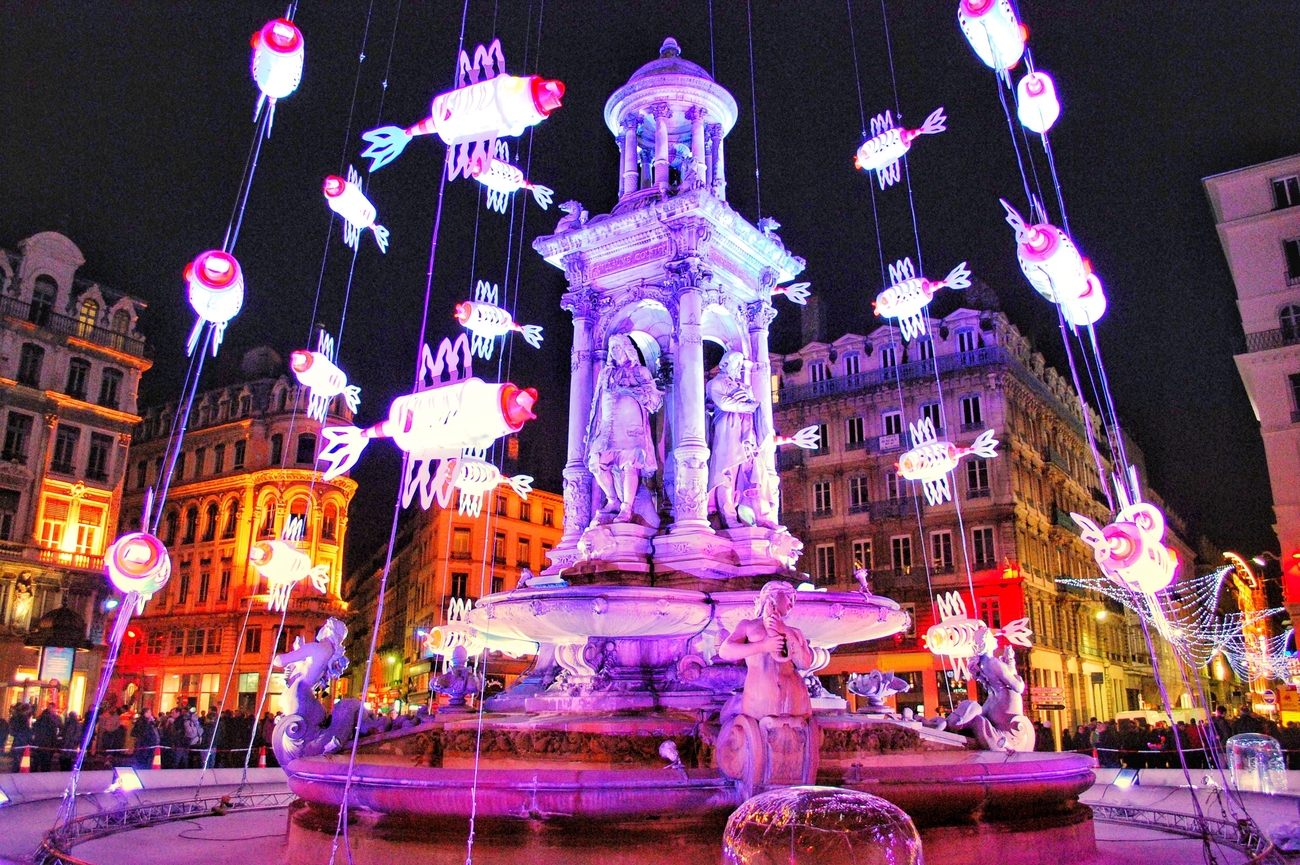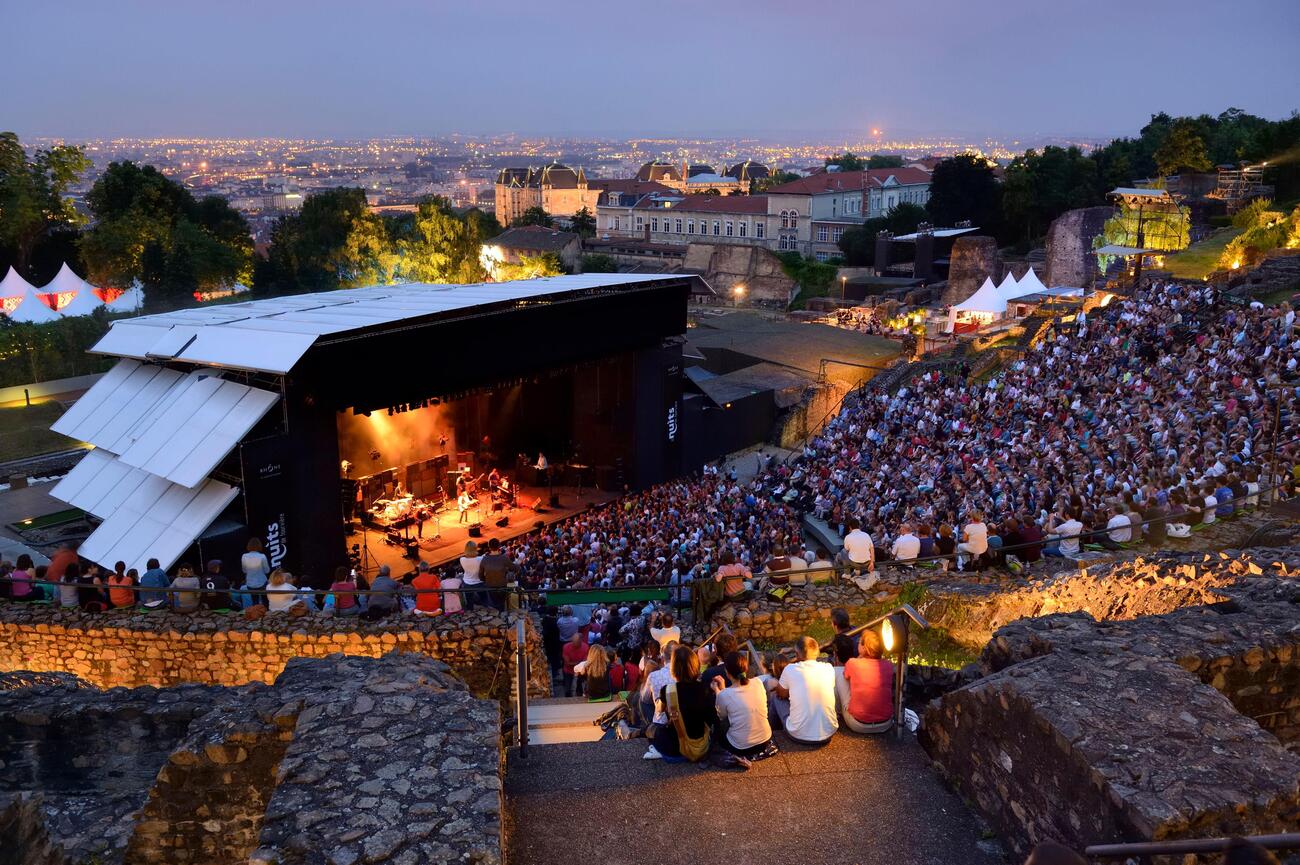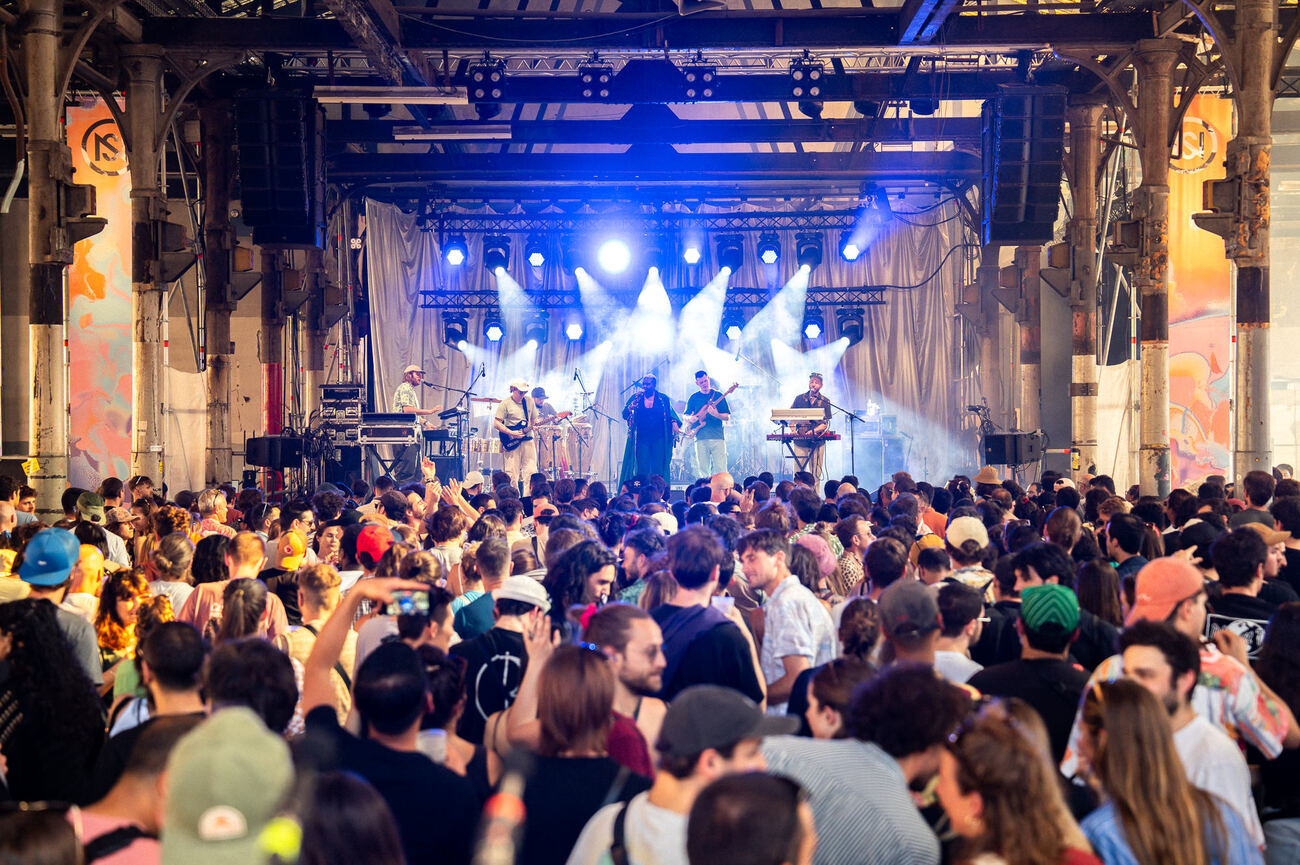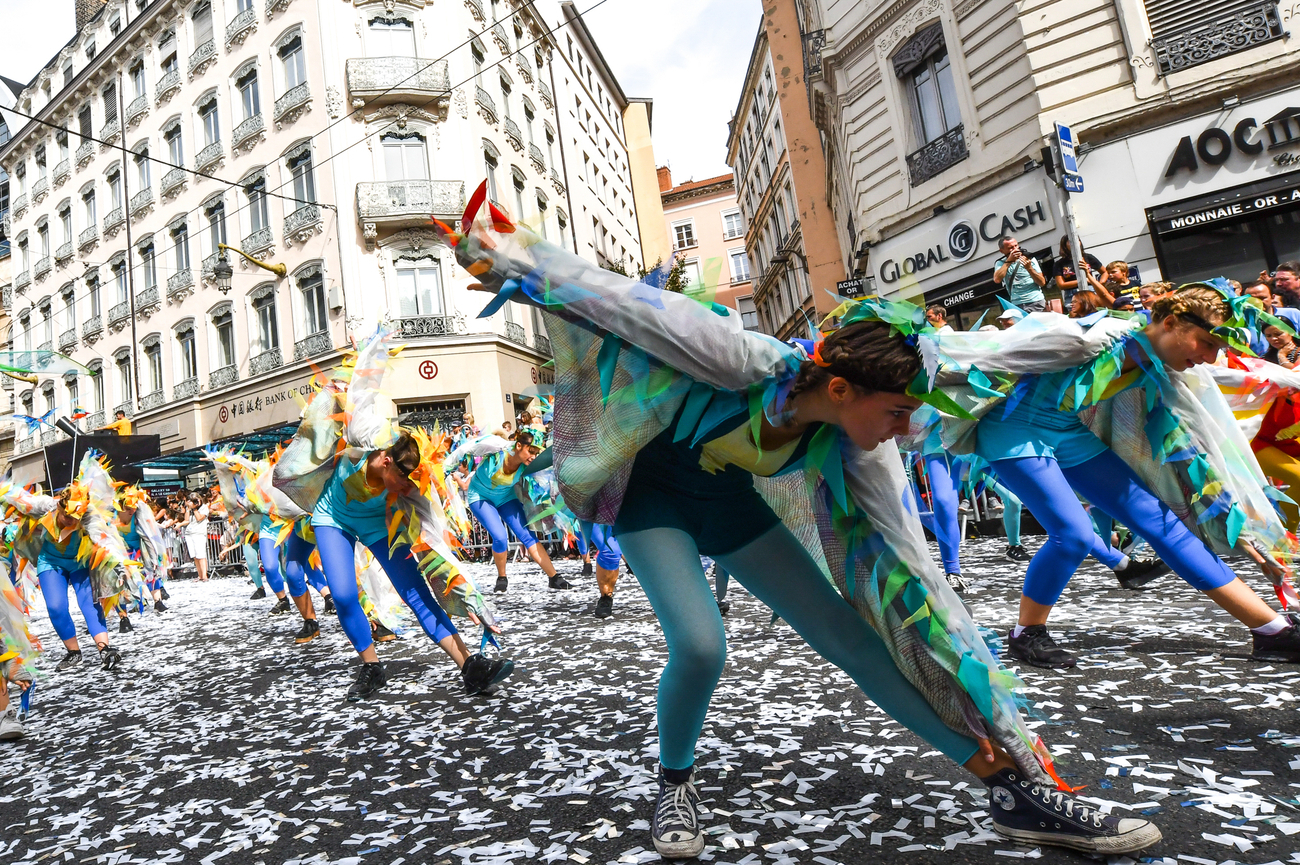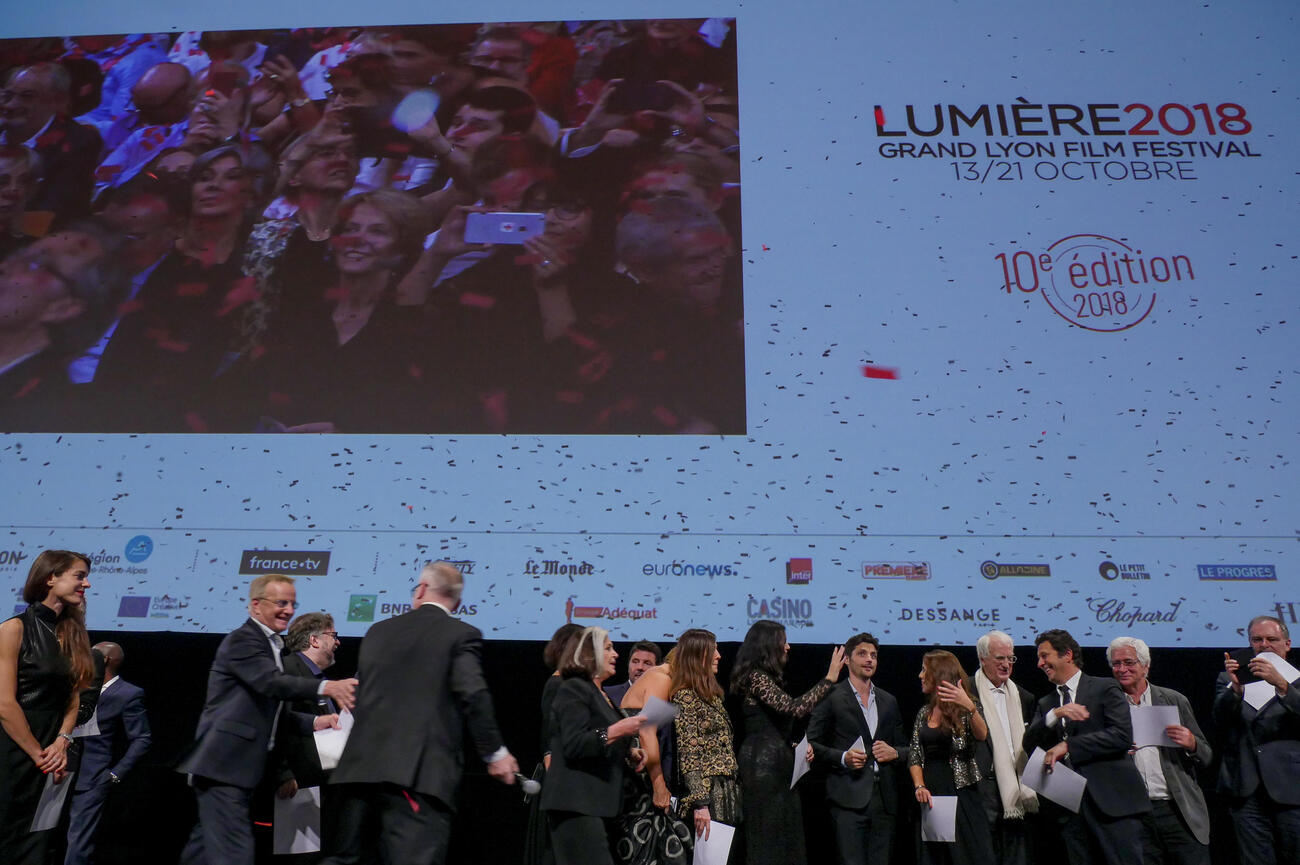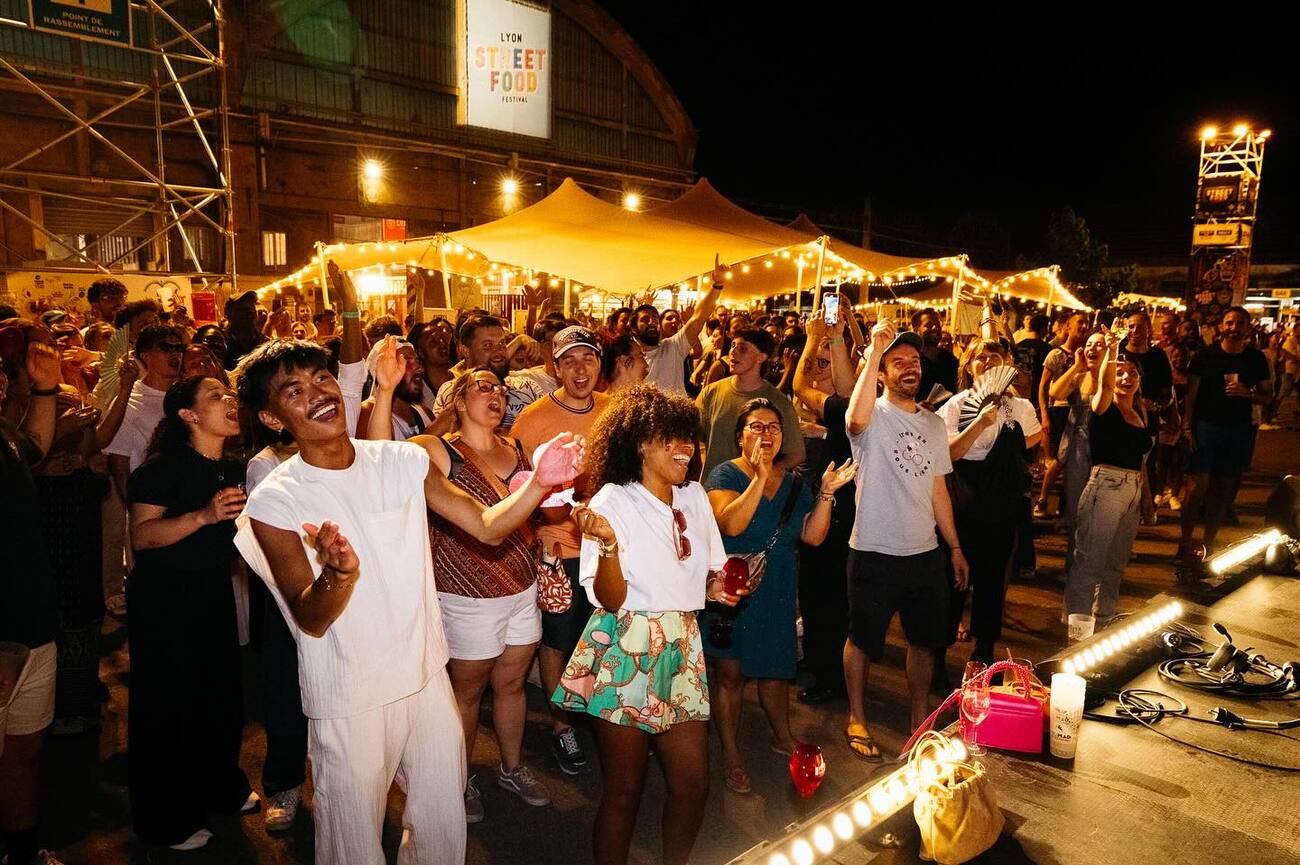Things to Do in Lyon: 4-Day Itinerary
Bienvenue to Lyon, the city that puts the “ooh” in bouillabaisse and the “oh là là” in la vie française!
Lyon is where history slow-cooks in Roman ruins, Renaissance alleyways whisper secrets and gastronomy reigns with buttery twists. This isn't some sleepy riverside town. Oh no, Lyon is double-dipping in drama: you've got not one, but two rivers, a skyline crowned with a basilica that looks like it time-traveled from a fantasy film and streets that feel like they've been dressed by a period-piece costume designer.
And the food? Let’s just say your taste buds are about to write their memoirs. The city is the undisputed culinary capital of France, where even the bouchons (local eateries) will leave you crying into your crème brûlée. With joy, of course.
But it’s not all fork and fancy: there’s street art, silk-weaving secrets, rooftop views and riverside strolls that make every step feel like a well-choreographed dance number. Whether you're into Roman amphitheaters or futuristic cubes, palatial fountains or hidden passageways, Lyon has a flair for every affair.
Feeling intrigued? Hungry? Mildly poetic? Perfect. We’ve stitched together a 4-day itinerary that’s part history lesson, part walking tour and part full-body food coma. Let’s get Lyon the road.
Day 1

Morning: Place Saint-Jean
Let’s kick off your Lyon adventure at the beating (and very photogenic) heart of Vieux Lyon: Place Saint-Jean. By day, it's a slow-sipping, photo-snapping haven where the cathedral’s Gothic-Romanesque facade puts on a stone-faced show. By night? The entire square glows like it’s been lit by candlelight, and yes, it is that romantic. Now, if you want to level up your visit, don’t just stand there, book a private architectural tour that takes you behind the scenes of the cathedral's astronomical clock (yes, it moves!), or go for a VIP guided walk through the adjacent traboules.
Cathédrale Saint-Jean-Baptiste
From Place Saint-Jean, it’s a whopping... 30-second walk. That’s right, take about 12 dramatically slow steps (coffee in hand, obviously), and you’re standing face-to-facade with one of Lyon’s most iconic landmarks: the Cathédrale Saint-Jean-Baptiste.
This cathedral has layers, like a really intense mille-feuille, but make it medieval. Construction began in the 12th century and wrapped up only 300 years later (they weren’t rushing). Step inside, and you’ll be greeted by vaulted ceilings, stained glass windows that throw kaleidoscopes onto the floor and the real star of the show: the astronomical clock. The mechanism of the clock performs. Angels ring bells, roosters flap and little figures pop out like it's a very holy cuckoo clock. It’s delightfully strange and 100% extra.
Maison des Avocats
Ready for a glow-up, medieval style? From the Cathédrale Saint-Jean-Baptiste, walk just around the corner and you’ll find yourself face-to-arch with the Maison des Avocats.
This place is not full of lawyers anymore (unless they’re here on a guided tour). This 16th-century marvel used to house Lyon’s legal guild, but today it’s one of Vieux Lyon’s most picturesque buildings. Think: pastel pink walls, delicate wooden galleries and those tall, arched windows that scream “Renaissance real estate goals.”
Traboules du Vieux Lyon
Welcome to Lyon’s best game of architectural hide-and-seek.
These stone corridors date back to the Renaissance, when silk merchants used them as clever shortcuts to shuttle precious fabrics without risking them in the rain. Fast-forward a few centuries, and the same passages became resistance routes during World War II. Today? They’re a mix of history, mystery and “are we allowed in here?” The best-known traboule near where you stand is at 27 Rue Saint-Jean, slipping you through hidden courtyards and out onto parallel streets like a magician’s trick. It’s like moving through time capsules stitched together by stone.
And if you want a luxe experience, then go book a private traboule tour. The guides have the keys to more locked passages, so you get the VIP version of Lyon’s architectural backstage. Without a guide, you’ll only see the “public” traboules (still spectacular, but like watching a concert from the nosebleeds).
Afternoon: Fourvière
Getting to Fourvière is half the fun, and yes, it’s uphill because all the good things in Lyon come with a climb. From the traboules of Vieux Lyon, it’s about a 15-minute walk to the funicular station at Vieux Lyon-Cathédrale Saint-Jean. Hop on, and in just a few minutes, you’re whisked skyward to the Basilique Notre-Dame de Fourvière.
The basilica itself is a delicious contradiction: neo-Byzantine flamboyance on the outside, celestial mosaics and gilded details on the inside. And once you step in, you’ll understand why it’s Lyon’s architectural version of “go big or go home.” The ceilings shimmer, the marble glows and the stained glass practically sings.
Esplanade de Fourvière
Good news: you don’t even have to move much for your next stop. From the basilica doors, it’s literally a two-minute stroll, or one if you’re eager, to reach the Esplanade de Fourvière.
This is the kind of view that makes postcards jealous. You’ve got the Saône and Rhône rivers carving elegant lines through the city, the red rooftops of Vieux Lyon clustered like a medieval jigsaw puzzle and the modern skyscrapers of La Part-Dieu trying their best to photobomb the scene.
It’s the spot where locals bring out-of-town guests to deliver the ultimate “See? Told you Lyon was beautiful” moment. And yes, it’s crowded at times, but that’s because everyone wants a piece of this cinematic view.
Theatres Romains de Fourvière
From the Esplanade, prepare for a 10-minute walk. Then you’ll step into Theatres Romains de Fourvière, Lyon’s time machine disguised as stone seating.
These open-air theaters aren’t just old; they’re 2,000 years old, built when Lyon was still Lugdunum, the Roman capital of Gaul. You’ll find two main structures: the Grand Theatre, which once hosted dramas, music and maybe a few gladiatorial gossip sessions and the smaller Odeon, reserved for poetry readings and philosophical musings (or what we’d now call “TED Talks in togas”). Today, the site still buzzes with life during the Nuits de Fourvière festival, where concerts and performances fill the ancient seats once again.
Musée Gallo-Romain de Lyon-Fourvière
Now this is Lyon’s ultimate time capsule. But don’t expect some dusty, creaky museum. This place is built into the hillside itself, all Brutalist concrete chic, as if the 1970s had a design consultation with Julius Caesar. Inside, you’ll find treasures that make Indiana Jones look underprepared: intricate mosaics, marble statues, everyday Roman gadgets and even ancient surgical tools that make you grateful for modern anesthesia.
But the star of the show is the Circus Games Mosaic, a giant Roman comic strip showing chariot races in action and the altar dedicated to the goddess Cybele, which proves the Gauls were already multitasking with gods before it was cool. The museum also gives context to the ruins you just visited, turning crumbled stone into fully fleshed stories of Roman life.
Evening: Montée des Chazeaux
From the Musée Gallo-Romain, you’re going to begin your descent into one of Lyon’s most atmospheric staircases. But calling this place just “a staircase” is like calling champagne “sparkling juice.” This is a 230-step stone runway that’s been carrying feet, secrets and the occasional late-night croissant run since the Renaissance.
The climb down is more than just cardio; it’s a living, breathing postcard of Vieux Lyon. There’s also the cheeky thrill of knowing this was once a strategic passageway for locals. The staircases served as quick exits, clandestine shortcuts and maybe even a few Romeo-and-Juliet rendezvous.
Passerelle du Palais de Justice
From the bottom of the staircases, it’s just a 5-minute stroll before you trade stone staircases for one of Lyon’s most elegant bridges. The Passerelle du Palais de Justice, a graceful 19th-century pedestrian suspension bridge, stretches across the Saône like a ribbon of red steel.
Here’s why it’s magic: stand in the middle and you’re treated to a panoramic masterpiece. To your left, the tiled roofs and lantern-lit streets of Vieux Lyon glow like a Renaissance painting. To your right, the Palais de Justice, with its row of illuminated columns, sits like a neoclassical stage prop daring you to stare. The bridge has this effortless ability to slow time down, inviting you to savor the city’s elegance without rushing.
Place du Change
And here is where you’ll drop the curtain on Day 1. Place du Change is a square that has worn more hats than a costume shop. In the Middle Ages, this was Lyon’s Wall Street. Front and center stands the Temple du Change, a former currency exchange that later transformed into a Protestant church. By dusk, the square becomes a stage, with street performers, musicians and locals gathering under warm lights that make the Renaissance stone glow like it’s wearing golden makeup.
Day 1 - Lyon Tour Map
Day 2

Morning: Place Bellecour
Day 2 starts in style at Place Bellecour, Lyon’s showpiece and one of the largest open squares in all of Europe. And when I say large, I mean LARGE. It’s so vast that you could probably fit a few football fields in here and still have room for a cheese market.
Front and center, you’ll spot Louis XIV on horseback, striking his best royal pose (rumor has it he’s been holding that posture since 1825. Talk about stamina). Around the edges, elegant buildings and shopfronts frame the square, but the real star here is the sheer sense of openness in a city otherwise filled with winding medieval alleys.
Rue de la République
Just a few steps and you will slip into one of Lyon’s most iconic promenades: Rue de la Republique. Locals lovingly call it “La Rue de la Ré.”. This pedestrian avenue stretches proudly toward Hôtel de Ville, lined with 19th-century Haussmann-style facades that look like they’ve been dressed by the finest Parisian architect tailors.
Think of it as Lyon’s version of the Champs-Élysée. Of course minus the Eiffel Tower at the end, but with just as much charm and perhaps a bit more humility. You’ll stroll past grand arcades, bustling boutiques and historic cafés where Lyonnais life has unfolded for generations. And while we’re skipping the shopping (this is about places, not purchases), the architecture alone deserves its own standing ovation.
Place des Jacobins
In about five minutes, you’ll stumble upon a little slice of Parisian elegance right here in Lyon: the Place des Jacobins.
The Jacobins Fountain is a 19th-century marble marvel featuring four sculpted figures, each representing a different Lyonnais artist. It’s essentially Lyon saying, “See? We don’t just make silk and sausages, we make culture too.” But the magic isn’t only aesthetic. This feels like a pause button in the middle of the city. Locals cross it on their way to work, kids run circles around the fountain and you, lucky traveler, get to soak in its calm while admiring the artistry that has made it one of Lyon’s prettiest squares.
Afternoon: Théâtre des Célestins
It’s time to head to a two-century-old temple of drama that has hosted everything from classical tragedies to avant-garde performances.
Theâtre des Célestins’ facade is a theatrical flair, with Corinthian columns and sculpted details that practically whisper “make an entrance.” Step inside (even if you’re not catching a show) and you’ll find plush red velvet, golden ornamentation and an auditorium so opulent it makes you want to burst into spontaneous monologue. It’s one of only a handful of theaters in France to boast such a continuous history of productions. And even if the stage is dark during your visit, the square outside the theater is lively in its own right.
Place des Terreaux
Go on a mini urban adventure. Along the way, Lyon slowly shifts from elegant boulevards to a more energetic, almost theatrical square of its own: Place des Terreaux.
This is no ordinary plaza; it’s the grand stage of civic and cultural Lyon. On one side is Hotel de Ville and on the other, Musée des Beaux-Arts guards its treasures in what used to be a Benedictine convent. And anchoring the entire square? Bartholdi’s dramatic fountain, where bronze horses seem to charge out of the water.
Fontaine Bartholdi
You don’t even need to leave Place des Terreaux for this one. Just turn your gaze and there it is: the Fontaine Bartholdi, a masterpiece so grand it almost upstages the square itself. Created by Frédéric Auguste Bartholdi (yes, the same genius who gave the world the Statue of Liberty), this fountain is a theatrical spectacle in bronze.
At its heart, a fierce woman steers a chariot pulled by four wild horses. But look closer: these aren’t just any horses. They’re symbolic of rivers, muscles straining as if they’re about to leap straight out of the fountain basin. It’s as if Lyon wanted its very own blockbuster action scene frozen in metal. Originally designed for Bordeaux (who, fun fact, said “non merci”), Lyon happily adopted it in 1892.
Musée des Beaux-Arts de Lyon
Still right on Place des Terreaux, you’ve hit the cultural jackpot: the Musée des Beaux-Arts de Lyon, often called the “Little Louvre” (though honestly, there’s nothing little about it).
This museum is housed in a former 17th-century Benedictine abbey and it’s a grand parade of 5,000 years of art, from Ancient Egypt to modern masters. Step inside and you’re greeted by hushed galleries lined with Rodin sculptures, serene courtyards perfect for a breather and halls where Delacroix, Monet and Picasso keep each other company. The collection is vast but never overwhelming. It feels like the curators knew you’d want to linger without sprinting through endless corridors.
For a deeper dive, the museum offers guided tours (usually in French, with some options in English depending on the season). These tours unpack the highlights so you don’t get overwhelmed by the sheer volume of treasures. If you prefer to wander at your own pace, there’s also an audioguide available, covering major works across the 70+ rooms. Special exhibitions also rotate throughout the year, so even repeat visitors get something fresh.
Evening: Place Louis Pradel
As the day winds down, make your way to Place Louis Pradel, just a short walk from the Musée des Beaux-Arts. The square sits right between the Rhône and Saône rivers and by evening, the area starts to buzz with energy.
The centerpiece here is the sculpture of the Centaur by César Baldaccini, an unapologetically bold, almost chaotic piece of modern art that contrasts beautifully with the neoclassical architecture around it. It’s one of those spots where you realize Lyon isn’t just about history, it’s about constantly reinventing itself.
Pont Lafayette
To close out Day 2, take a gentle stroll to the Pont Lafayette, one of Lyon’s most elegant bridges stretching across the Rhône.
This bridge was built in the 19th century and named after the Marquis de Lafayette, the French hero who also played a starring role in the American Revolution. Stand in the middle and look out: on one side, the stately facades of Presqu’île glow softly, and on the other, the Rhône flows wide and serene. This is the perfect bow to tie up your second day.
Day 2 - Lyon Tour Map
Day 3

Morning: Roseraie internationale
Day 3 starts with roses, literally thousands of them. Go and drop by the Parc de la Tête d’Or, where the Roseraie Internationale feels less like a garden and more like nature showing off. With over 30,000 rose bushes representing around 350 varieties, it’s basically Lyon’s way of flexing its green thumb (and pink, red, yellow, and white ones too).
Here’s the fun bit: Lyon wasn’t just known for silk; it was once the rose capital of the world. Breeders here created iconic hybrids that spread across Europe, so you’re technically walking through a living history book.
Lac du Parc
From Roses to ripples. It’s a gentle 5-minute stroll from the Roseraie Internationale to Lac du Parc and suddenly, you’re at the water’s edge.
The Lac du Parc, centerpiece of Parc de la Tête d’Or, is where Lyon slows its heartbeat. Spread across 16 hectares, it’s a little world of its own: boats bobbing lazily, joggers skimming past, ducks negotiating breadcrumb treaties. If you’re up for it, you can rent a pedal boat or rowboat (because cardio is always more fun when it involves water and a hint of competition).
Afternoon: Boulevard des Belges
After you’ve rowed, strolled, or people-watched your way around Lac du Parc, it’s time to swap water views for architectural catwalks. Boulevard des Belges is the city’s version of haute couture. It is lined with 19th and early 20th-century mansions lined up like models at fashion week. These aren’t just houses; they’re statement pieces, the kind of real estate that makes you rethink your career choices. Many belonged to Lyon’s silk barons, merchants and industrial elite, who clearly believed in two things: big windows and bigger egos.
Place du Maréchal Lyautey
Keep following the rhythm of Lyon’s elegant Right Bank, and in just a 10-minute stroll, you’ll trade leafy mansions for one of the city’s most photogenic squares: Place du Maréchal Lyautey.
This spot is all about balance. It’s part postcard, part playground. At its center, a grand fountain sparkles like Lyon’s unofficial meeting point, framed by manicured trees and Belle Epoque facades that look like they’ve been ironed crisp for the occasion. And here’s the kicker: Place du Maréchal Lyautey isn’t just about looks. It’s a cultural chameleon. One week, you’ll stumble on a flower market spilling color across the cobblestones, the next it’s a casual hangout spot for business types sneaking in a break.
Evening: Pont Winston Churchill
Now it’s time to meet Lyon’s most striking crossings: the Pont Winston Churchill.
This is named after Britain’s indomitable bulldog of a Prime Minister, it’s Lyon’s own reminder that resilience can be built into stone and steel. The bridge stretches across the Rhone with a confident sweep and it gives you a front-row view of the river as it catches the last light of the day. But here’s the real treat: from the middle of the bridge, you get a cinematic panorama.
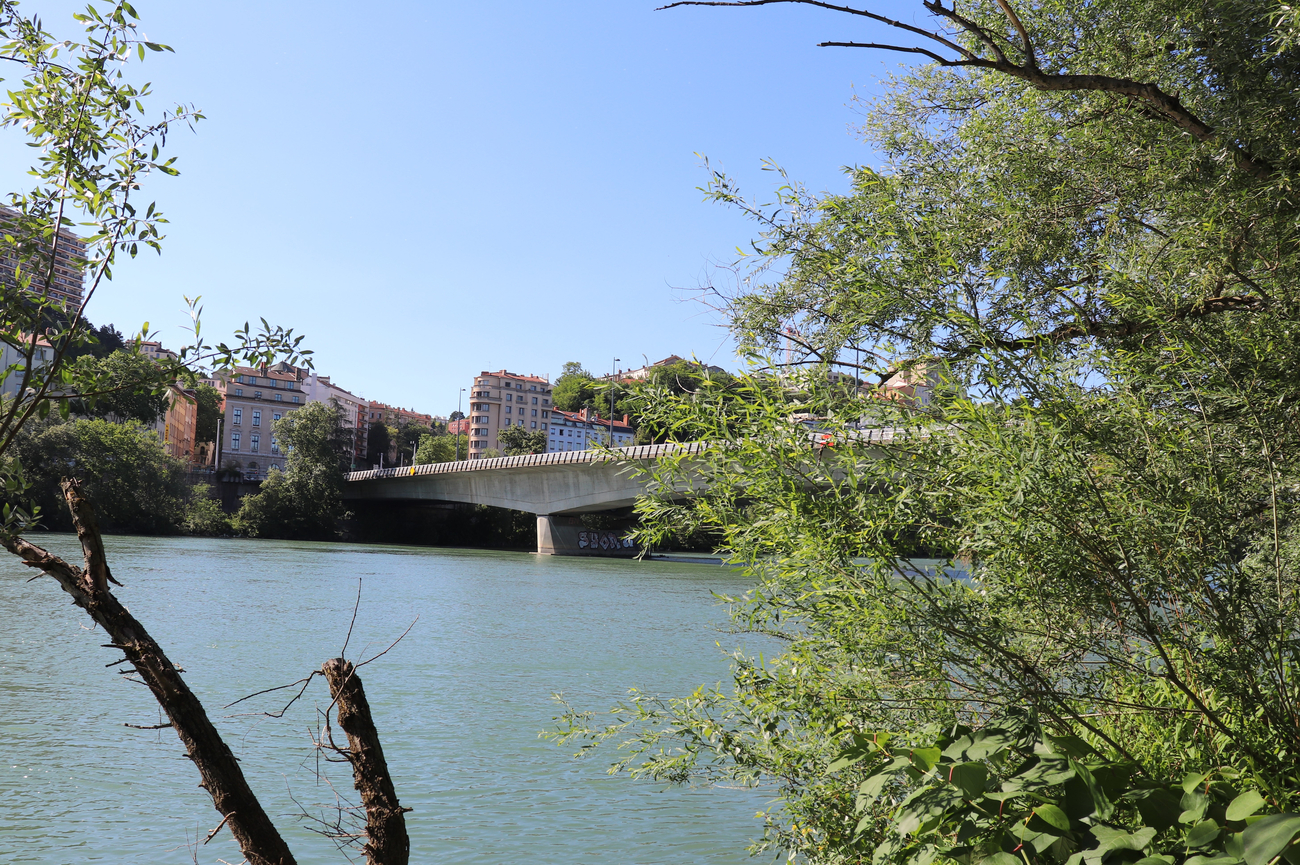
Quai Charles de Gaulle
A 10-minute stroll will take you to the Quai Charles de Gaulle. It is named after France’s famous general-turned-president. This riverside stretch is less about medieval cobblestones and more about glass, steel and forward-thinking architecture. The Quai is flanked by the city’s Congress Center, luxury hotels and the contemporary Cité Internationale complex, making it feel like the “business class” section of Lyon.
But don’t think it’s all suits and briefcases. This is also where art, leisure and nature mingle. The Parc de la Tête d’Or peeks over one side, while on the other, the Rhône River keeps things cool and scenic.
Place Jules Ferry
A quick tram ride will land you at Place Jules Ferry, the perfect spot to close out Day 3. This leafy square, tucked right by the Rhône, has the kind of calm energy that feels like a deep exhale after a day of sightseeing. It’s less about grand monuments and more about atmosphere.
The square is named after Jules Ferry, the French statesman who pushed for free public education in the 19th century. You will be ending your day here feeling like you’ve made a nod to learning, discovery and, let’s be honest, giving your feet a much-deserved lesson in rest.
Day 3 - Lyon Tour Map
Day 4

Morning: Musée des Confluences
Day 4 kicks off with a bit of drama, and I mean architectural drama. It looks less like a museum and more like a spaceship that landed in Lyon and decided to stay because, frankly, who wouldn’t? Its bold glass-and-steel design sits right at the point where the Rhône and Saône rivers meet.
Inside, things only get wilder. The exhibitions aren’t your run-of-the-mill “dusty old artifacts behind glass.” Nope. This place takes you from the birth of the universe to the fate of humanity in a single morning. One gallery hits you with dinosaurs, another with ancient civilizations and before you know it, you’re contemplating what life might look like in the future. It’s like speed dating with all of human history.
After visiting the Musée des Confluences, take time to explore the surrounding Confluence district, a striking modern redevelopment with bold architecture, a marina, and the La Sucrière art space.
Pont Raymond Barre
Leaving the Musée des Confluences, you don’t even need to open Google Maps; just follow your feet. Step outside, look east, and there it is: the Pont Raymond Barre, practically winking at you from a few steps away. In under three minutes, you’re on it.
And this isn’t just any crossing. This is Lyon showing off its contemporary flair, a sleek white curve built for people, not cars. It is named after local-born Prime Minister Raymond Barre. Stride across and you’ll feel like Lyon has staged the perfect runway moment: wind in your hair, skyline in the distance and the river glittering beneath your feet.
Darse de la Confluence
Now this is Lyon’s playground of water and light. Head south from Pont Raymond Barre and along the walkway, and within a breezy 10-minute stroll, you’ll find yourself at this sparkling marina, where sleek boats bob like they’re auditioning for a Riviera postcard.
This is where Lyon flips the script: instead of Gothic spires and Roman ruins, you’ve got glassy modern architecture mirrored in the water and a vibe that’s equal parts chic and laid-back. Locals come here to sip wine on terraces, jog along the quay or just watch the sun bounce off the river like a spotlight at a concert. And here’s the fun twist: the Darse is more than just eye candy. It’s also a hub for river cruises. Go and hop on a guided boat tour and see Lyon from the water.
Afternoon: Place Nautique
It’s time to drop by Lyon’s stylish little harbor, where the city swaps cobblestones for catamarans. Here, modern life drapes itself along the water with cafés, terraces and yachts that look so polished you’ll wonder if they were waxed that morning just for your arrival. You can definitely grab your lunch here.
This isn’t your run-of-the-mill town square; it’s a stage set for the good life, where cappuccinos taste better with river views and where every corner feels like a gentle nod to Copenhagen or Amsterdam. And if you are still up for a bit more adventure, if the previous days aren’t enough, there are boat tours that depart from here too.
Rue Victor Hugo
You can’t end a trip in Lyon without experiencing the shopping scene. Go to Rue Victor Hugo. This is the city’s runway, where locals and visitors alike strut between boutiques, bakeries and bistros with the confidence of someone who knows they’re in France (and therefore automatically fashionable).
This is a 19th-century boulevard dripping with Haussmann-style facades, arcades and that distinctly European rhythm where window-shopping somehow counts as a cultural activity. Whether you’re hunting for the perfect scarf, the ultimate pastry, or just a little slice of Lyonnais daily life, this street delivers it with charm and a hint of hustle.
And let’s not forget the name, Victor Hugo. This is a subtle tribute to the man who made words larger than life. As you stroll, you can almost hear echoes of his passion for justice, art and society woven into the rhythm of the city.
Quartier Sainte-Blandine
Go take a 10-minute walk south to Quartier Sainte-Blandine. This area has that rare mix of old-world charm and modern reinvention.
This spot is perfect for a sunset stroll. The light hits the water just right, bouncing off renovated warehouses and modern cafés, creating reflections that could make any Instagram feed jealous. It’s quieter than the bustling city center, letting you soak in the serene rhythm of Lyon’s riverside life without the usual crowds.
Evening: Place Antonin Poncet
Before ending your Lyon trip, go experience the right mix of elegance and energy. At the heart of the square, the Lambert Fountain steals the show, its water jets catching the glow of the city like a choreographed dance. Locals linger on benches, friends gather for an aperitif and passersby stroll through as if the square itself were a stage. The surrounding architecture hints at Lyon’s layered history, while the open layout and modern lighting ensure it feels fresh, lively and very much contemporary.
Pont de l’Université
And just like that, your Lyon adventure draws to a close. The Pont de l’Université is the perfect spot to bid adieu to this vibrant city. By evening, the lights of Lyon dance on the water, the Presqu’île glows softly and the river reflects every shade of the city’s charm. Walking across, you can feel the layers of history, culture and modernity converge, a gentle reminder of the four days you’ve spent exploring cobblestone streets, majestic cathedrals, leafy boulevards and contemporary marvels.
Ending your trip here is Lyon’s final wink: a serene moment to savor the memories, snap one last photo and carry the city’s elegance with you long after you’ve crossed back to the other side.
Day 4 - Lyon Tour Map
Other Things to Do in Lyon
Welcome to Lyon, the city where elegance flows as smoothly as the Rhône and every street corner whispers “je ne sais quoi.” We’ve not only selected Lyon’s absolute must-sees, but we’ve also curated a list of other things to do. Whether it’s gastronomy, history, architecture or panoramic views, we’ve got you covered.
- Basilique Notre-Dame de Fourvière: Take the funicular or a private car service up to the Basilique Notre-Dame de Fourvière and elevate your experience, literally. Beyond the glimmering mosaics and gilded ceilings, ask for a private rooftop access. Here, the city stretches below like a meticulously arranged chessboard.
- Les Halles de Lyon Paul Bocuse: Foodies, this is your playground. But if you really want to indulge, book a private tasting with a top chef. Think rare cheeses, truffles and wines selected just for you, paired with stories of Lyonnais culinary history. Don’t just buy; learn, taste, and experience. Some high-end packages include chef-led cooking classes or a behind-the-scenes look at the market’s most prized stalls.
- Atelier Municipal de Tissage (Municipal Weaving Workshop): Now it’s time to step into Lyon’s silk heritage. Skip the general tour and book a private demonstration with a master weaver. Watch the Jacquard looms dance under expert hands and even craft a miniature silk keepsake for yourself.
- Institut & Musée Lumière: Located in the Monplaisir district, the Institut & Musée Lumière occupies the elegant family home of Auguste and Louis Lumière, inventors of the cinematograph in 1895. Inside, you’ll find early cameras, projectors, and reels, along with screenings of the first moving pictures ever made. It’s a fascinating stop for cinema enthusiasts and a chance to see where the story of film began.
- Opéra de Lyon (Opéra Nouvel): Near Place des Terreaux, the Opéra de Lyon is a striking blend of 19th-century architecture and modern design by Jean Nouvel, who added its distinctive glass dome in the 1990s. Today it hosts world-class opera, ballet, and concerts, making it one of Lyon’s leading cultural venues.
- Les Subsistances: Set on the banks of the Saône, Les Subsistances is a former military warehouse transformed into a vibrant contemporary arts centre. Its industrial halls and glass-covered courtyard now host cutting-edge theatre, dance, music, and visual arts, often with an experimental twist. With workshops, performances, and festivals throughout the year, it’s a creative hub where Lyon’s modern cultural scene comes alive.
Day Trips from Lyon
Lyon might be a showstopper all on its own, but sometimes even the star of the show needs a supporting cast. Enter: day trips. Just a short drive, train ride or scenic jaunt away, the surrounding region is bursting with medieval villages, Alpine peaks and vineyards that could make Bacchus blush. Now, hit the road and see what the Lyonnais region has in store.
- Perouges: Just a short 35-minute drive from Lyon and you’re stepping straight into the Middle Ages. Perouges’ cobblestone streets, ramparts and half-timbered houses whisper stories of knights, merchants and long-forgotten secrets. Stroll the winding alleys, sample the famous “galette de Perouges” and feel like the star of your own period drama.
- Annecy: In just under two hours, you can be in Annecy, the “Venice of the Alps.” Canals weave through pastel-colored houses while Lake Annecy reflects snow-dusted peaks like a perfect mirror. Rent a private boat or join a guided lakeside walk, sip local wine, or indulge in regional cheeses.
- Beaujolais Vineyards: A 40-minute escape from the city and you’re surrounded by rolling hills of vineyards, sun-drenched vines and elegant chateaux. Taste celebrated Gamay wines, tour the cellars and meet passionate vintners. For a high-end twist, schedule a private wine-tasting experience or a vineyard picnic overlooking the Rhône Valley.
- Cremieu: Just one hour from Lyon lies Cremieu, a medieval treasure frozen in time. Arcaded streets, ancient ramparts and charming squares invite exploration. You can also join private tours to elevate your visit.
- Vienne: Just 35 minutes down the road, Vienne offers a Roman history lesson wrapped in charm. Amphitheaters, temples and cobbled streets transport you back two millennia. For an extra layer of luxury, take a private guided tour that reveals hidden ruins, local anecdotes and historical secrets the casual visitor often misses.
- Croix-Rousse: Not very day trip has to involve leaving Lyon. Sometimes the adventure is just 15 minutes and a hill away. Croix-Rousse is part of the city’s UNESCO World Heritage site. Once the stomping ground of silk workers, this district is stitched together (pun intended) with traboules. Walking through Croix-Rousse feels like stepping into a living history book with a modern soundtrack. While in Croix-Rousse, don’t miss the Mur des Canuts, the world’s largest fresco, depicting Lyon’s silk-weaving heritage.
- Chamonix-Mont-Blanc: A 2-hour-and-20-minute drive will whisk you to Chamonix, the Alpine adventure capital. Scale Mont Blanc via cable cars, wander glaciers or simply drink in epic views of Europe’s highest peak.
Things to Do with Kids in Lyon
Lyon isn’t just for foodies and history buffs; it’s a playground for little explorers too! From miniature cities to soaring basilicas, the city has a way of turning curious kids into mini-adventurers. We’ve curated a list of the best family-friendly spots where learning, laughter and a little bit of chaos go hand in hand. Expect interactive museums, scenic funicular rides and parks where imaginations can run as wild as the Rhône.
- Parc de la Tête d’Or: This is a sprawling green kingdom where kids can burn off energy, spot peacocks and even say hello to giraffes at the zoo. With its massive rose gardens, serene lake and winding paths perfect for scooters or tiny bikes, the park is basically a playground the size of a small city. Families can rent pedal boats or cycle around the lake while picnicking on the lush lawns.
- Mini World Lyon: Ever dreamed of traveling the world without leaving Lyon? Mini World Lyon brings that dream to life with intricate, animated miniature cities, mountains and even moving trains. Kids can marvel at tiny cars cruising, people bustling about and nightfall lighting effects that turn the miniature world into a glowing spectacle. It’s a whimsical mix of engineering, imagination and a pinch of magic that delights both kids and adults.
- Aquarium of Lyon: Dive into Lyon’s underwater universe at the Aquarium of Lyon, where kids can explore over 5,000 marine creatures. Interactive touch pools allow little hands to feel sea stars and other friendly creatures, while themed exhibitions explain the wonders of ocean conservation. Take your child here for a hands-on adventure in marine biology that keeps curiosity afloat.
- Musee des Confluences: Lyon’s futuristic museum is an expedition for little minds. At the Musée des Confluences, kids can journey through the evolution of life, gaze at dinosaur skeletons and explore hands-on exhibits that mix science, anthropology and natural history. With interactive spaces, storytelling exhibits and immersive displays, it’s a day of wonder where learning feels more like play than school.
- Fourvière Hill: Adventure reaches new heights at Fourvière Hill. Beyond the iconic Basilique Notre-Dame de Fourvière, families can ride the funicular up the hillside for sweeping city views that make everyone gasp in unison. At the top, kids can explore the surrounding gardens, Roman ruins and hidden passageways while snapping photos like junior historians.
- Théâtre La Maison de Guignol - Vieux Lyon: No visit to Lyon is complete without meeting the city’s most famous puppet: Guignol. At Théâtre La Maison de Guignol, children can enjoy lively puppet shows featuring the cheeky hero who has entertained Lyonnais kids for over 200 years. Some performances even invite children to interact with the puppets, turning them into tiny co-stars in Lyon’s theatrical legacy.
Golf Courses in Lyon
Think Lyon is just Renaissance alleys, gourmet food and river views? Think again. For those who like their leisure with a side of precision, this city. It offers golf courses that mix verdant fairways, rolling hills, and just enough challenge to make your swing feel heroic. Whether you’re a seasoned golfer or just picking up the club, Lyon’s greens provide a luxurious escape from the urban buzz.
- Golf Club de Lyon: This is the flagship of Lyon’s golfing scene, a course where precision meets prestige. Mature trees line the fairways, greens are smooth as silk and each hole feels like a carefully curated stage for your perfect shot. It’s the kind of place where your swing feels cinematic and your scorecard could practically double as a souvenir.
- Golf Bluegreen Grand Lyon Chassieu: A modern classic in Lyon’s golf scene, Bluegreen Grand Lyon Chassieu combines accessibility with style. Rolling fairways, water features and tastefully placed bunkers create a playful challenge for golfers of all levels. The club also offers lessons and practice facilities for those eager to polish their swing.
- Lyon Salvagny Golf Club: Lyon Salvagny is where luxury and landscape converge. Its undulating terrain, well-manicured greens and thoughtfully designed holes provide both a mental and physical challenge. The club is known for its welcoming atmosphere, but don’t be fooled, the course demands respect.
- Golf de Lyon Tassin: Tassin is perfect for those who crave a green oasis without straying far from Lyon’s urban energy. Its challenging fairways, strategically placed hazards and scenic surroundings create an engaging day of golf. The clubhouse offers an inviting setting for socializing, from a casual coffee to an elegant aperitif after a satisfying round.
Race Courses in Lyon
When it comes to horse racing, the city keeps it simple. There’s just one major racecourse in town. This is the perfect place to catch the thrill of the race while soaking in a uniquely Lyonnais atmosphere.
- Hippodrome de Lyon-Parilly: Although not in Lyon, it is located just southeast of Lyon, the Hippodrome de Lyon-Parilly is the city’s premier (and only) racecourse. Opened in 1965, it hosts a variety of races including flat, jumps and harness racing. After a major renovation in 2014, the facilities now offer more comfort, with panoramic restaurants and lounges giving visitors stunning views of the races and the surrounding park.
Michelin-Starred Restaurants in Lyon
Get ready to taste Lyon in haute couture. These Michelin-starred tables don’t just serve food, they tell stories, single out local terroir and plate artistry with a wink. Here are the starred gems giving Lyon its foodie fame:
- L’Atelier des Augustins: Think of L’Atelier des Augustins as the place where tradition and creativity sit at the same table. Chef Nicolas Guilloton crafts dishes that feel familiar but surprise you with modern flair. The atmosphere is relaxed, almost like dining in a friend’s stylish home, except that friend happens to cook at Michelin-star level.
- La Mère Brazier: This is where Lyon’s culinary history lives and breathes. It holds two Michelin stars and you’ll understand why. Founded in 1921, La Mère Brazier is legendary. This was once the training ground of Paul Bocuse himself. Today, Chef Mathieu Viannay carries the torch with dishes that honor Lyon’s gastronomic heritage while adding his own modern touch.
- Burgundy by Matthieu: If wine had a temple in Lyon, it would be Burgundy by Matthieu. Awarded one Michelin star, this restaurant celebrates the terroir, pairing exquisite plates with some of the finest bottles France has to offer. Expect precision in every detail, from presentation to pairing, creating a dining experience that feels like a love letter to Burgundy’s vineyards.
- Les Terrasses de Lyon: Imagine savoring gourmet French cuisine while looking out over the rooftops of Lyon. With one Michelin star, Les Terrasses de Lyon is perched inside Villa Florentine and is both a feast for the palate and the eyes. Chef David Delsart marries seasonal ingredients with artistic plating, ensuring every dish matches the breathtaking view.
- Au 14 Fevrier: Step into romance, Japanese style. This intimate restaurant has been awarded one Michelin star for its delicate fusion of French ingredients and Japanese techniques. With only a handful of tables, it feels personal.
Restaurants in Lyon
Lyon is one of those cities where food isn’t just a part of life, it is life. Forget quick bites; here, every meal is an experience, every dish tells a story. This is the city that gave birth to Paul Bocuse and the modern idea of haute cuisine, but it’s also a place where a simple bouchon can make you feel like you’ve discovered the meaning of comfort food.
- La Gache: This is Lyon’s answer to modern comfort food. Think brunch spreads with artisanal pastries, rich coffee and plates that balance indulgence with a hint of freshness. It’s where locals come to slow down, chat and people-watch. Their brioche perdue (French toast) is the sweet spot between nostalgia and sophistication.
- Gabriella Le Clan Des Mamma: This is Italy with a Lyonnais twist. It is colorful, boisterous and full of life. Gabriella serves up wood-fired pizzas and fresh pasta in a dining room that feels like a lively family kitchen. Don’t miss their truffle pasta. It’s the kind of dish that makes the table go quiet for a moment of reverence.
- Court Bouillon: A love letter to the sea in a landlocked city. Court Bouillon puts fish and seafood center stage with a daily menu that changes depending on the catch. From perfectly seared scallops to hearty bouillabaisse, it’s proof that Lyon can do seafood as brilliantly as its meat-heavy bouchons.
- Souk Souk: Step off the Rhône and into the colors, spices, and aromas of Morocco. Souk Souk is all about slow-cooked tagines, fluffy couscous and fragrant mint tea served with a smile.
Where to Drink in Lyon
If Lyon is the capital of gastronomy by day, it becomes a city of rhythm and revelry by night. From intimate jazz caves to dance floors that don’t sleep until sunrise, the city’s bar and club scene is just as diverse as its food culture.
- The Phantom of the Opera: Don’t let the name fool you. This isn’t a theater, but one of Lyon’s most eccentric bars. Expect quirky décor, moody lighting and a cocktail list that’s as dramatic as its title. Order something bold, sit back and watch the night unfold.
- La Clef de Voute: If live jazz is your idea of a perfect evening, this vaulted cellar is a must. The acoustics are incredible, the atmosphere is intimate and the lineup often features some of the best jazz musicians in France. Think candlelit tables, a glass of wine and smooth saxophone solos carrying you late into the night.
- Paddy’s Corner: Lyon’s take on the Irish pub experience. Guinness on tap, hearty pub food and a crowd that’s always ready to cheer for rugby or football on the big screen. Whether you’re after a casual pint or the energy of a packed game night, Paddy’s Corner is that familiar, friendly anchor in the city.
- Groom: When the night calls for something sleek and stylish, Groom delivers. A club where DJs spin everything from disco to electro, it’s got a cocktail bar upstairs and a dance floor downstairs.
- L’Artchimiste: This one’s for the alchemists of the night. A cocktail bar that treats mixology like high art, L’Artchimiste pushes boundaries with inventive drinks served in theatrical, almost magical fashion.
Where to Stay in Lyon
- Villa Florentine (5 stars): If Lyon had a crown jewel, this would be it. Perched on the Fourvière hill, Villa Florentine is a former convent turned luxury hotel, offering sweeping views of the Old Town below. Think infinity pool with a skyline panorama, Renaissance-inspired interiors and a Michelin-starred restaurant on site.
- InterContinental Lyon-Hotel Dieu (5 stars): Few hotels can say they live inside a UNESCO-listed landmark, but Hotel Dieu can. This 18th-century hospital has been reborn as one of Lyon’s most prestigious addresses. High ceilings, grand arches and a cocktail bar under a jaw-dropping dome make this a stay you won’t forget. It’s where modern luxury meets centuries of heritage.
- Hotel Silky by HappyCulture (4 stars): Hotel Silky is exactly what its name suggests: smooth, stylish and irresistibly cozy. With vintage-inspired décor and friendly service, this boutique gem feels like you’re staying in a chic Parisian apartment, except with Lyonnais charm.
- Hotel Carlton Lyon- MGallery Collection (4 stars): Elegance with a dash of Belle Epoque glamour. Nestled on the Presqu’île, Hotel Carlton Lyon feels like stepping into a stylish time capsule. Imagine crystal chandeliers, velvet armchairs and a touch of old-world romance. The spa even specializes in silk-based treatments. It’s refined, central and unmistakably Lyonnais.
- Hotel des Artistes (3 stars): Located steps away from the Theatre des Célestins, this hotel is perfect for travelers who want comfort without the luxury price tag. Each room is simple yet elegant, and the atmosphere is unmistakably artistic. It is like a backstage pass to Lyon’s cultural life.
- SLO Hostel: Not your average backpacker crash pad. SLO Hostel is modern, bright and social, designed for travelers who want community and comfort. With a sunny patio, stylish dorms and private room options, it’s budget-friendly but doesn’t skimp on design.
Best Time to Visit Lyon
So, when should you pack your bags for Lyon? Drumroll, please… autumn.
Yes, Lyon in the fall is when the city truly struts its stuff. The summer tourists have sashayed away, the Rhône and Saône shimmer under softer light, and the markets? Oh, they’re bursting with seasonal glory. Truffles, wild mushrooms, and the kind of cheeses that could start international debates, just name them all. There’s something about strolling through Vieux Lyon as the leaves crunch underfoot that feels almost cinematic. The kind of walk where you half expect a French soundtrack to follow you around. It’s crisp, it’s cozy and it’s Lyon showing off without trying too hard.
Let’s not forget the weather. It’s jacket-friendly but not parka-demanding, sunny enough for riverside strolls but cool enough that a steaming cup of chocolat chaud feels like a reward. It’s Lyon at its most balanced, where you don’t have to choose between dodging the summer crowds or braving the winter chill. In short? Autumn is Lyon at its best self.
And if you need one more reason? Fall is when the cultural calendar explodes. There are festivals, art exhibitions, concerts everywhere. It’s the city saying, “Stick around, I’ve got stories to tell.” Or, to borrow a line from Casablanca, “We’ll always have Lyon.”
Festivals in Lyon
- Fête des Lumières: If Lyon had a signature move, this would be it. Every December, the city transforms into an open-air art gallery of light for four dazzling nights. Monuments glow, streets sparkle and locals set candles in their windows as a nod to tradition. Think of it as Christmas meets Cirque du Soleil.
- Nuits de Fourvière: Set in the ancient Roman amphitheater of Fourvière, this festival runs from June to July and proves that old stones can still throw a party. We’re talking music, dance, theater, even opera, all under the stars.
- Les Nuits Sonores: Electronic music lovers, this one’s your jam. Every May, Lyon turns into Europe’s dance floor with DJs, live sets and experimental beats echoing through abandoned factories, rooftops and riversides. Forget the nightclub, you’ll be raving in spaces that make the music feel larger than life.
- Biennale de la Danse: Every other September, Lyon becomes a stage for one of the world’s biggest dance festivals. The highlight? A massive, colorful parade through the streets where thousands of performers strut, leap and twirl their way past cheering crowds.
- Festival Lumière: Here’s where cinephiles get starry-eyed. Every October, Lyon celebrates its role as the birthplace of cinema (thank you, Lumière brothers) with a festival that honors classic films and legendary directors. Expect screenings in grand theaters, intimate Q&As and maybe even a brush with a Hollywood great who came to pay homage.
- Lyon Street Food Festival: Lyon flips the script every June with the Street Food Festival. This is when the city’s culinary DNA is taken to the streets. One minute you’re nibbling on bao buns, the next you’re knee-deep in Lyonnaise comfort food. And all of this will be happening to the beat of live music and a buzzing crowd.
Our offices:
